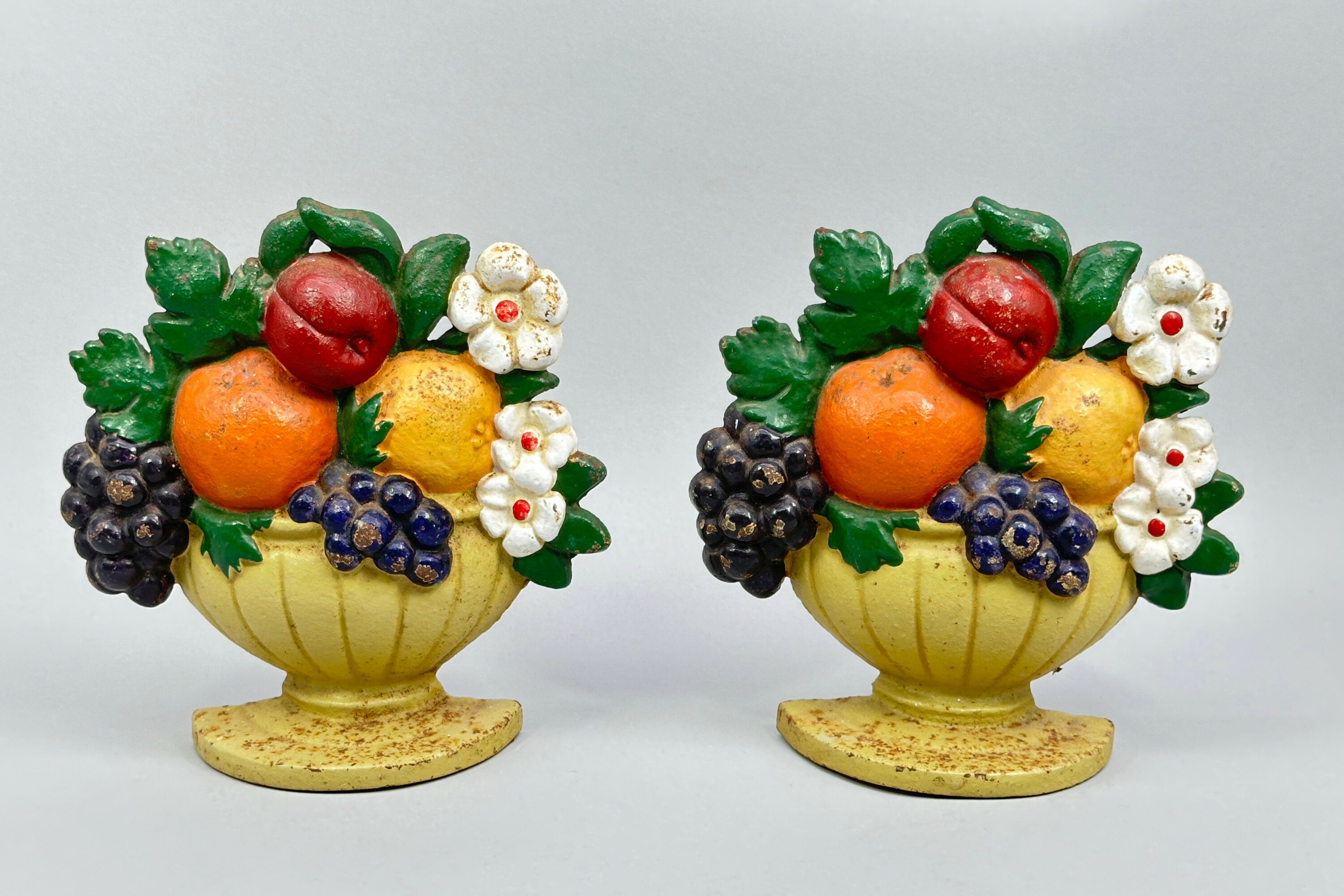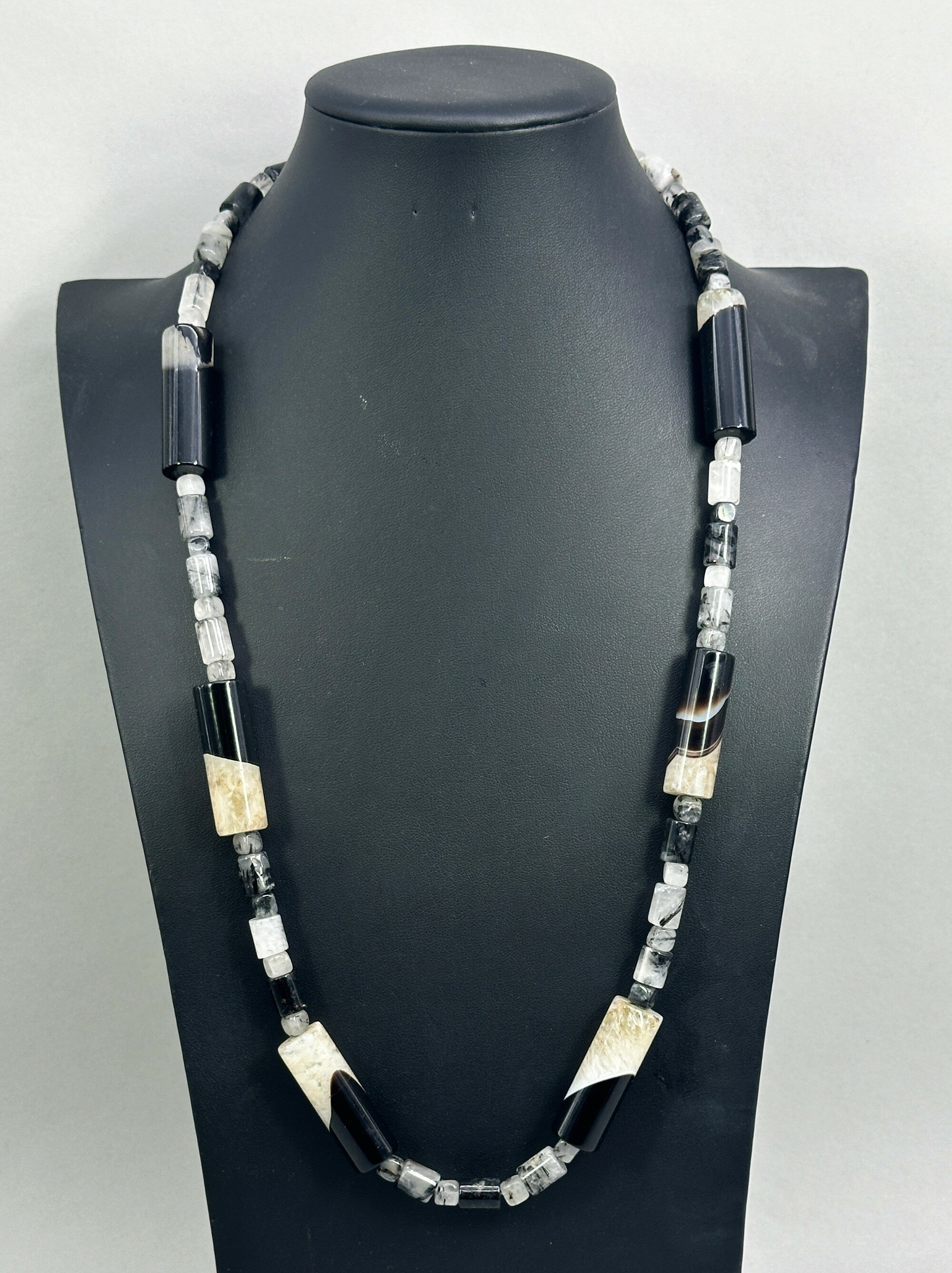
Monochrome tubular bead necklace, Modern
Price: £95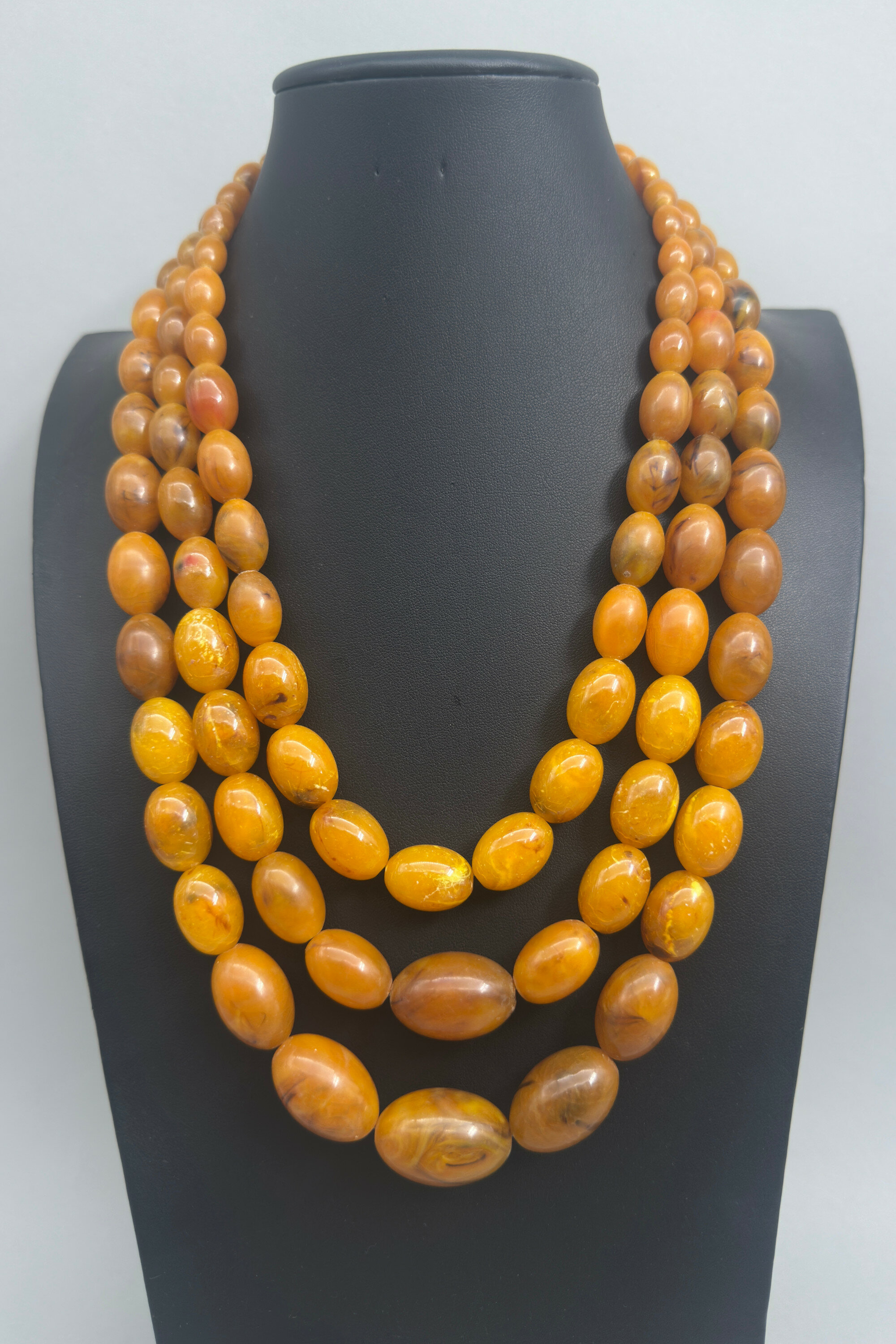
Triple strand of amber Bakelite beads, British 1930s
Price: £750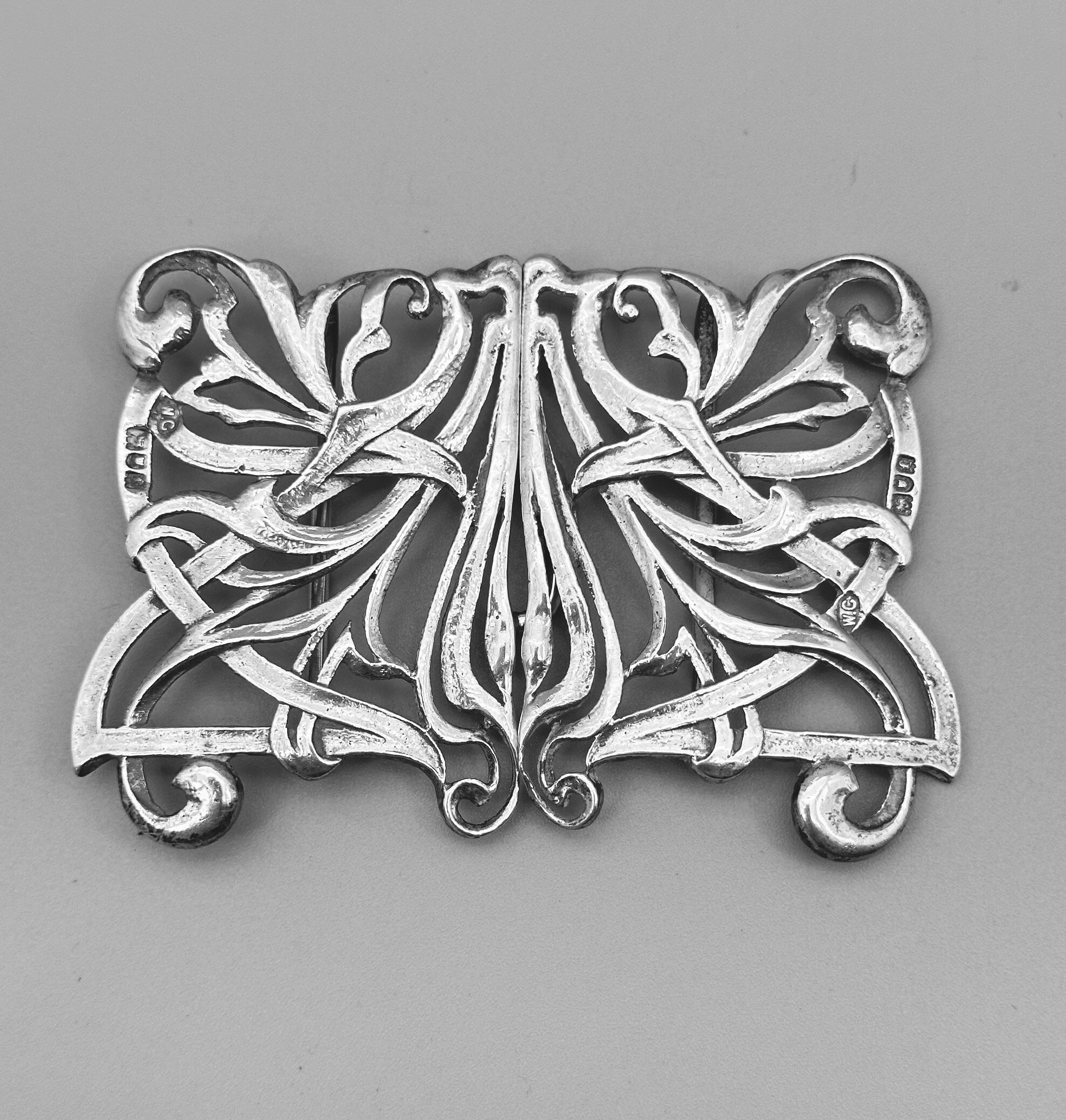
Art Nouveau William Comyns silver buckle, 1901
Price: £250William Comyns founded the company in 1858. He initially operated from the former premises of silversmith Robert Tagg at 2 Carlisle Street, Soho, London, where he registered his first maker’s mark (W.C in a four-tipped oval) in 1859. Comyns’ silverware was retailed by some of the world’s most prestigious firms, including Tiffany & Co., The Goldsmiths & Silversmiths Company, and leading London retailers such as Henry Lewis and Howell & James.
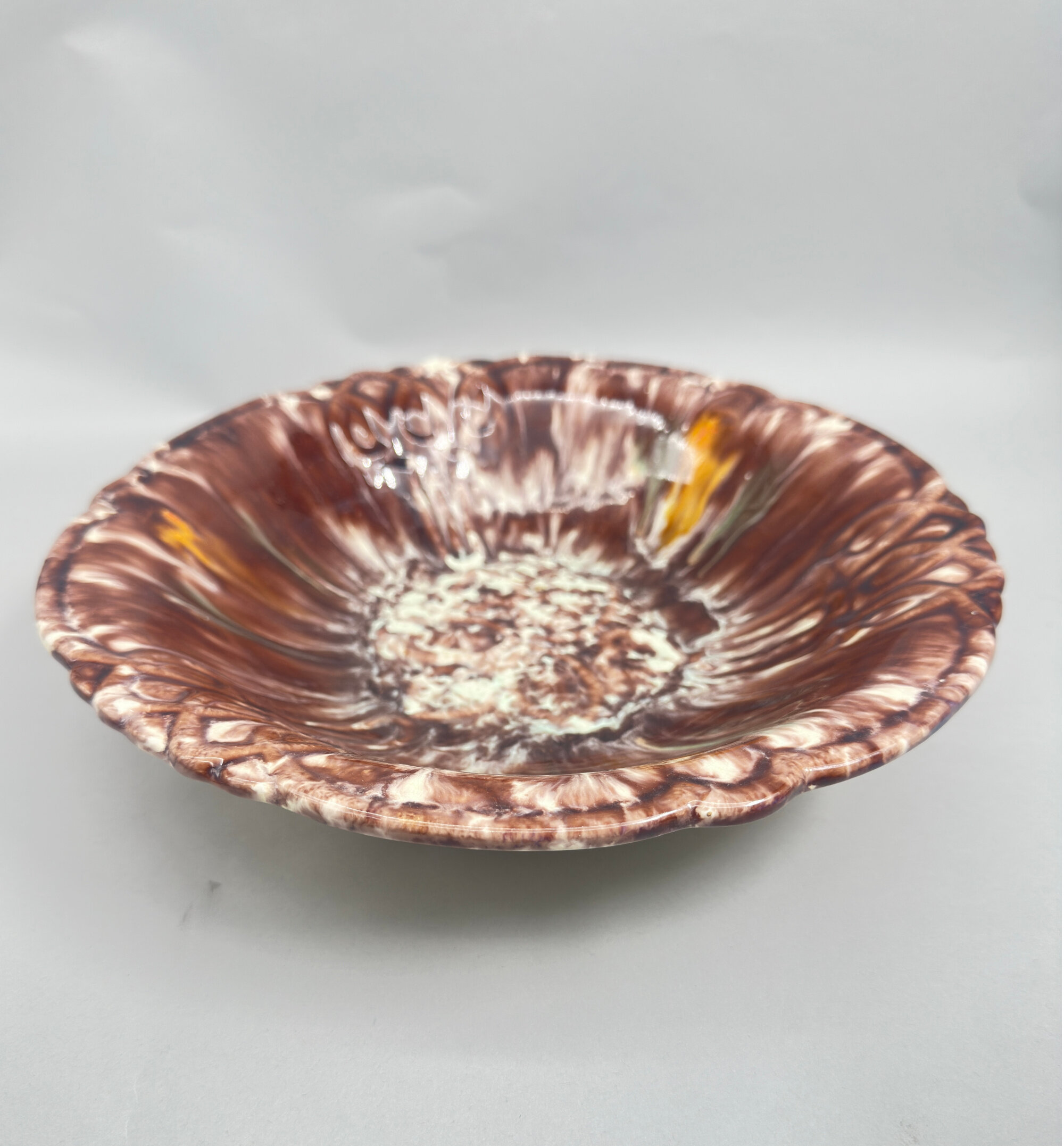
Majolica Footed Fruit Bowl, Germany, 1930s
Price: £55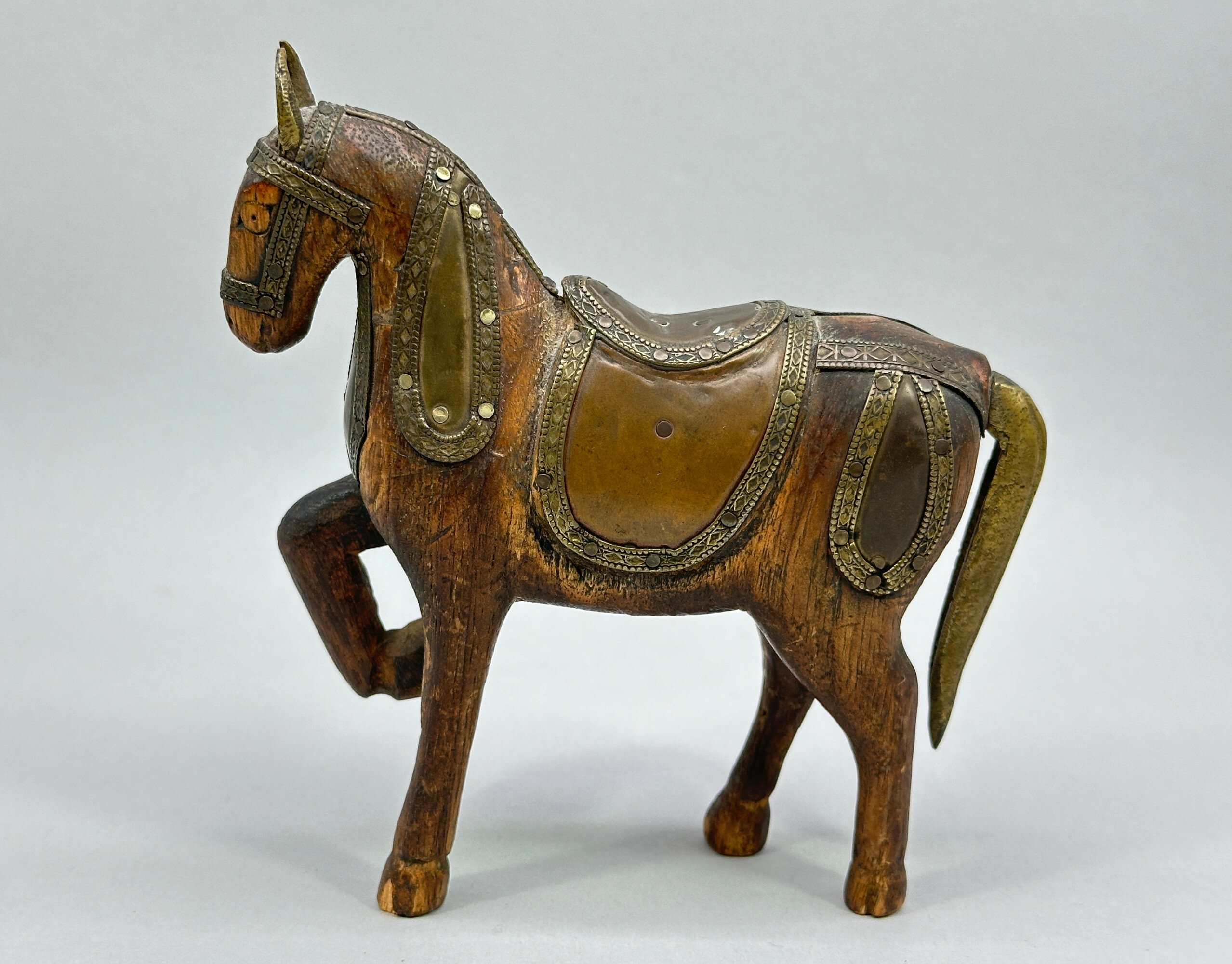
Indian wooden toy model of a Horse with metal fitments, early C20th
Price: £25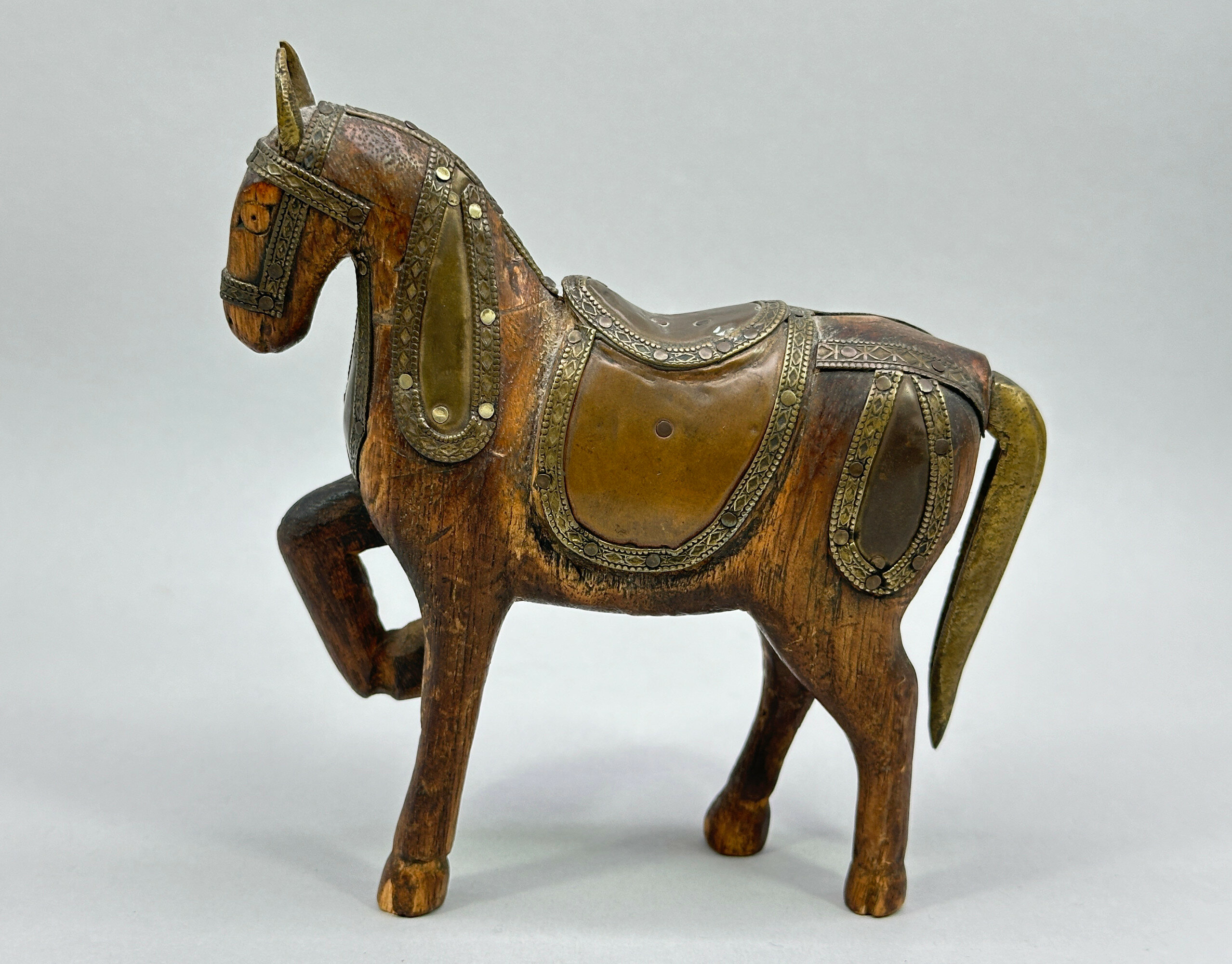
Indian wooden toy model of a Horse with metal fitments, early C20th
Price: £25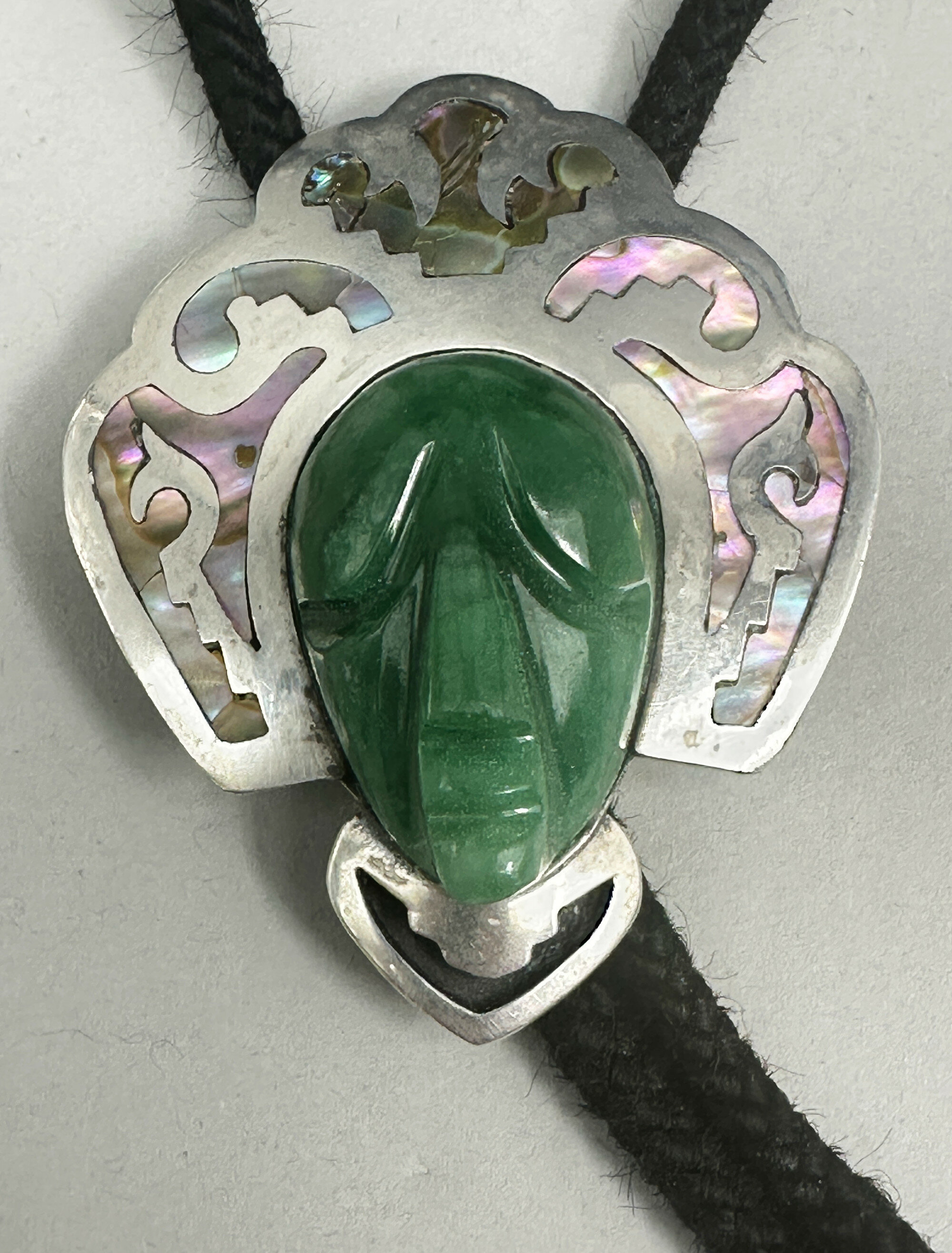
Mexican Silver Bolo Tie with Aztec mask Head, Taxco, c1950
Price: £125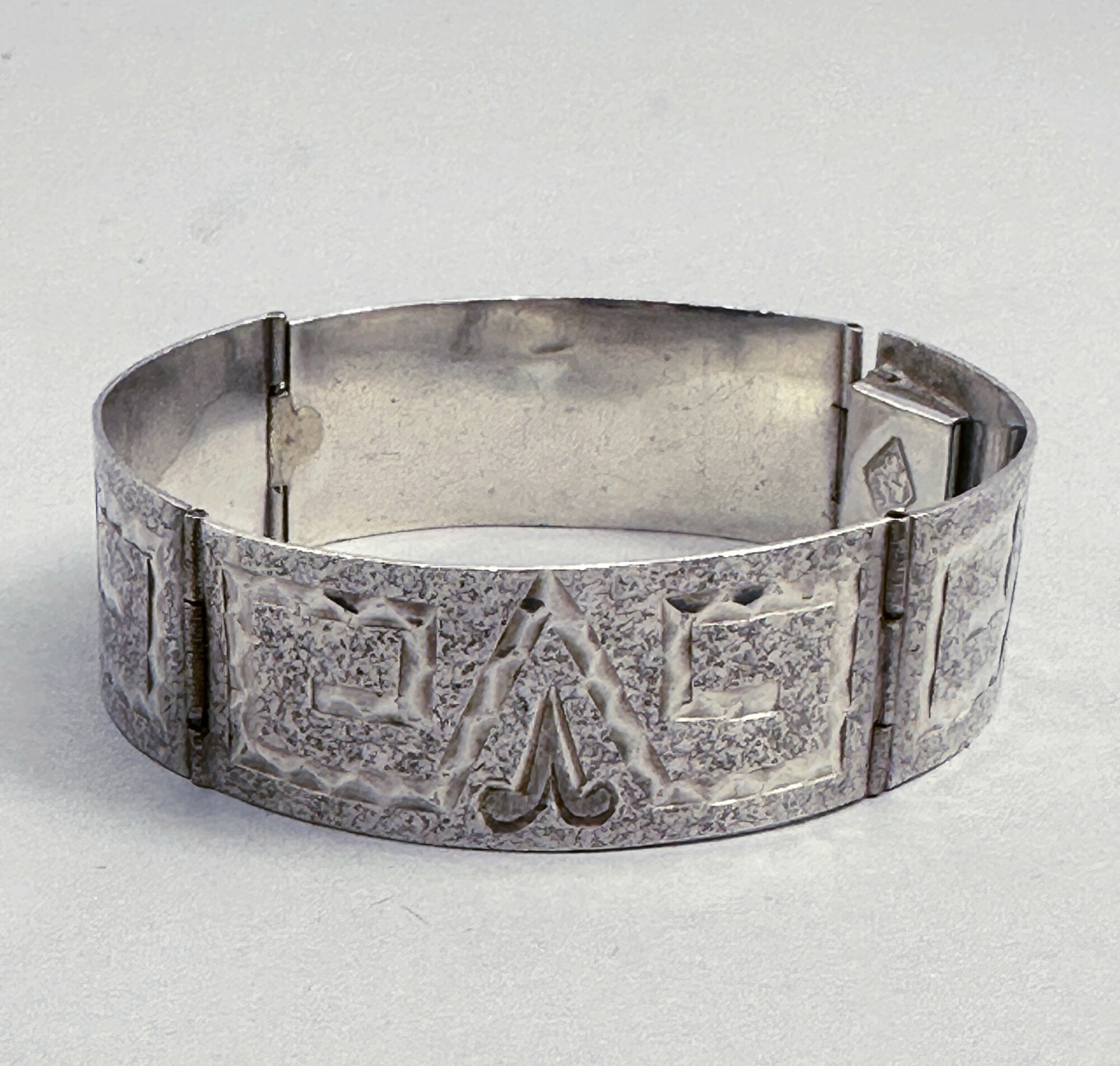
Mexican Silver Bracelet with Aztec Designs, Taxco, 1950s
Price: £65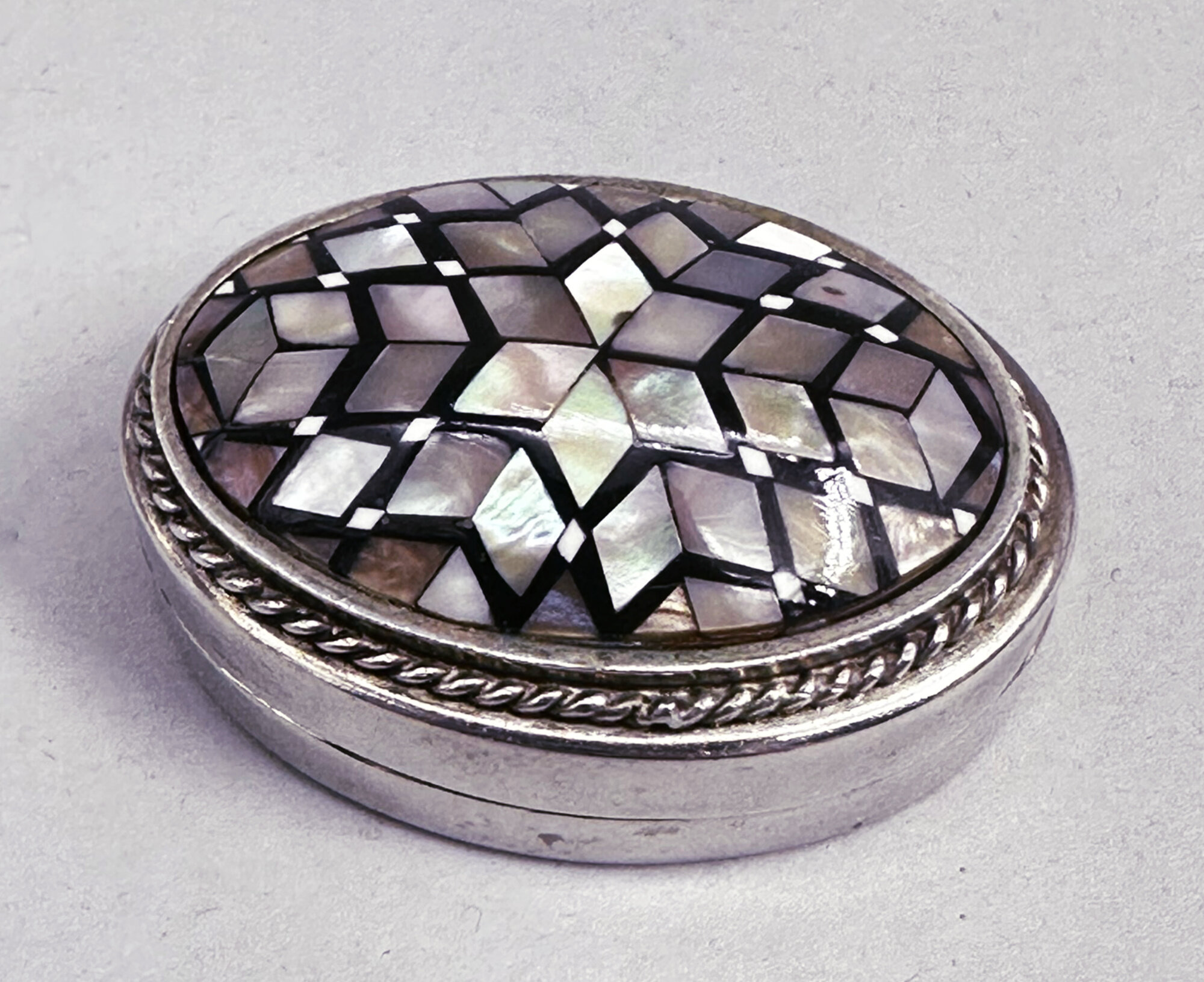
Egyptian Silver Pill Box with Mother of Pearl Inlay, marked, second half C20th
Price: £45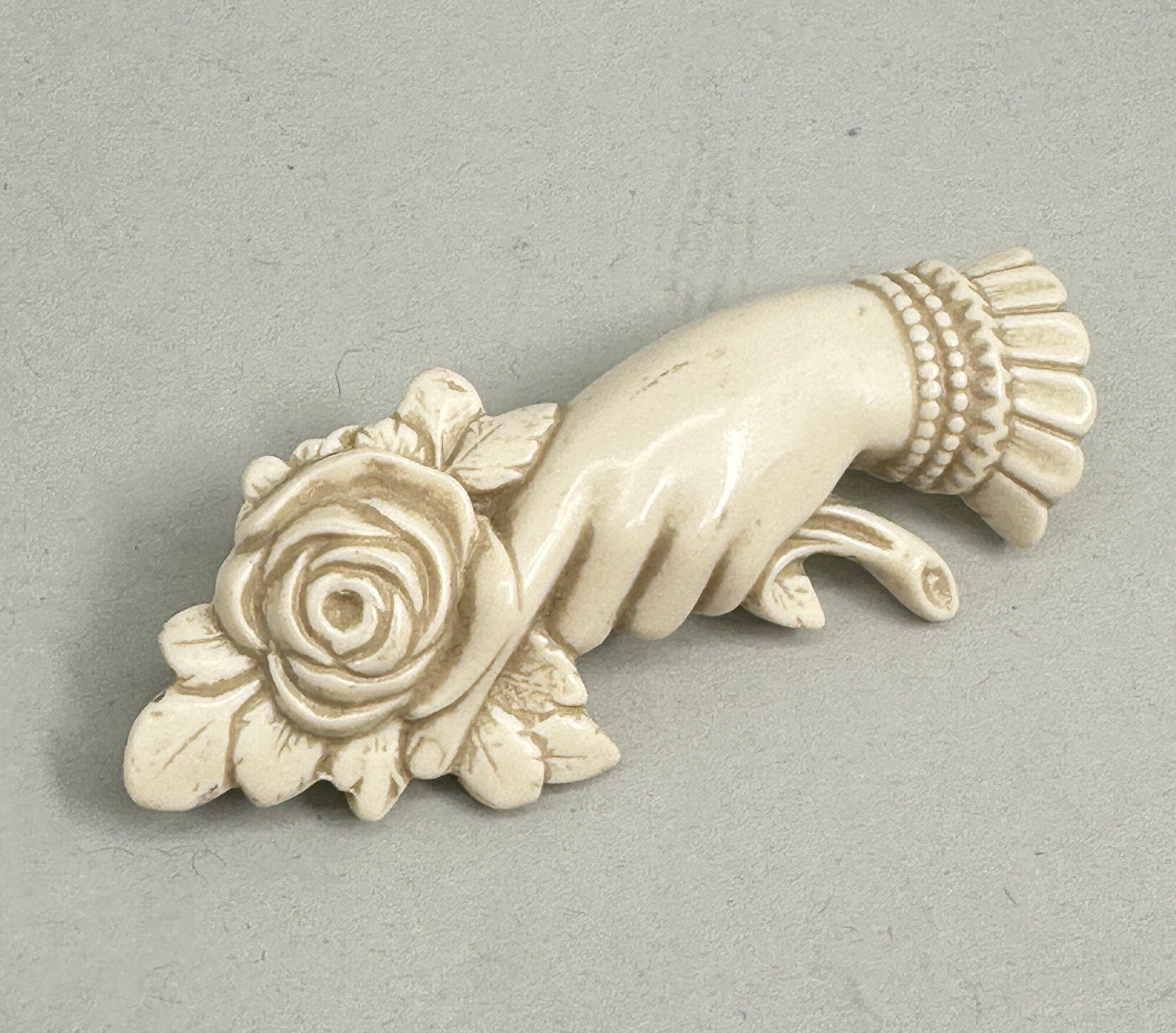
Bakelite Ivorine Mourning Brooch, British c1930
Price: £25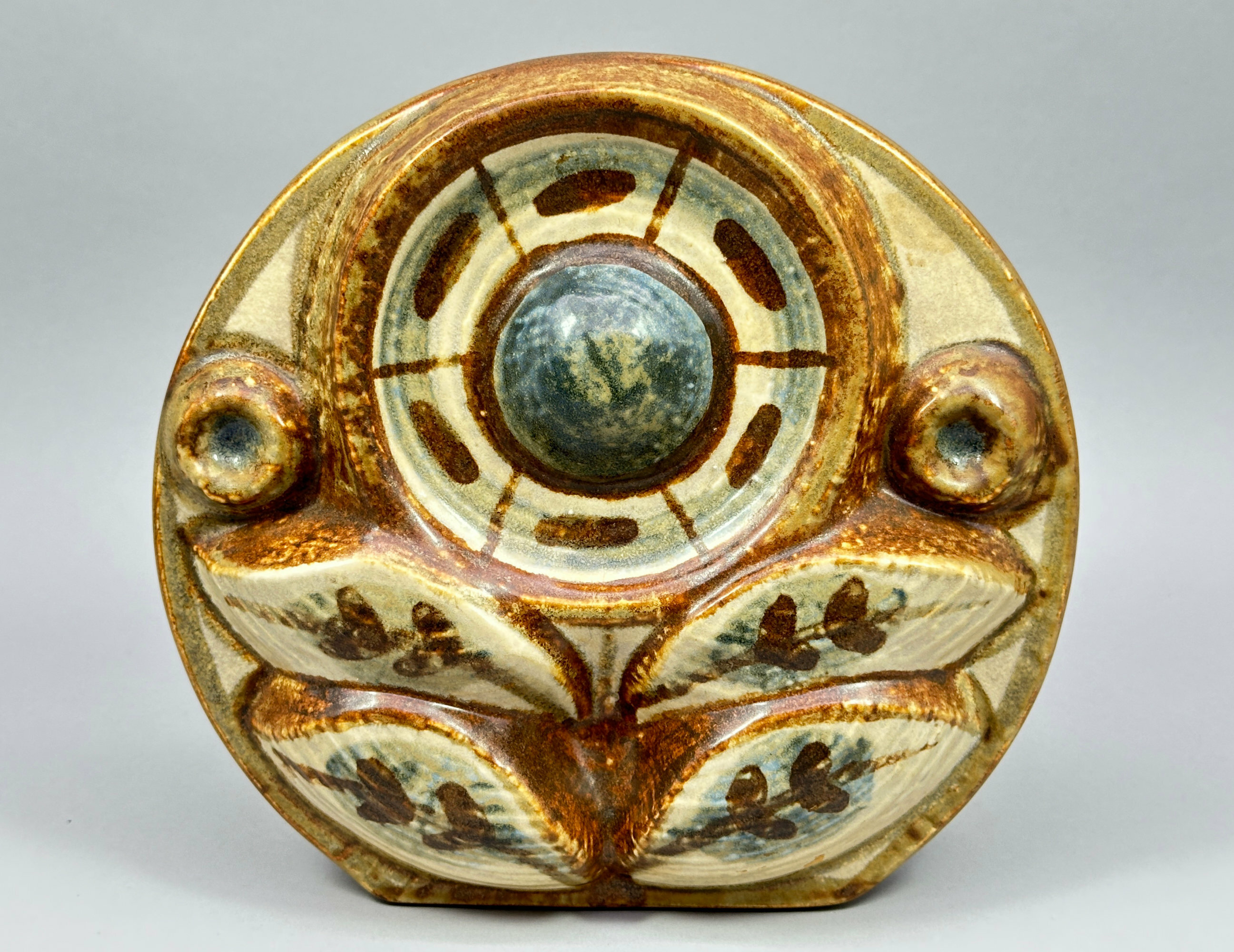
Wall Vase, designed by Noomi Backhausen, Søholm Stentøj, Denmark, late C20th
Price: £95The company Søholm Stentøj was founded by Herman Sonne Wolffsen and Edvard Christian Sonne in 1835 at Rønne, the principal town of Bornholm, a Danish island off the south coast of Sweden. One of the most respected of the Danish potteries it continued producing a wide range of ceramics until the firm closed in 1996. Noomi Backhausen was a designer for Søholm from 1966 to 1990 and set up her own pottery in Rønne in 1996 after the closure of her old employers. This wall vase is a typical example of her abstract organic designs and would be a worthy addition to a collection of twentieth century Danish design.
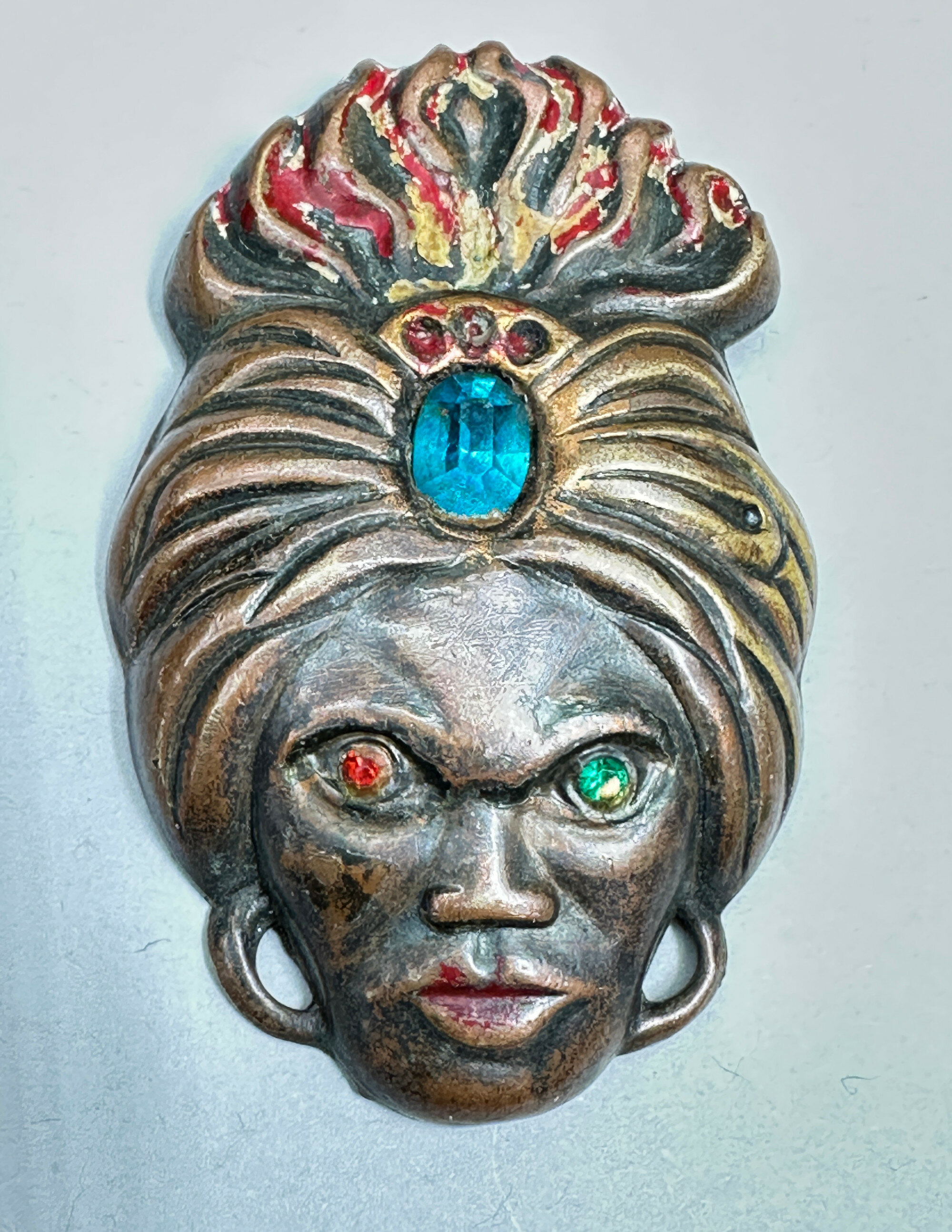
1001 Arabian Nights Brooch c1930
Price: £15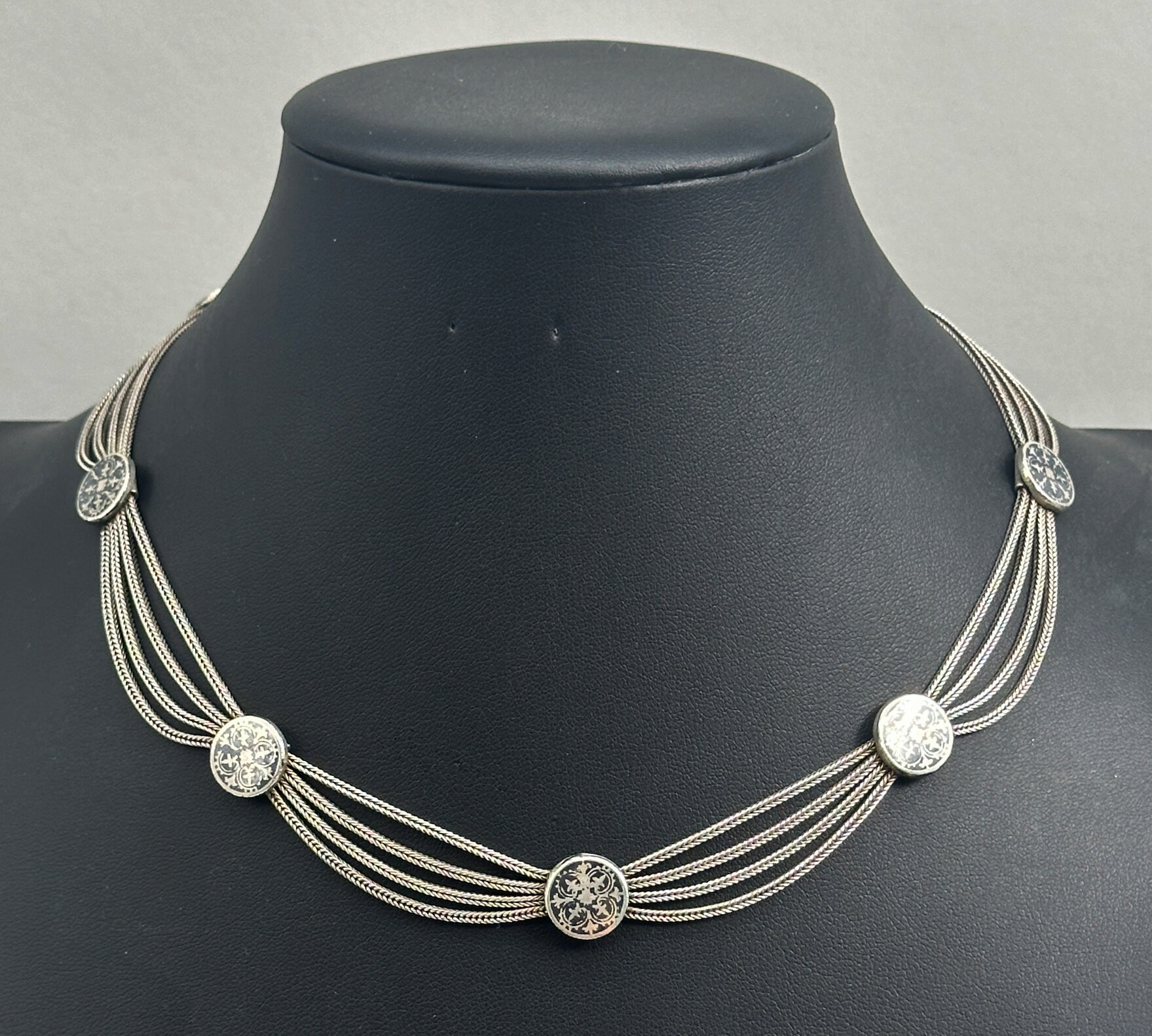
Islamic Silver Necklace with Niello work plaques, c1930
Price: £75The technique used is that of ‘niello’ work. (The word derives either from the classical Latin word ‘nigellum’ or the later mediaeval words ‘nigello’ or ‘neelo’.) Niello is a black mixture, usually of sulphur, copper, silver, and lead and used as an inlay on engraved or etched metal, especially silver. Added as a paste, it hardens to a black colour after firing and is then polished. Here it is the ground that formed from niello while the design shows though in silver, a less common version.
There is much skill in the craftsmanship here and the result is a piece of classic and timeless simplicity.
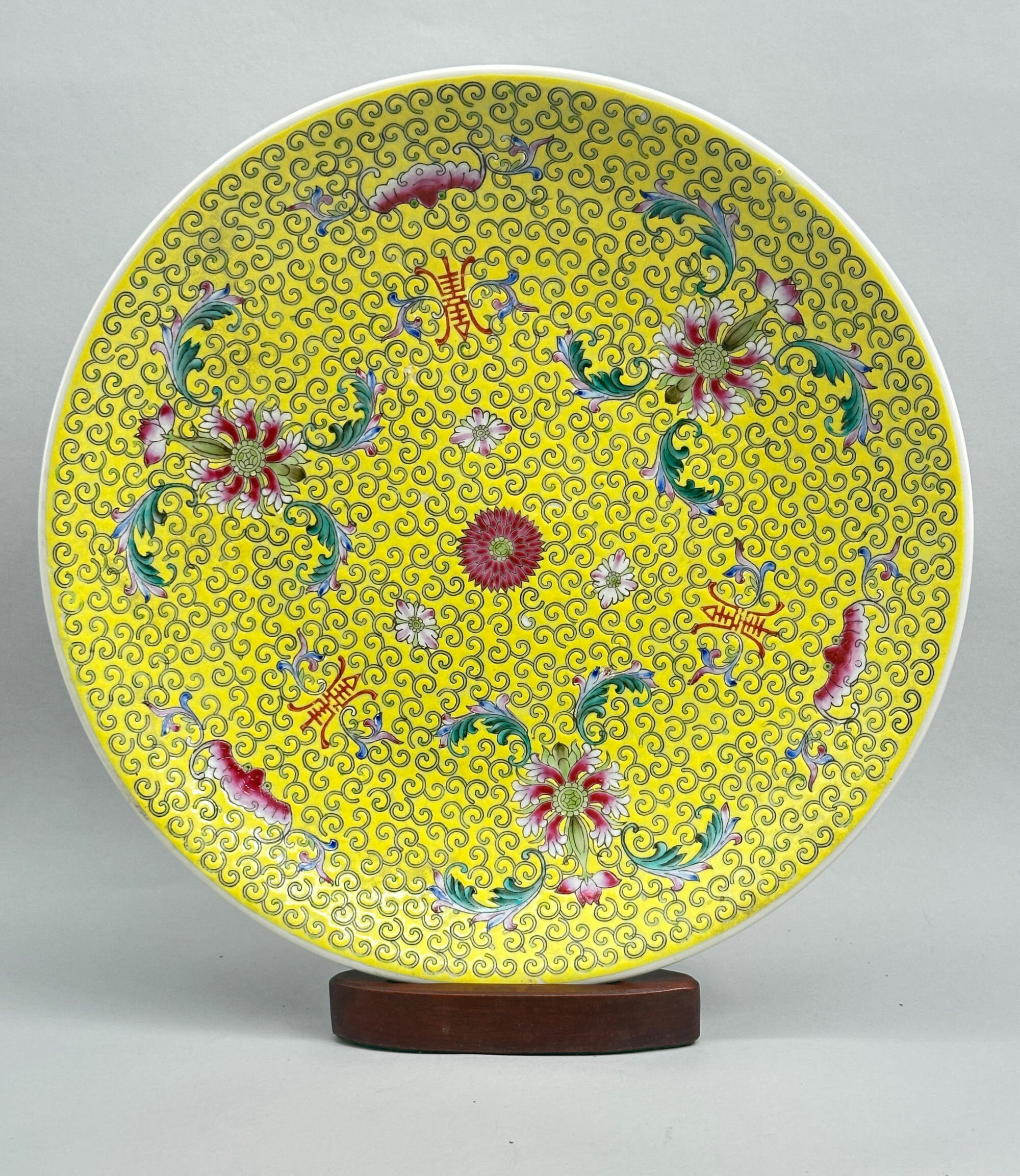
Chinese Yellow Ground Famille Rose Charger, 1950s/early 1960s
Price: £55This is a fine example of the porcelains made at Jingdezhen, for centuries the chief centre of ceramic production in China, in the early years of the People’s Republic of China (1949-). Soon after the communists took control, the kilns at Jingdezhen were organised into co-operatives, each with a number. Many of their pieces were marked and the form of the mark determines the date of production. The circular marks, as here, were the earliest allowing a dating of this charger to the 1950s or possibly the early 1960s. Some of these conglomerates, for the quality can vary, retained the skills of their predecessors and produced works of high quality. This is clearly seen here in the careful and precise enamelling and the general artistry of the design employing ‘imperial’ yellow with the symbolism of happiness (bats), longevity (shou symbols), friendship and a life of ease (chrysanthemum) and fruitfulness and offspring (lotus), all combining to produce a piece well worthy of its many predecessors.
Please note that the wood stand is for display purposes only and is not incuded with this lot.
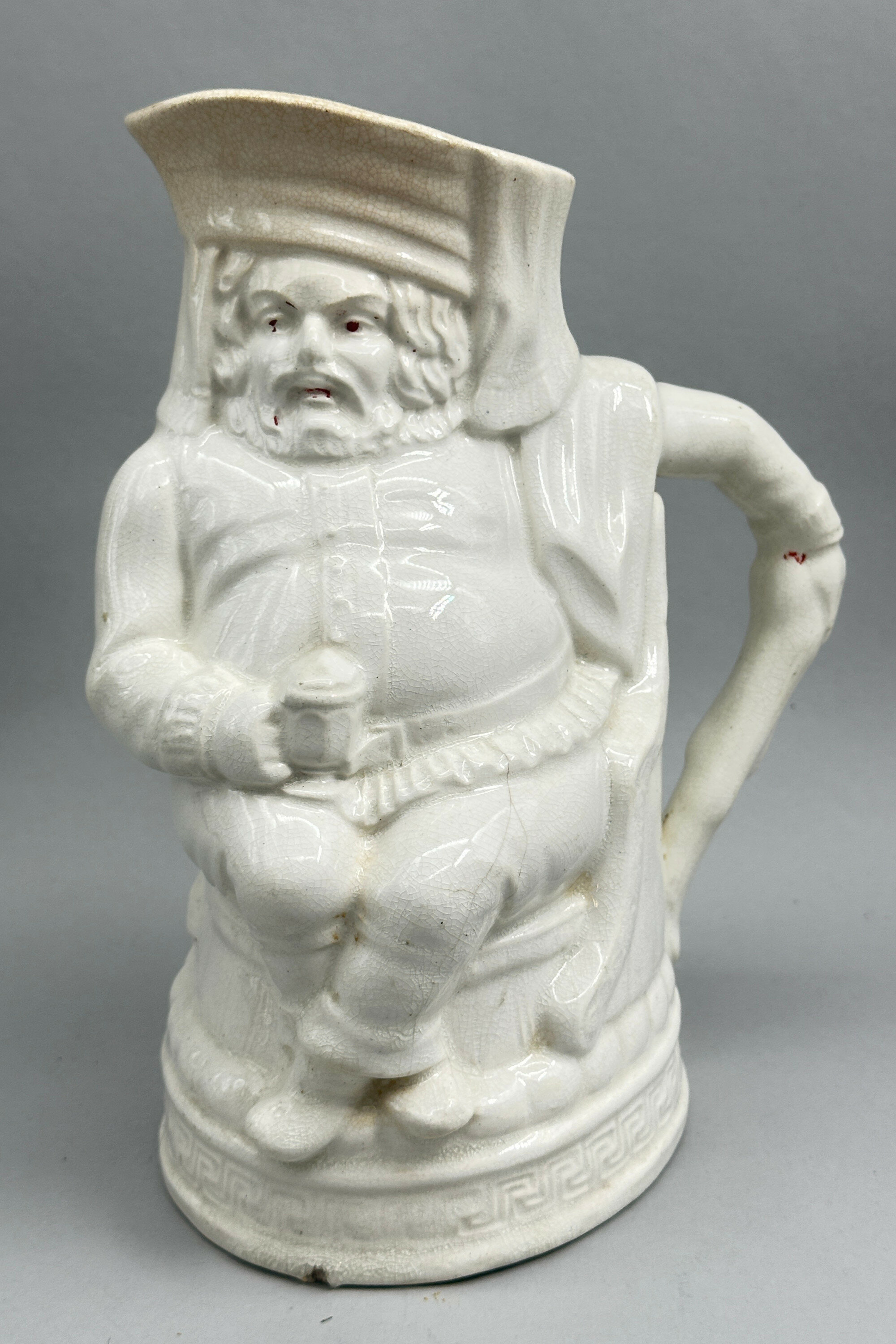
Earthenware Jug, Falstaff or Old King Cole, Furnival and Clark, mid C19th
Price: £75The design for this jug, usually termed ‘Falstaff’ but sometimes ‘Old King Cole’ is known to have been registered (Rd.No. 32601)by the firm Furnival and Clark on December 30th 1845. This was a very short lived partnership between Thomas Furnival and Richard Clark, based at the Stafford Street Pottery Works, Hanley, Staffordshire and which traded from 1844 to 1846 apparently producing just this one model, albeit in a variety of colours. Thomas Furnival had been involved in other firms before this brief venture and was to be involved in others afterwards. The dating of these mugs is usually attributed to the short period when Furnival and Clark traded but it is quite possible that more pieces were produced afterwards by Furnival himself. The paste and finish of this piece, though, which is not marked, certainly suggest a mid nineteenth century dating. In general, the model is quite rare. Some examples were fitted with a Britannia metal or pewter lid but this was never integral to the piece. This striking composition, then, is a rare and desirable item collectors with an interest in British Staffordshire wares.
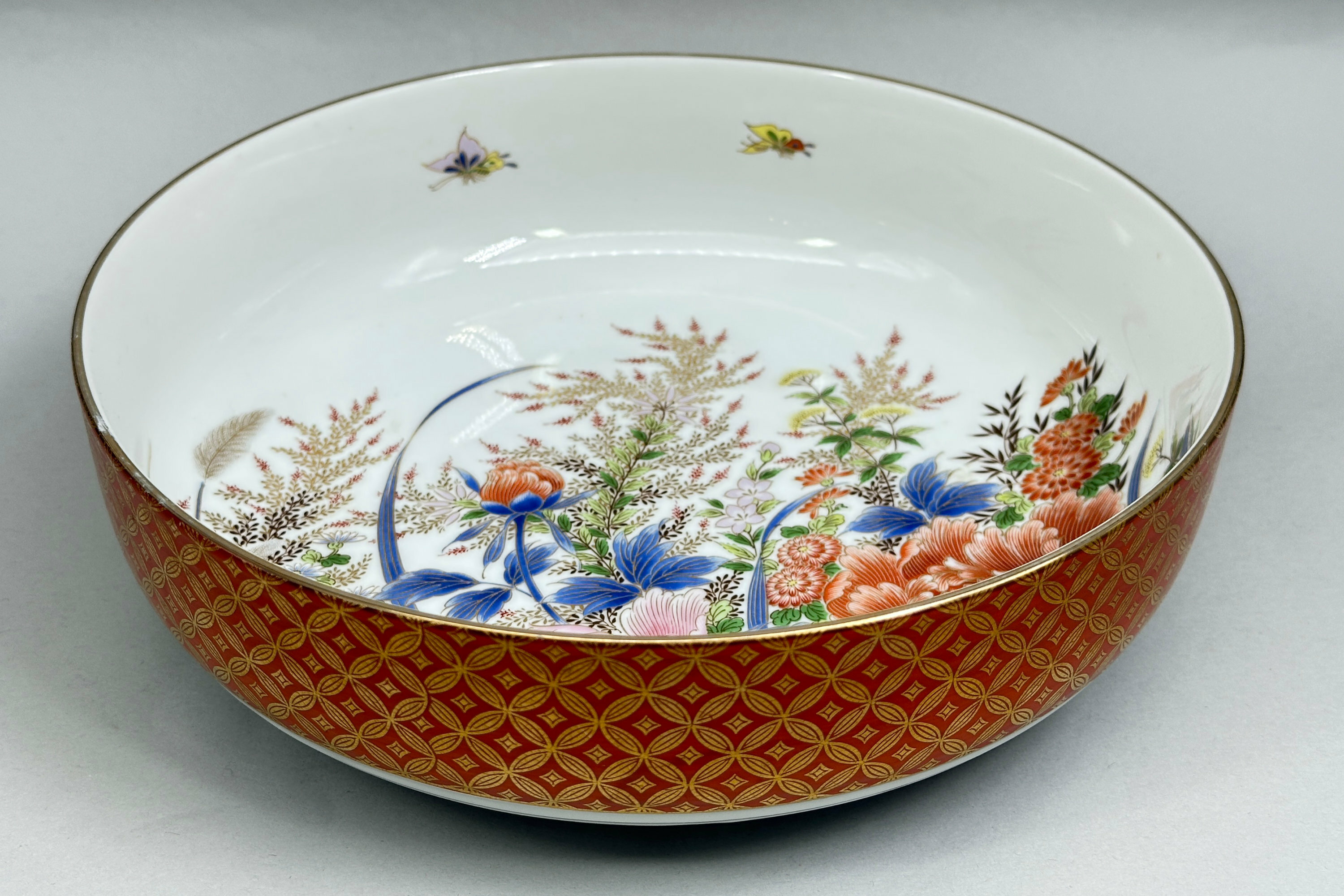
Japanese Polychrome Bowl, Shibata Toki ware, late c20th
Price: £45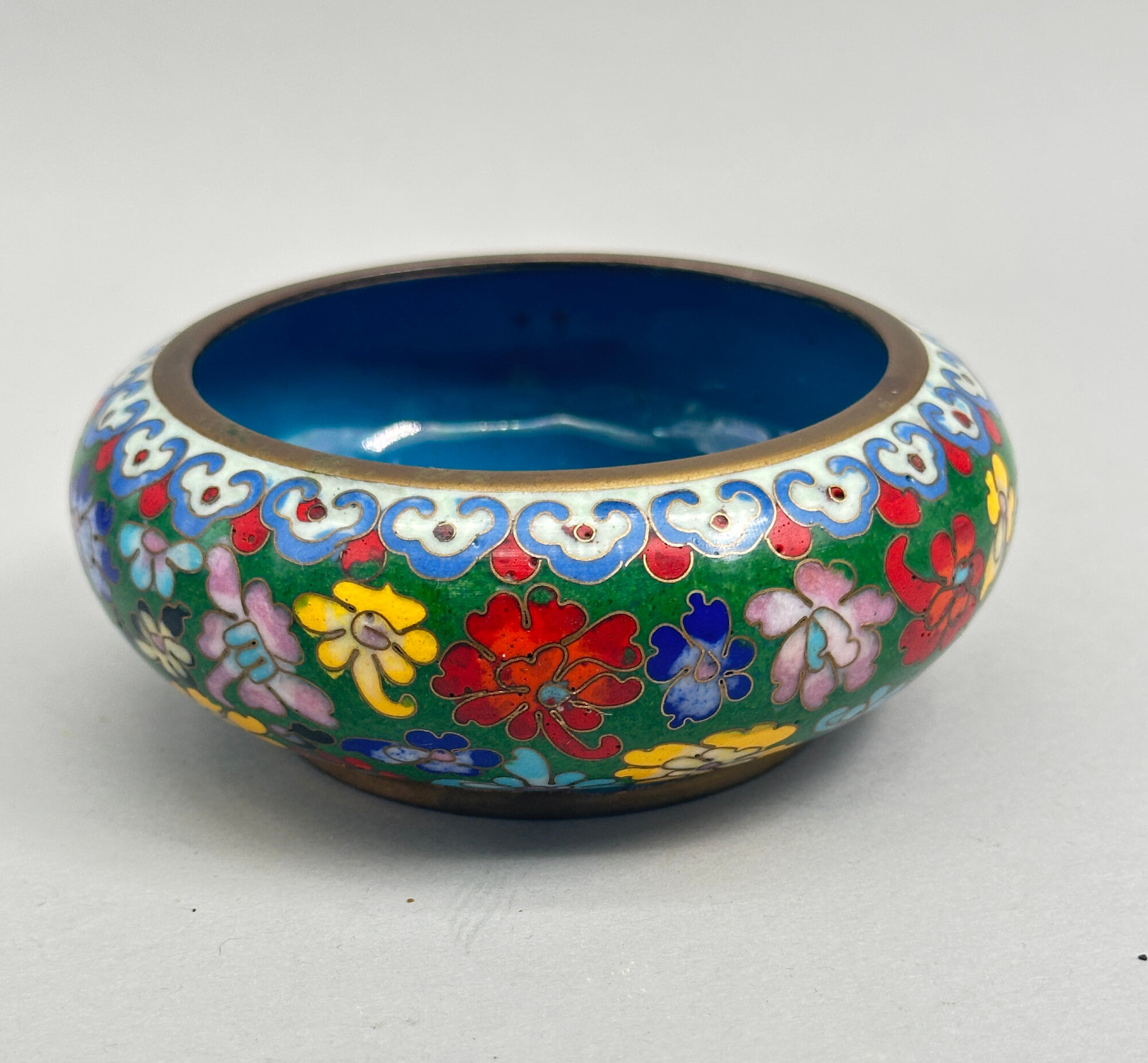
Chinese Cloisonne Shallow Bowl, C19th
Price: £45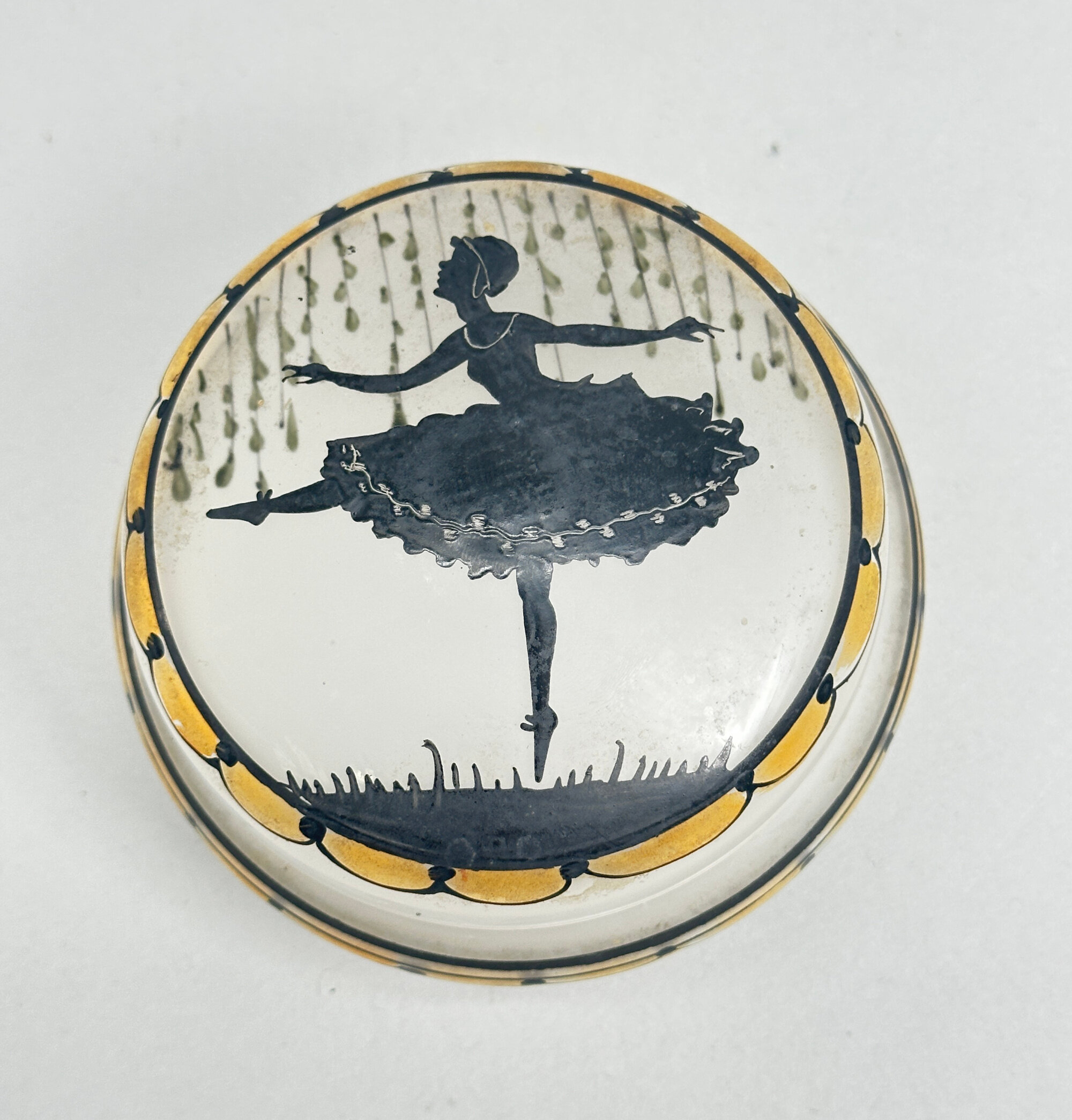
Art Deco style Glass Box and Cover decorated with a dancing Ballerina, mid C20th
Price: £35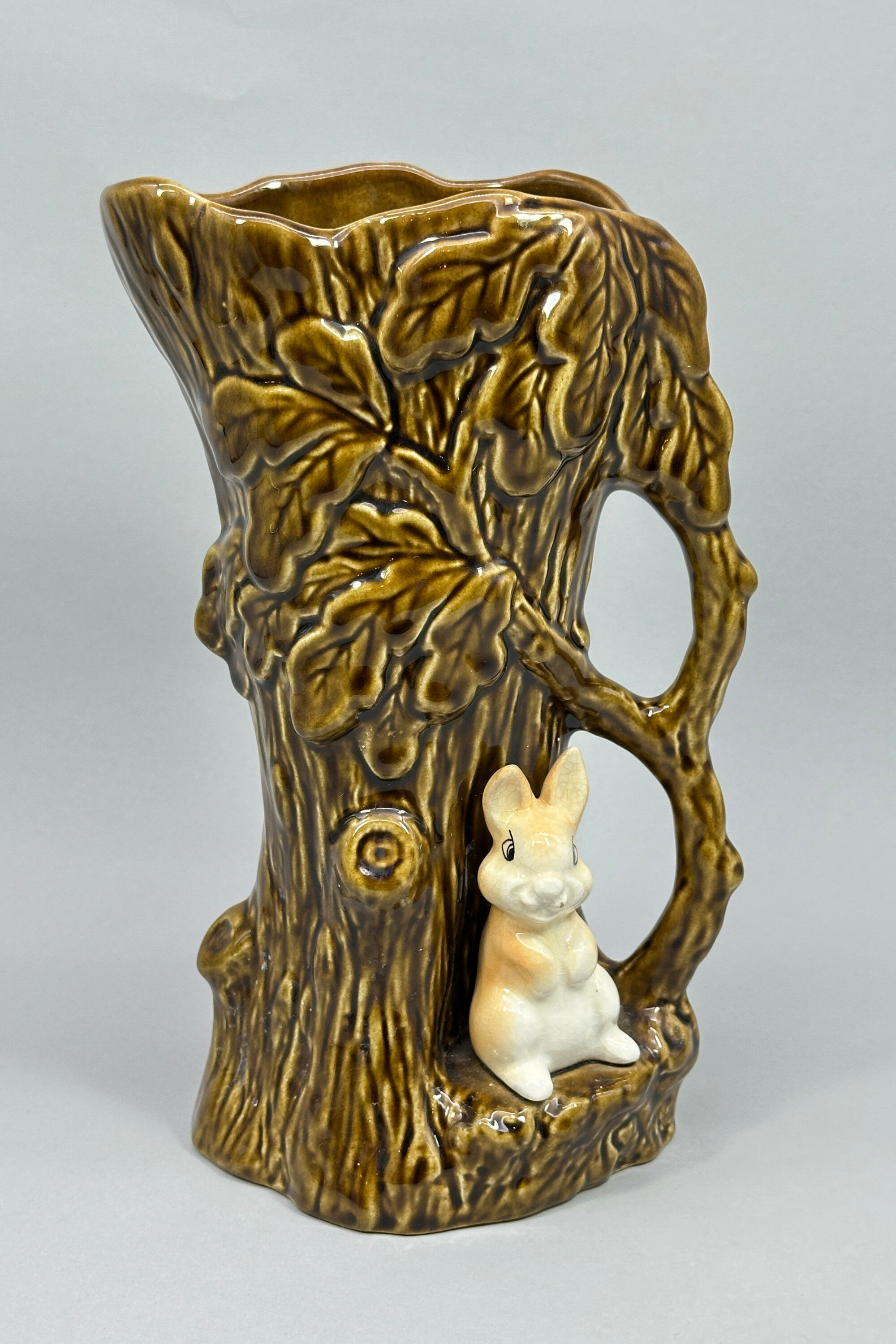
Sylvac woodland range Rabbit and Tree Jug, 1950s
Price: £35‘SylvaC’ (the name was written with a capital ‘C’ after registration of the trademark in 1938) was a trade name of Shaw and Copestake, a company formed by Mr. William Shaw and a Mr. Copestake around 1900. Mr. Copestake sold his shares to a Mr. Richard Hull after about six months of business and this partnership continued until Mr. Hull’s death in 1935. He was succeeded by his son, Mr. Richard Hull junior. In the following year, the business became a limited company. Various mergers and acquisitions followed and in the 1950s new premises were built and production expanded considerably continuing until the early 1980s when changing markets and increased competition forced the company into liquidation.
Sylvac were famous for imaginative glazed wares, particularly animals, and this jug is a typical and pleasing example of their work.
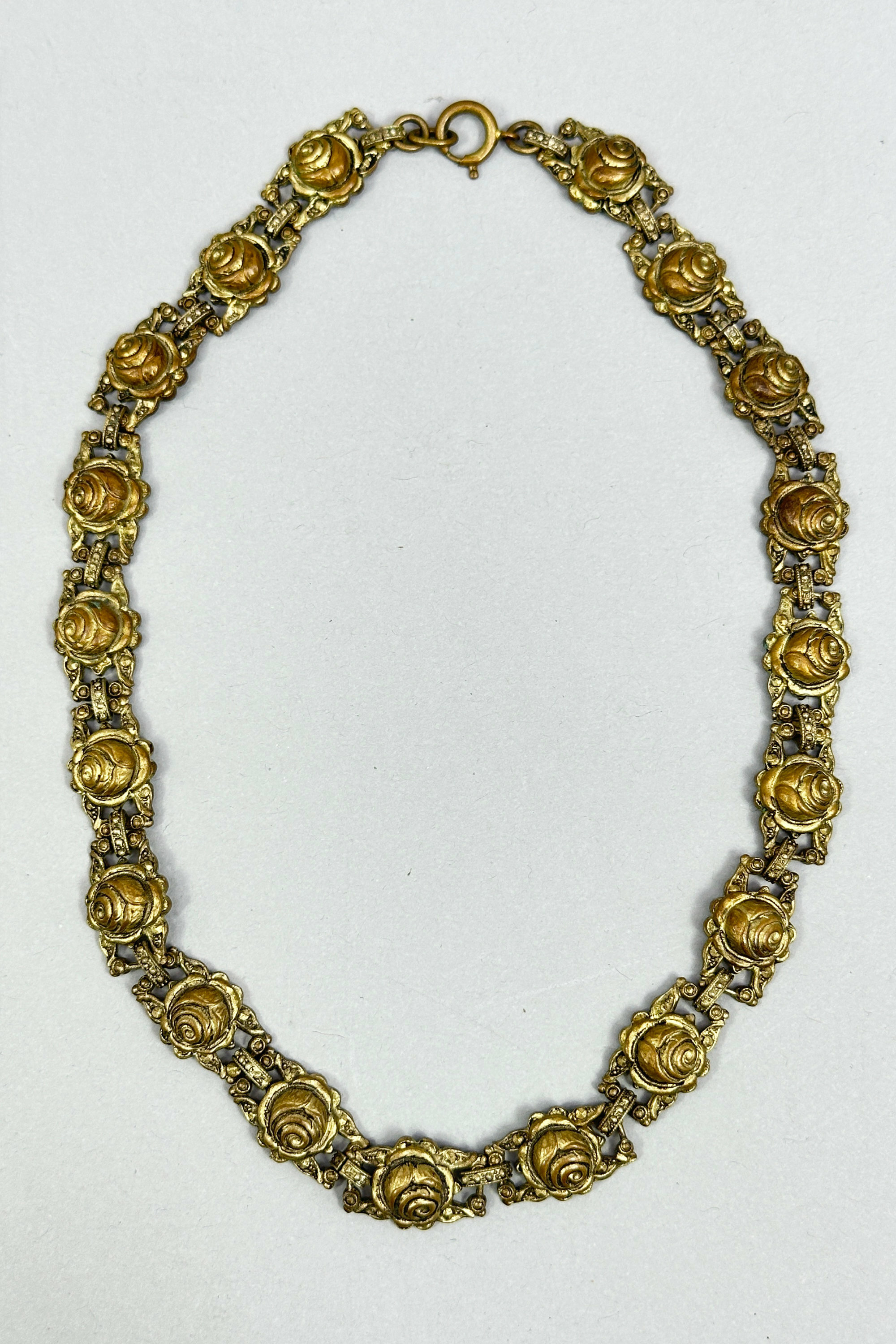
Victorian pinchbeck rosette Necklace c1900
Price: £15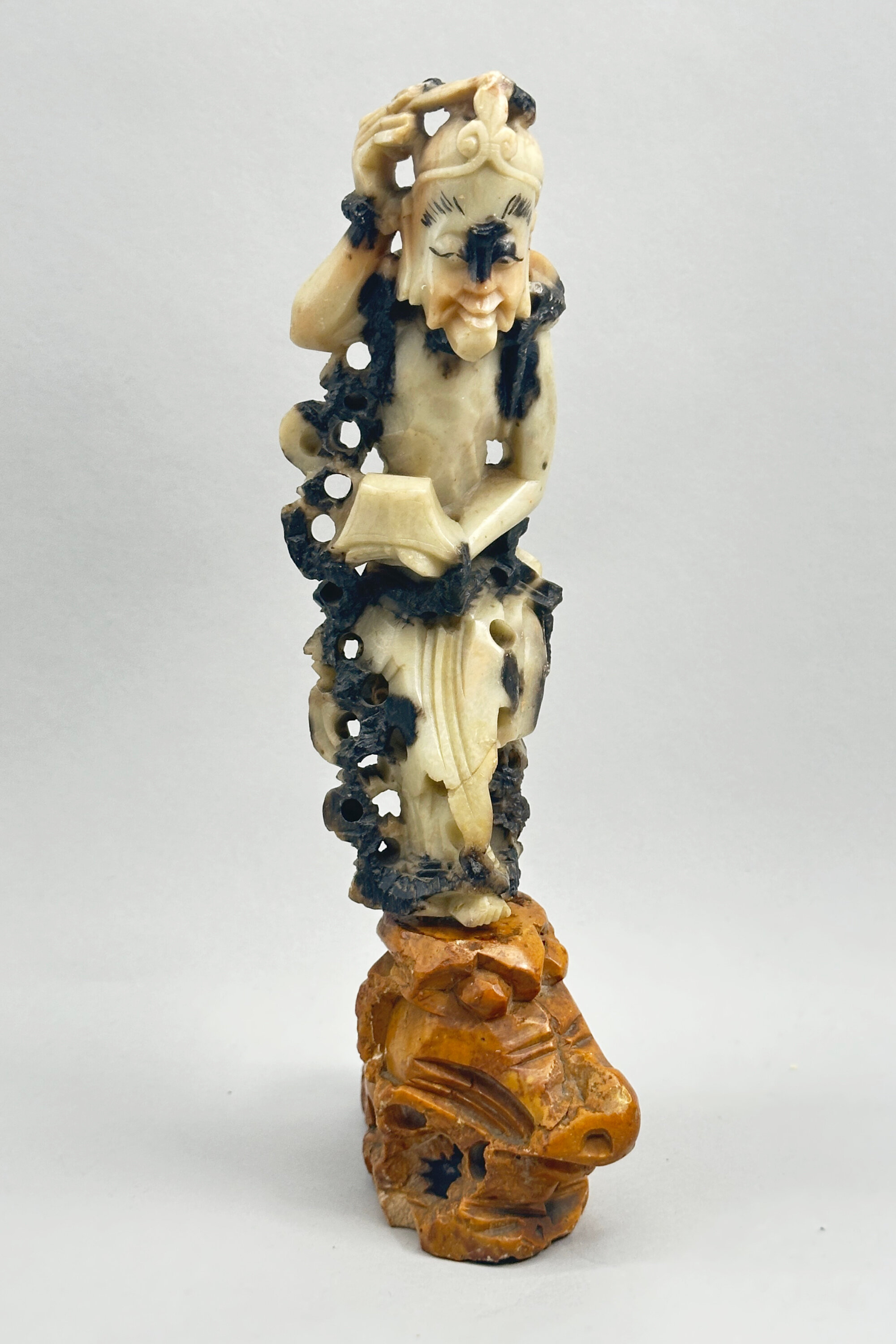
Chinese carving of a Beggar, possibly Shoushan stone, Soapstone stand, C20th
Price: £55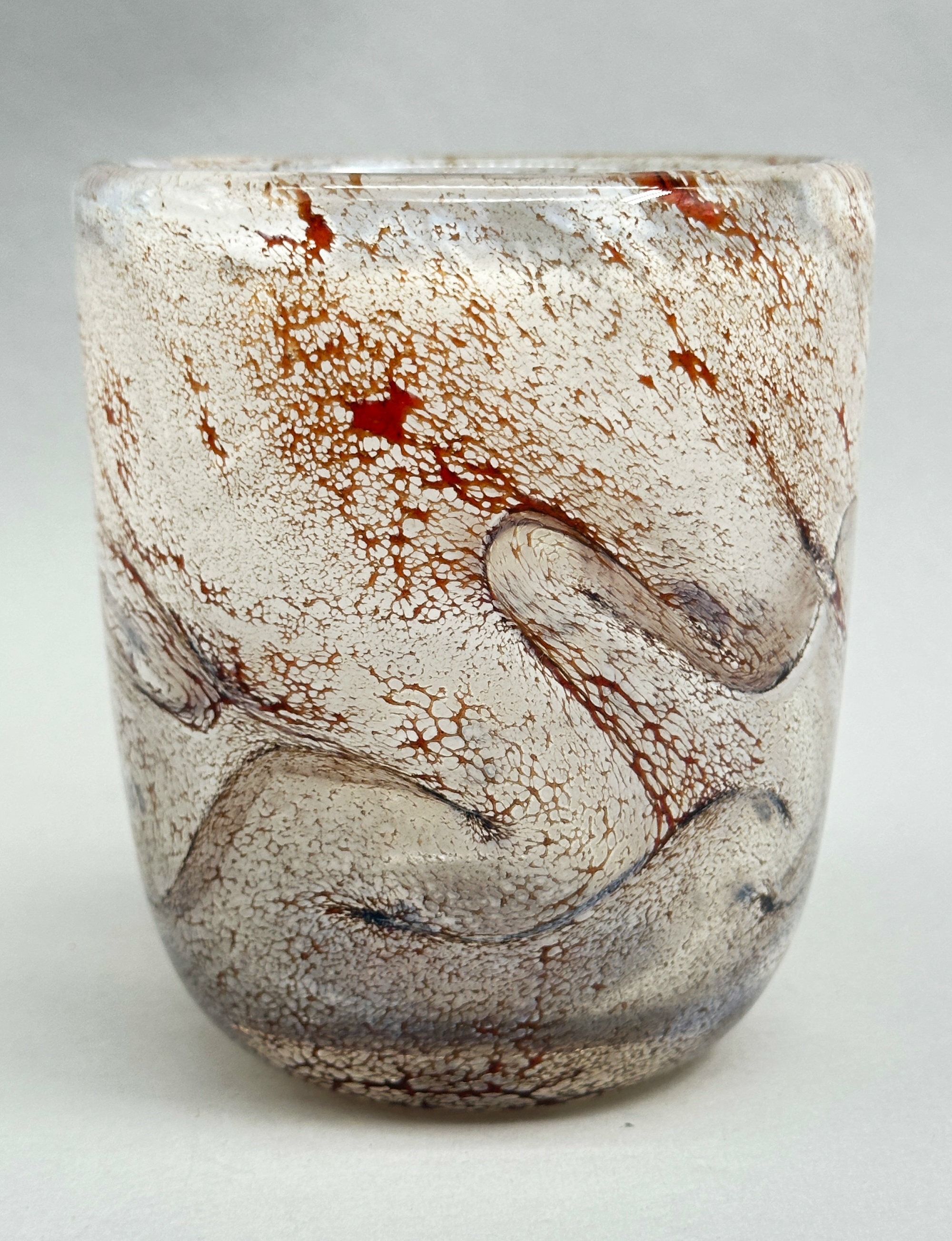
Uredale Glass Vase, late C20th/early C21st
Price: £55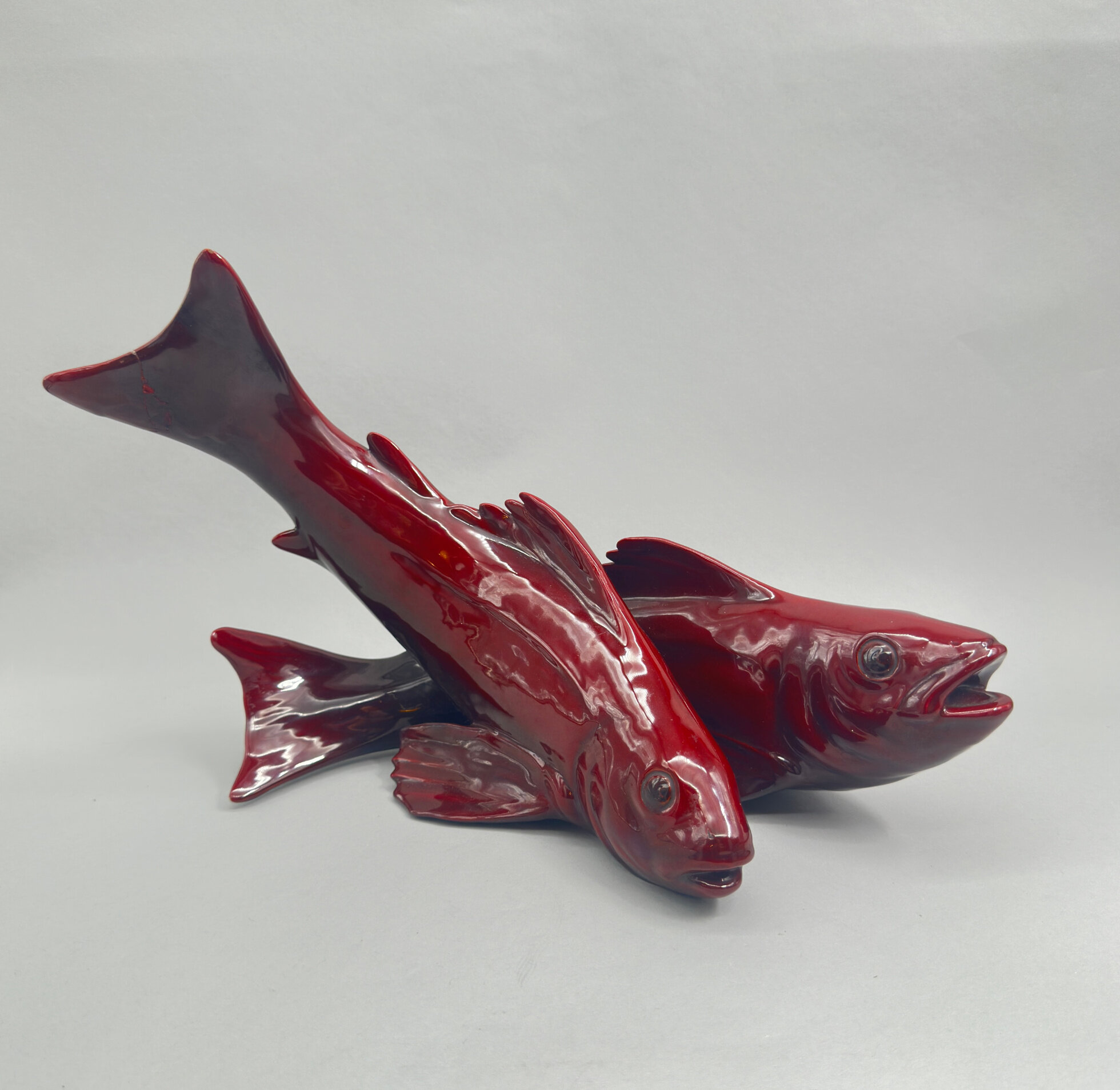
An Art Deco ceramic group of two Fish by Guido Cacciapuoti, signed, 1930s
Price: £150Guido Cacciapuoti was a celebrated Italian ceramicist. Born in Naples in 1892 and from a family with a tradition in the creation of majolica pottery, Guido exhibited his work widely in the 1920s and finally, in collaboration with his brother, Mario, and Angelo Bignami as the administrative and commercial director, he founded the factory ‘Gres d'Arte Cacciapuoti Bignami & C.' in Milan in 1927. Mario unfortunately died three years later leaving Guido to carry on on his own until his death in 1953.
In the 1930s, Guido’s workshop became famous for the production of ceramic animal sculptures with fish being a particular speciality. More commonly seen are groups of John Dory, again with a red glaze, but the smoother lines here and the particularly intense colour reflect more closely the contemporary Art Deco style. Sought after in their own time, with patrons such as the King of Italy and Mussolini, Guido’s works are highly collectible today and this group would make a striking addition to a collection of Art Deco ceramics with considerable decorative appeal.
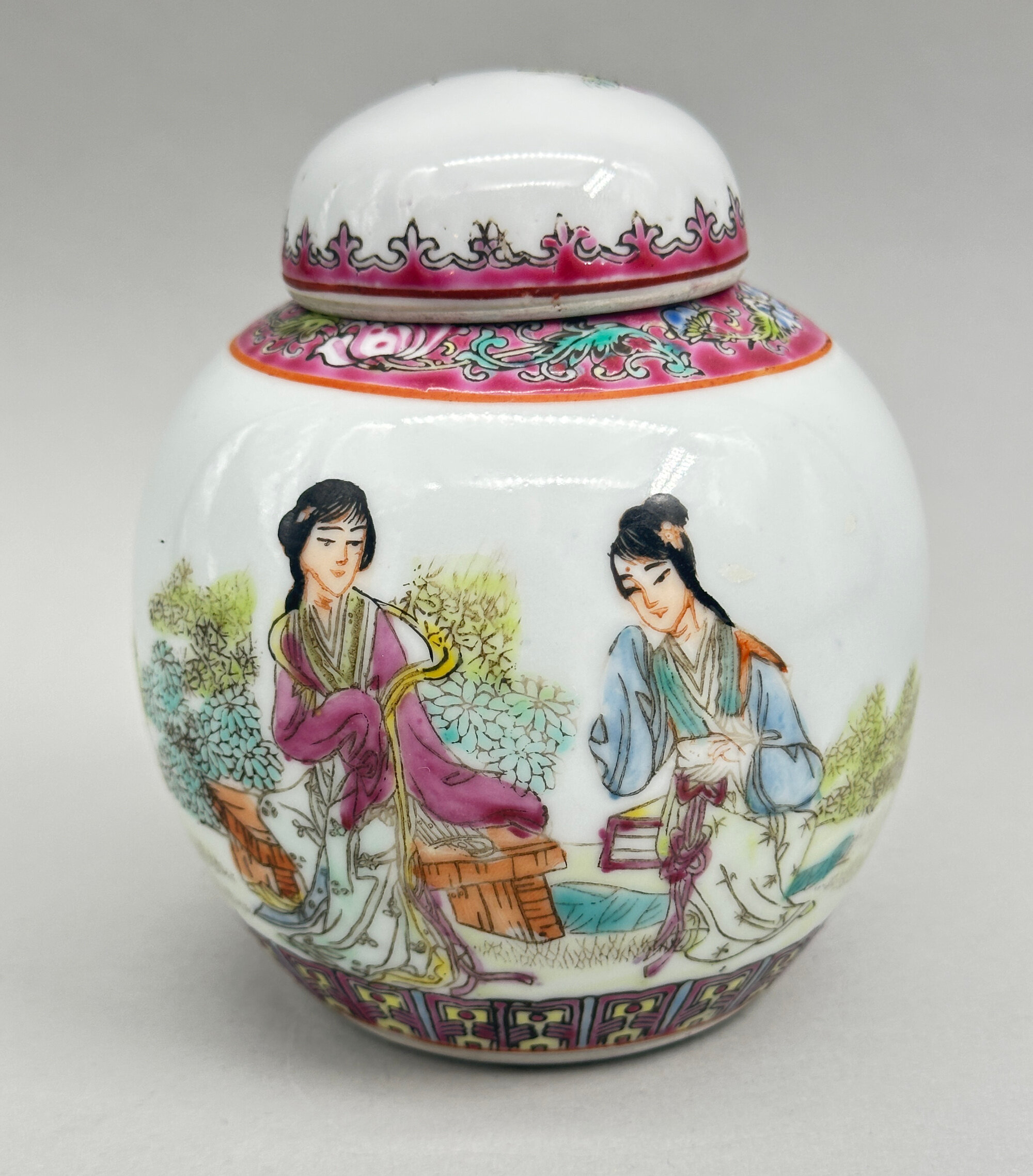
Chinese Republican Style small Famille Rose Ginger Jar and Cover, late c20th
Price: £20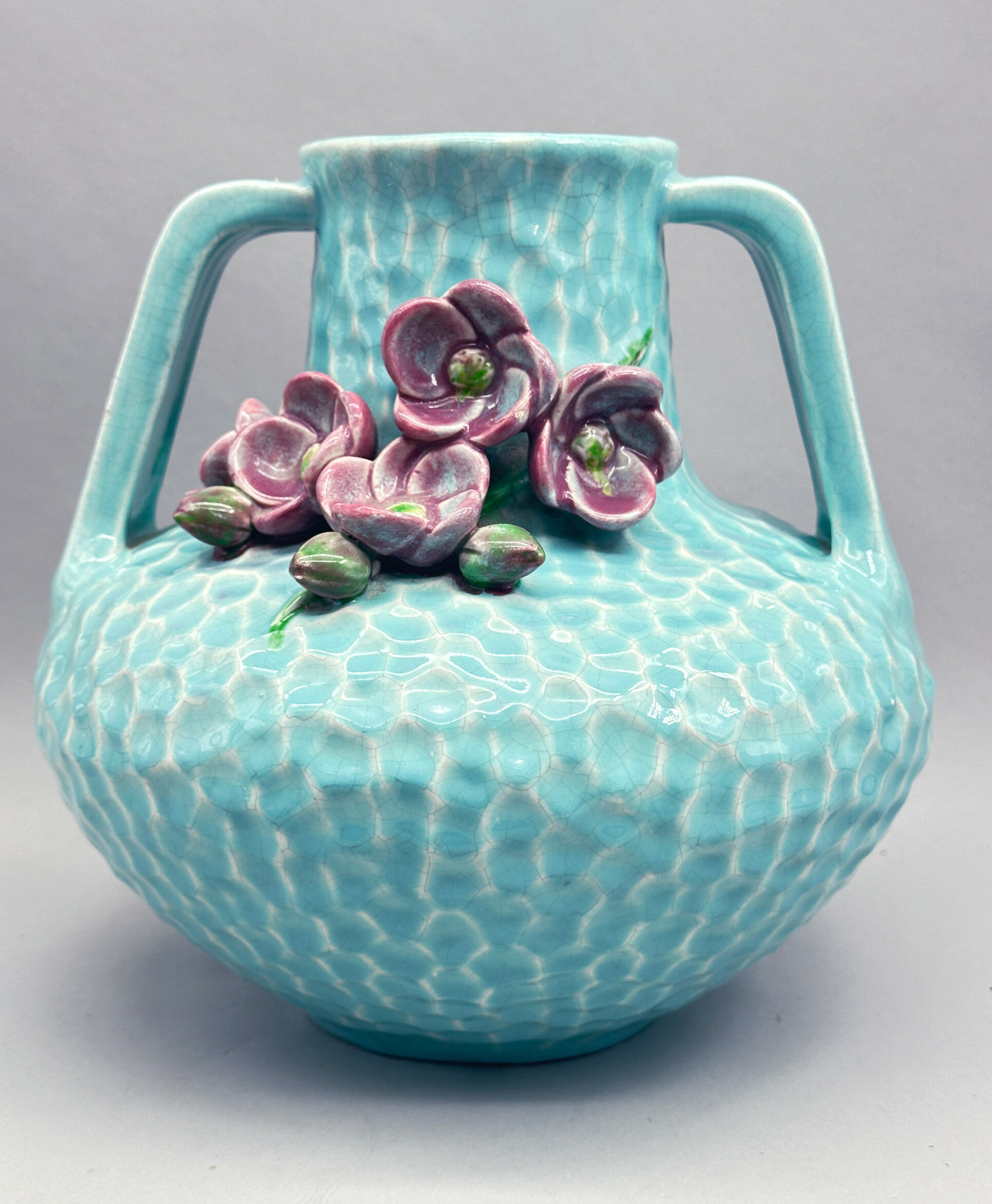
Art Nouveau style turquoise glazed Urn shape Vase, Bretby ware, early C20th
Price: £75The firm Bretby was the result of an amalgamation between Henry Tooth and William Ault who formed a partnership in 1883. Both had previously worked at the Linthorpe pottery established by Christopher Dresser in 1879 and retained a comnnection with the celebrated designer even after striking out on their own. Success came early and the firm won a gold award in the Crystal Palace Exhibition of 1884, patenting their trademark with its sunburst design above the name Bretby in the same year. Ault left the partnership in 1887 to set up his own business under his own name but Henry Tooth continued to oversee production until his death in 1918, the business then remaining under the control of the Tooth family until it was sold in 1933. Production continued, though, well into the twentieth century until the firm closed around in the late 1990s.
This piece is typical of their earlier work with a nod to both the art nouveau style and Dresser himself, particularly in the shape of the handles. ‘Hammered’ decoration was typical of the Arts and Crafts movement popular at the time and the applied floral decoration has some parallels with Japanese pieces again much in vogue at that period. Similar pieces are known with the same shape and pattern number (1742) which seems itself also to indicate an early twentieth century dating, but the applied decoration seen here is unusual.
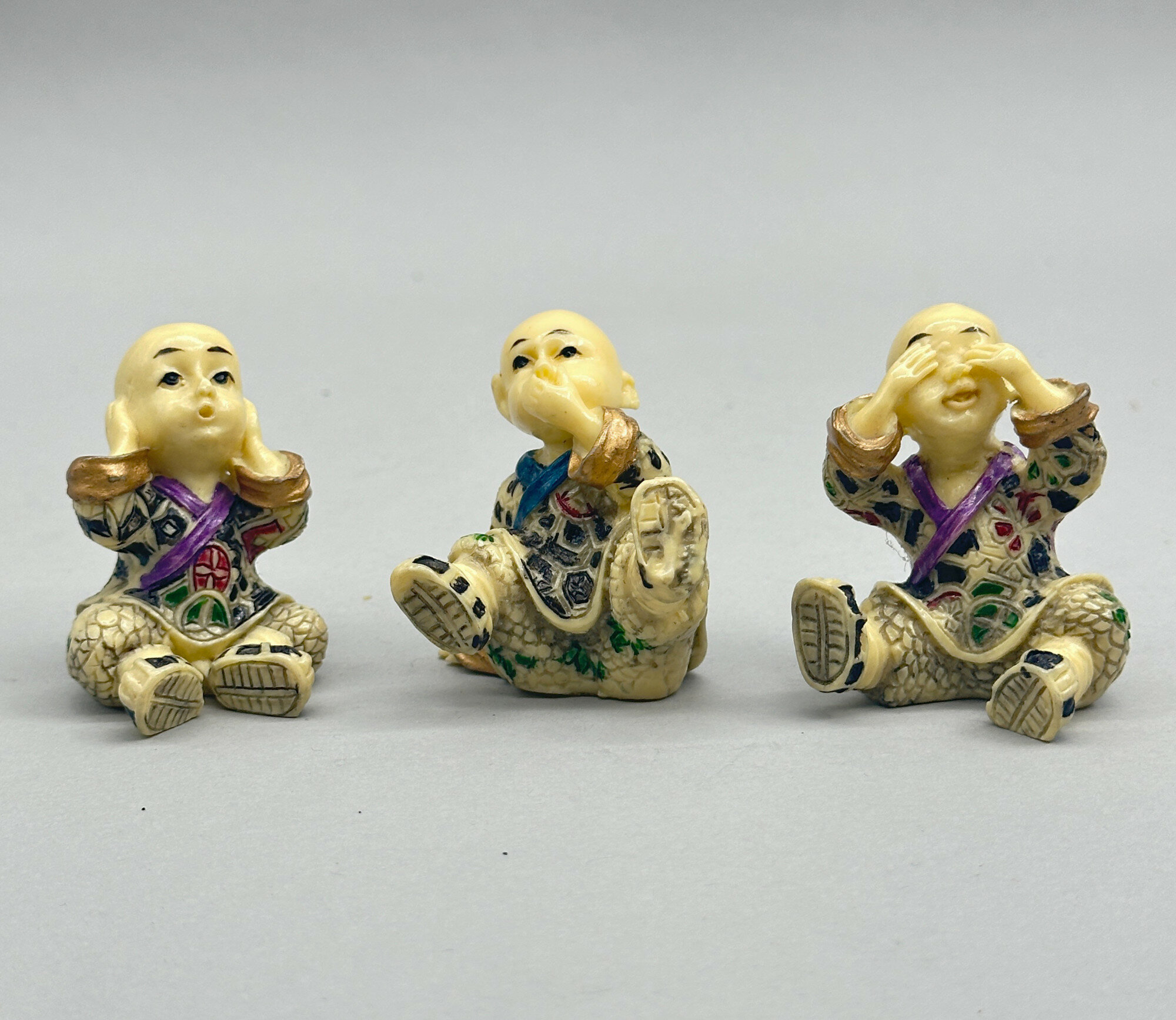
Set of Three Celluloid Figures of Monks, Japanese, first half C20th
Price: £45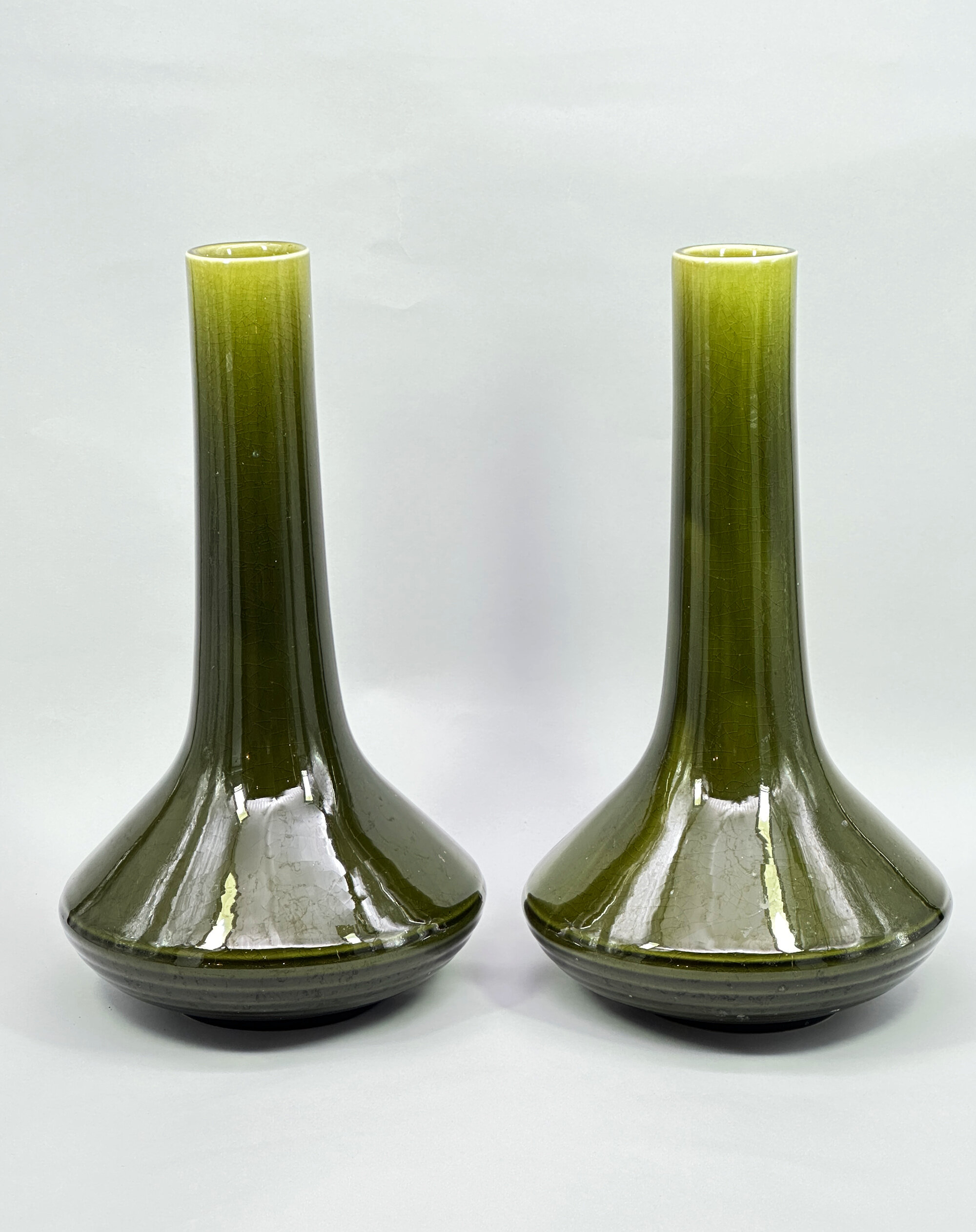
Pair of Green Glazed Bottle Vases, possibly French C20th
Price: £180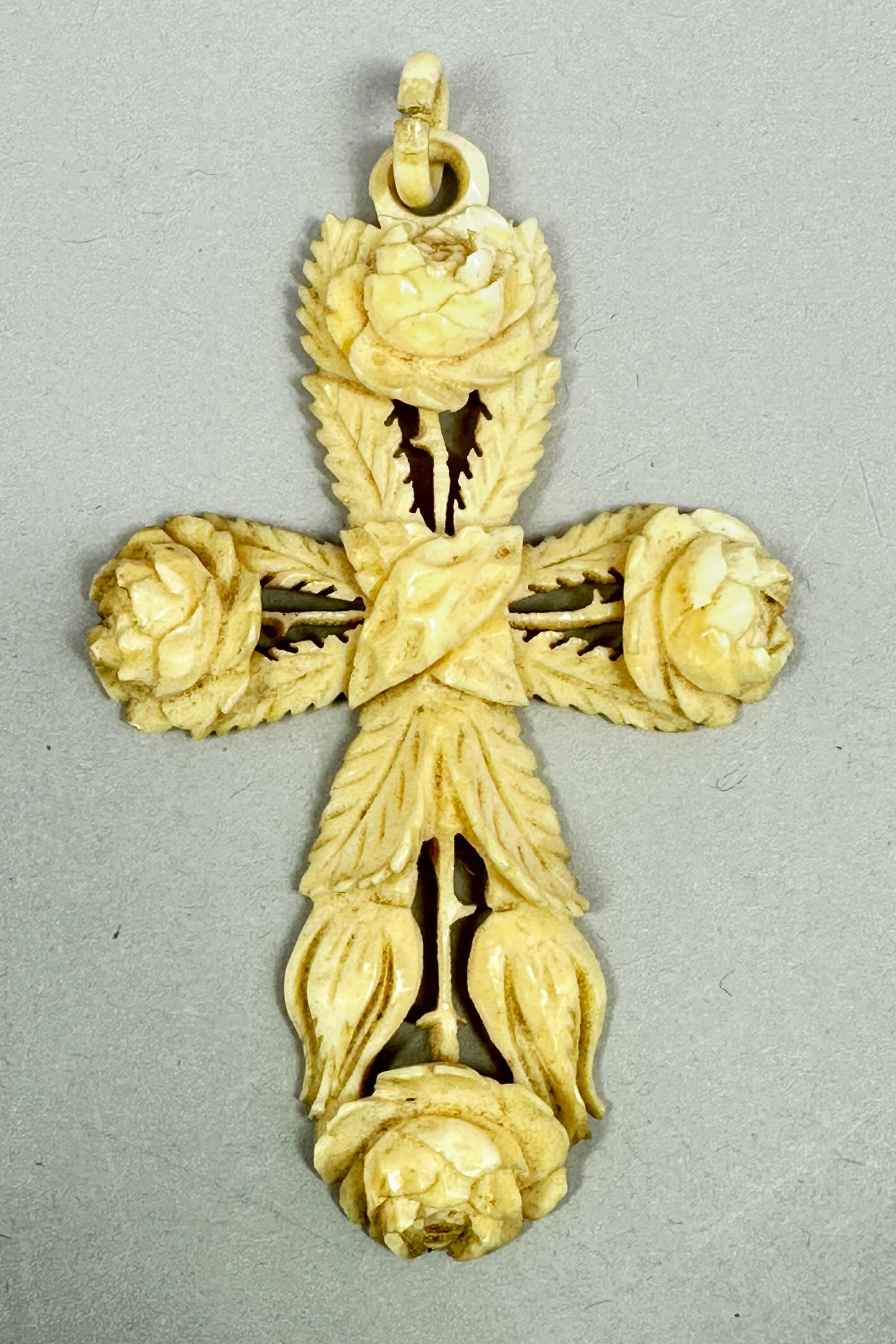
Victorian carved celluloid cross c1900
Price: £45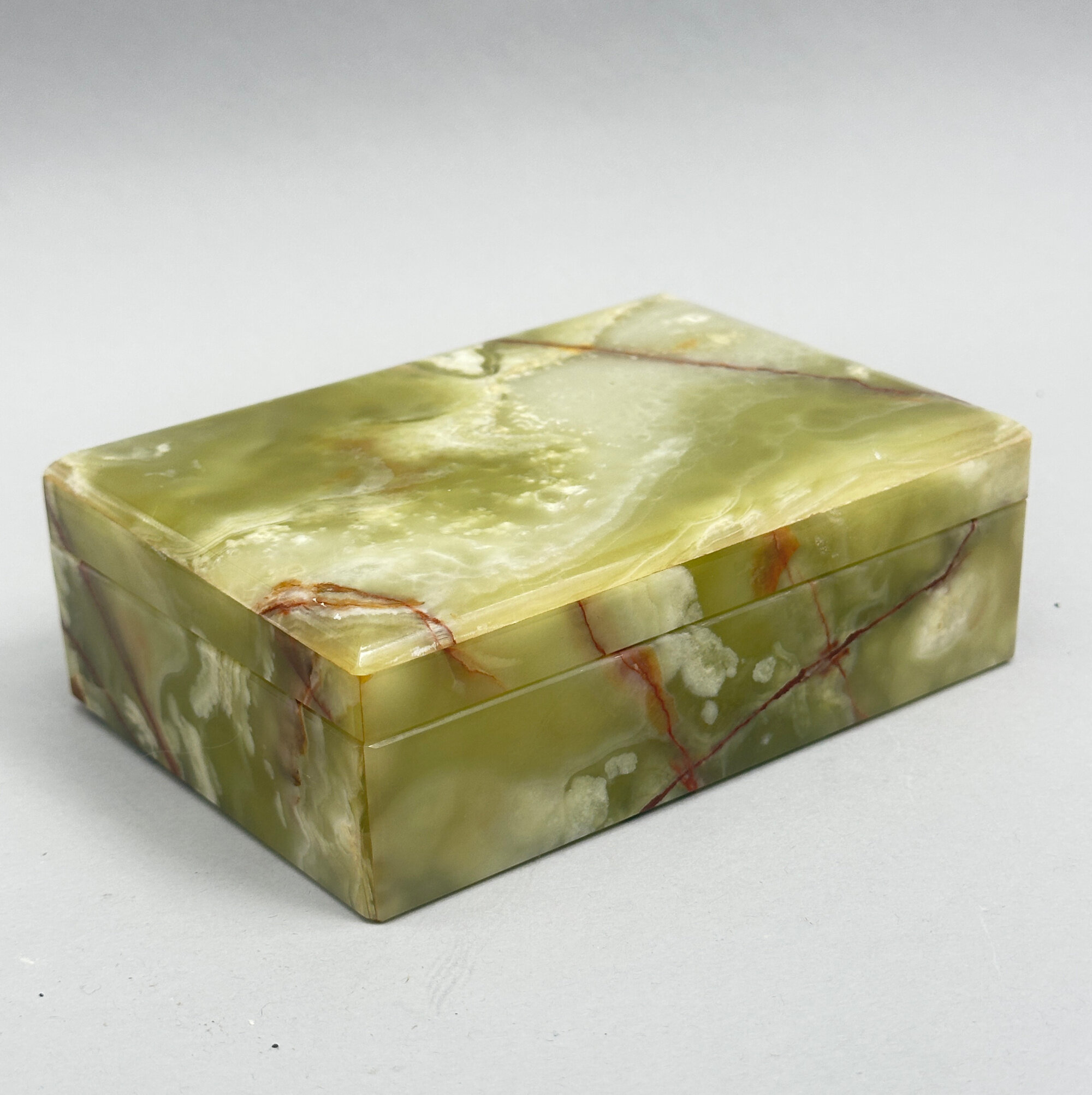
Rectangular Green Onyx Box and Cover, 1960s
Price: £35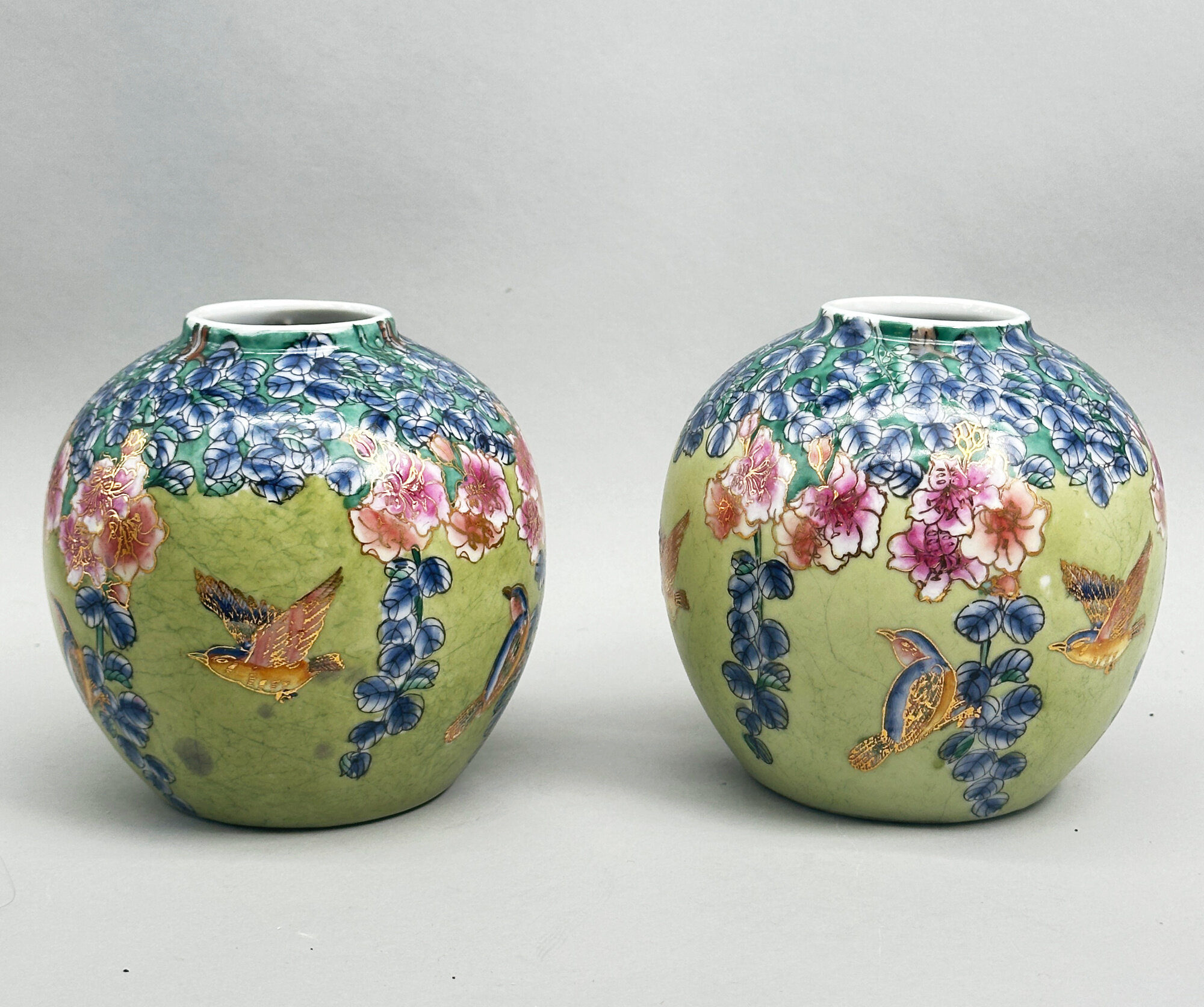
Pair of Chinese Ginger Jars decorated Birds and Flowers, late C20th
Price: £45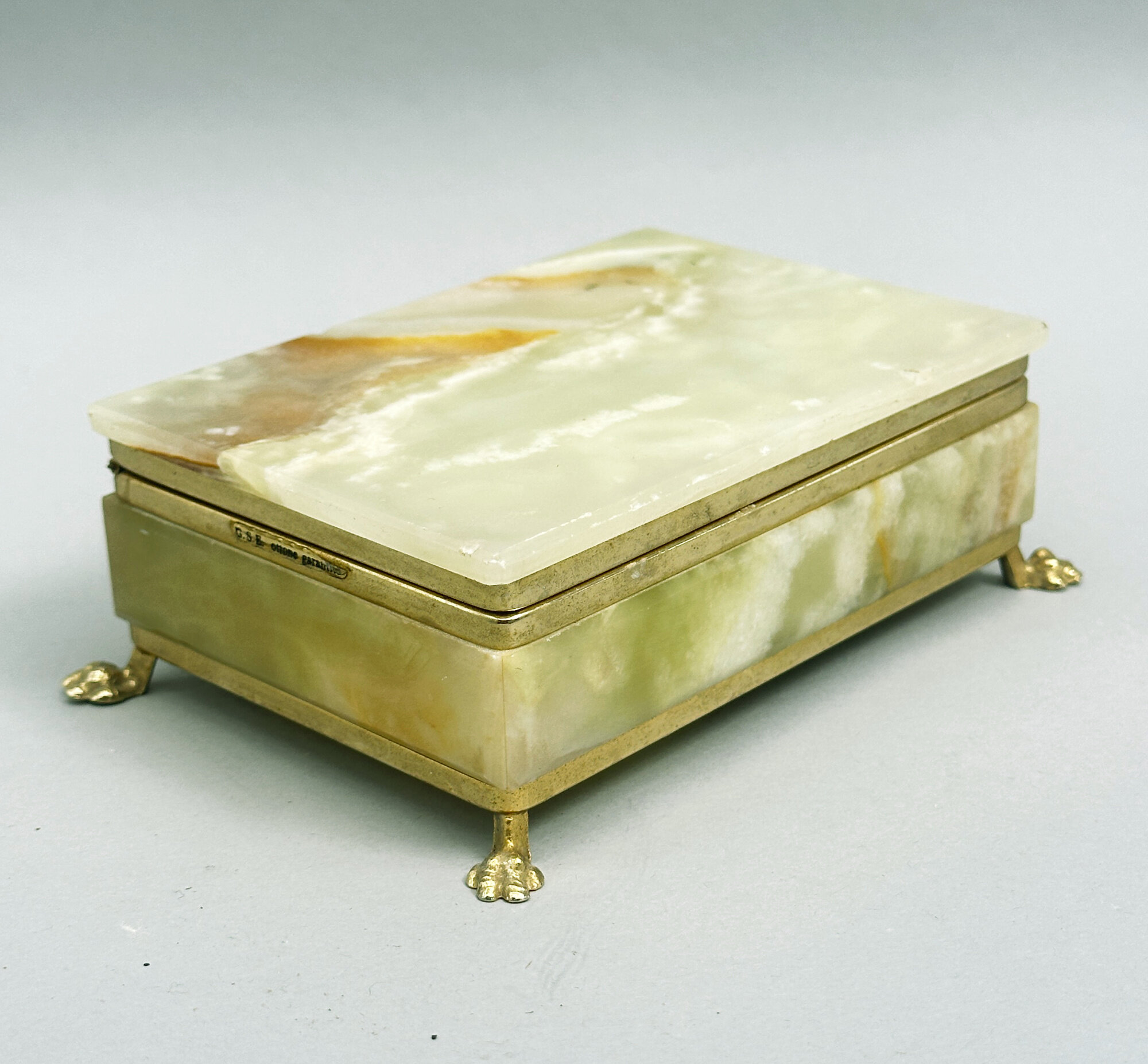
Rectangular Footed Green Onyx Box and Cover, G.S.E. Ottone Garantito, 1960s
Price: £45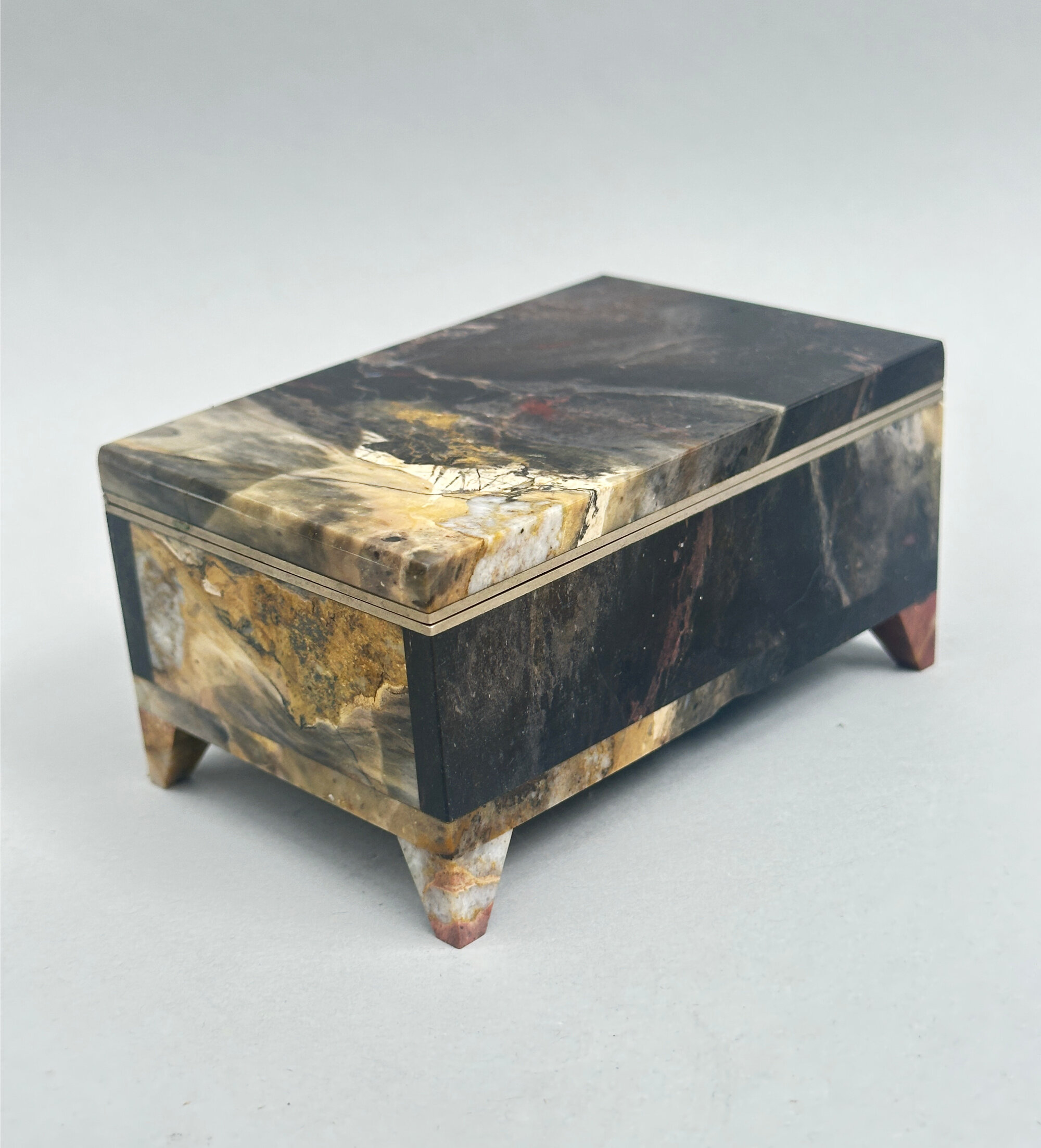
Rectangular Box and Cover, Basanite Jasper, C20th
Price: £95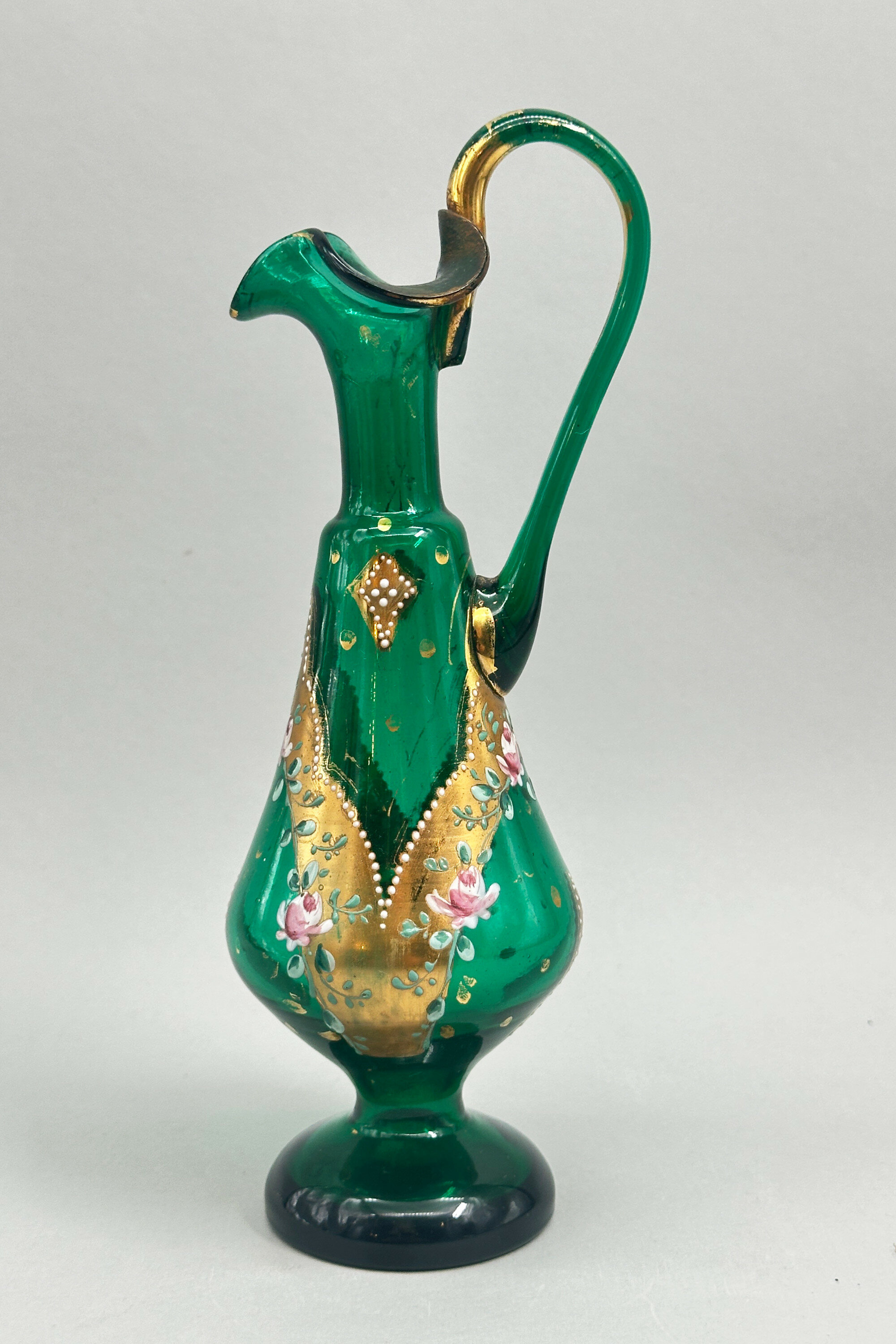
Bohemian Green Glass Moser style Ewer, late C19th
Price: £35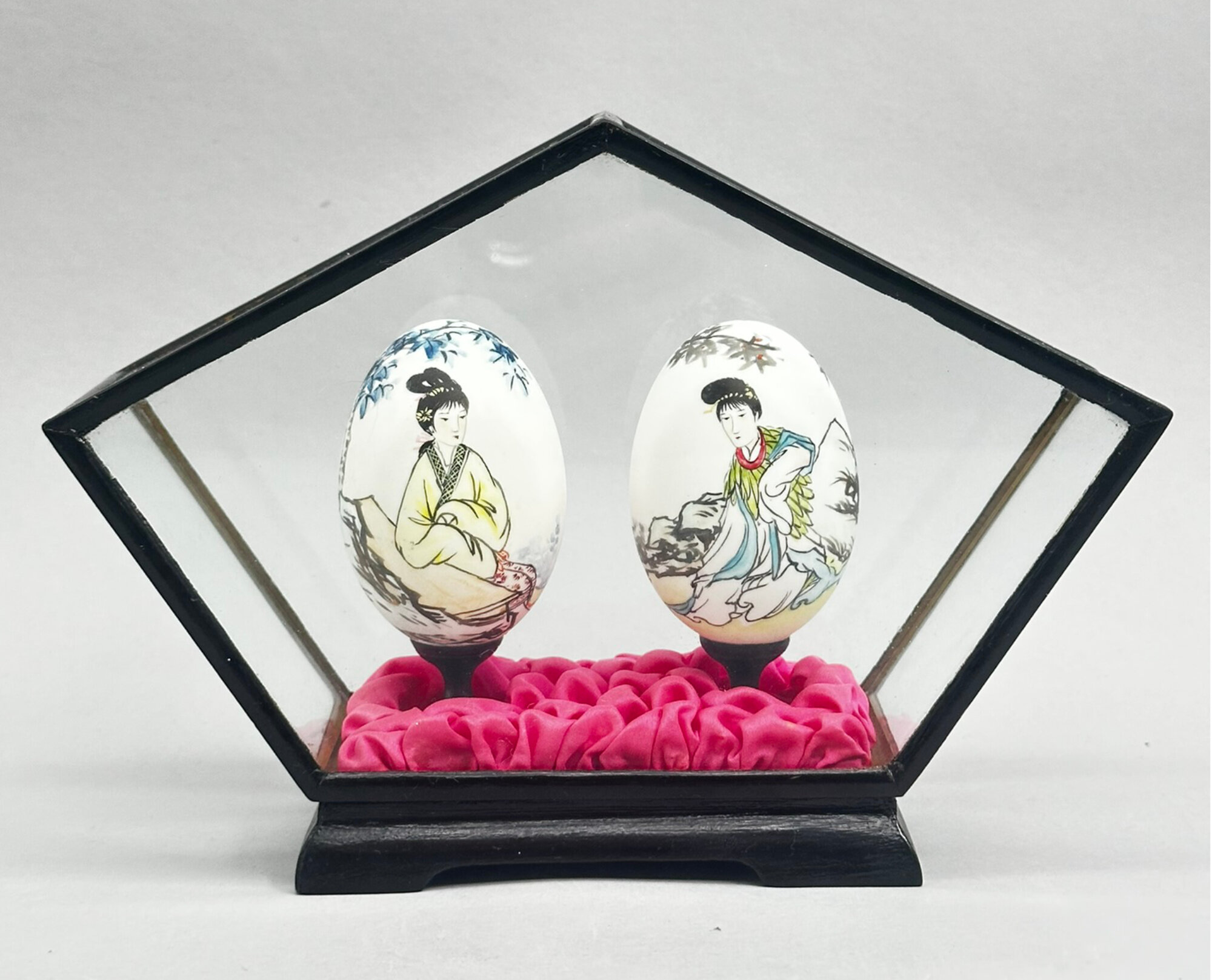
Pair of Chinese Hand Painted Eggs in Case, 1970s
Price: £25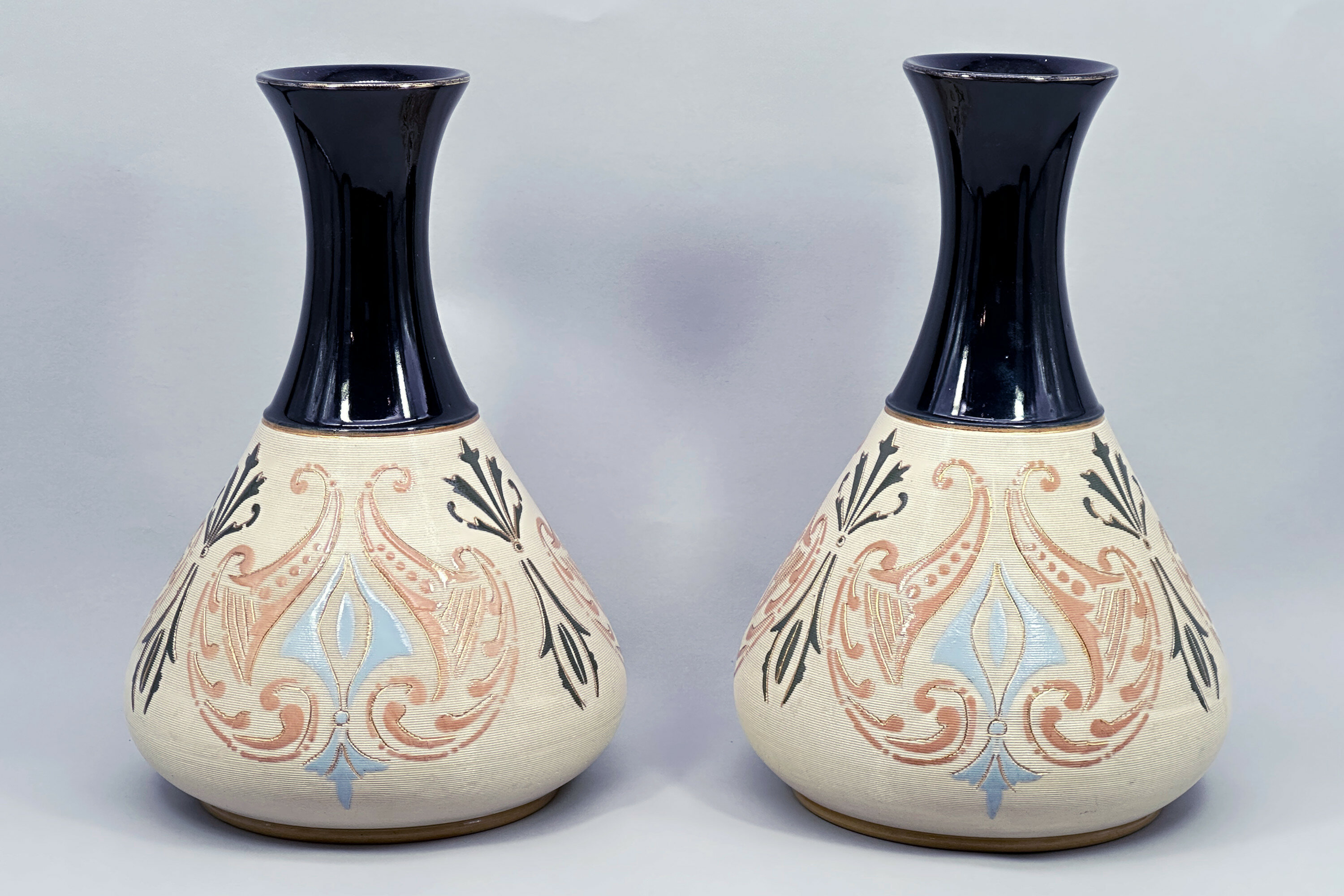
Pair of Lovatt and Lovatt Earthenware Vases, early C20th
Price: £95The Langley Mill Pottery was located in Langley Mill, Derbyshire on the Derbyshire – Nottinghamshire border. From its establishment in 1865 to its final closure in 1982, it went through five distinct periods of ownership, producing a wide range of stoneware ranging from utilitarian items and to high quality art pottery. This pair of vases dates from the third company that traded there, Lovatt and Lovatt. The Lovatt family had entered into partnership with the owner of the founding business at Langley Mill, James Calvert. From 1895 the business was in sole control of the Lovatt family and traded as ‘Lovatt and Lovatt’ until 1935. The early years of the twentieth century proved to be something of a zenith for them and a wide range of art pottery pieces were made which enjoyed great popularity. Production techniques were streamlined without a reduction in quality and in 1905, leadless glazes were introduced. These are proudly announced on the base of this pair of vases which are a fine example of the Lovatt and Lovatt style and probably date to 1913, indicated by the impressed numbers for that year.
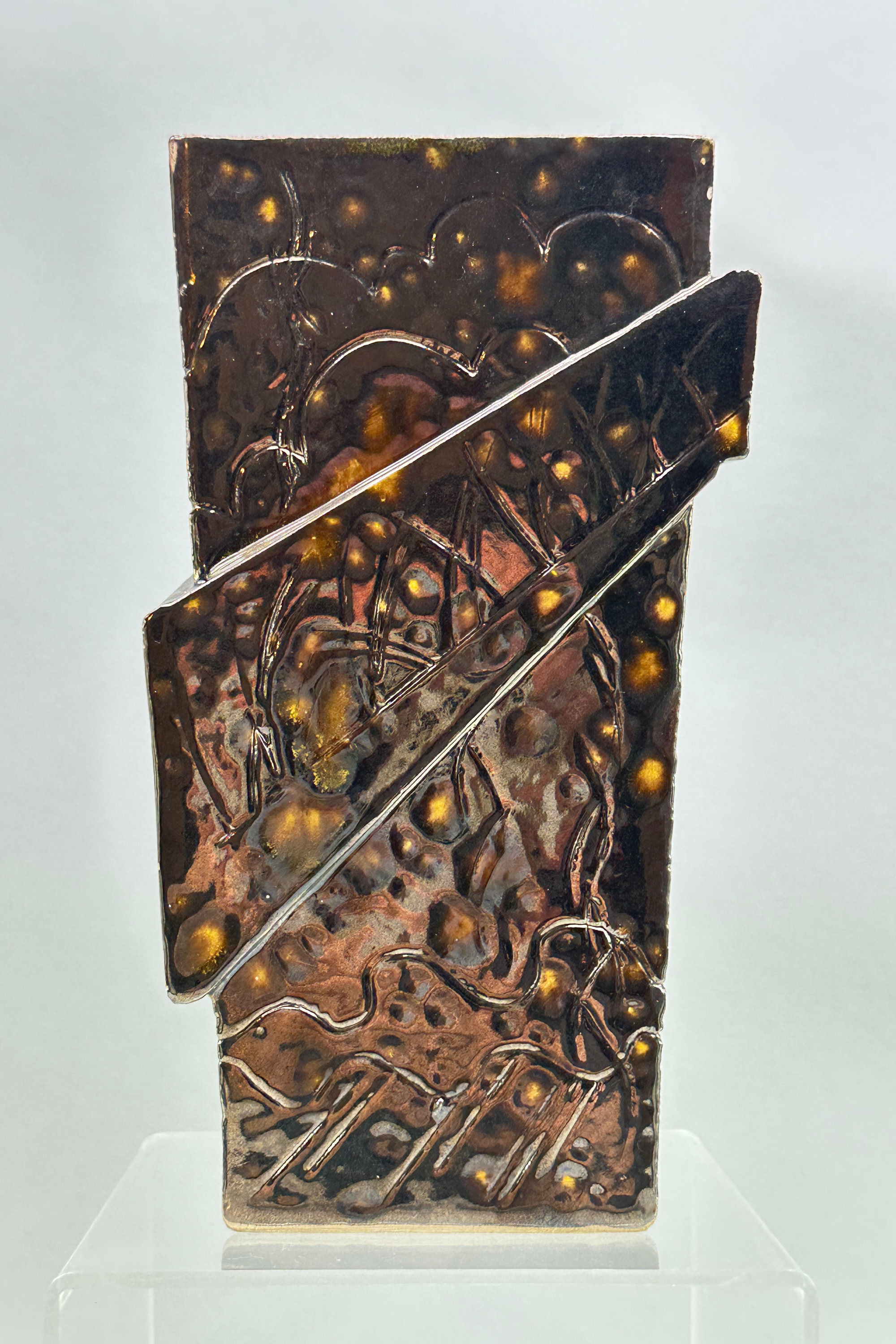
Art Deco Style brown lustre glaze triangular form Vase, signed, C20th
Price: £35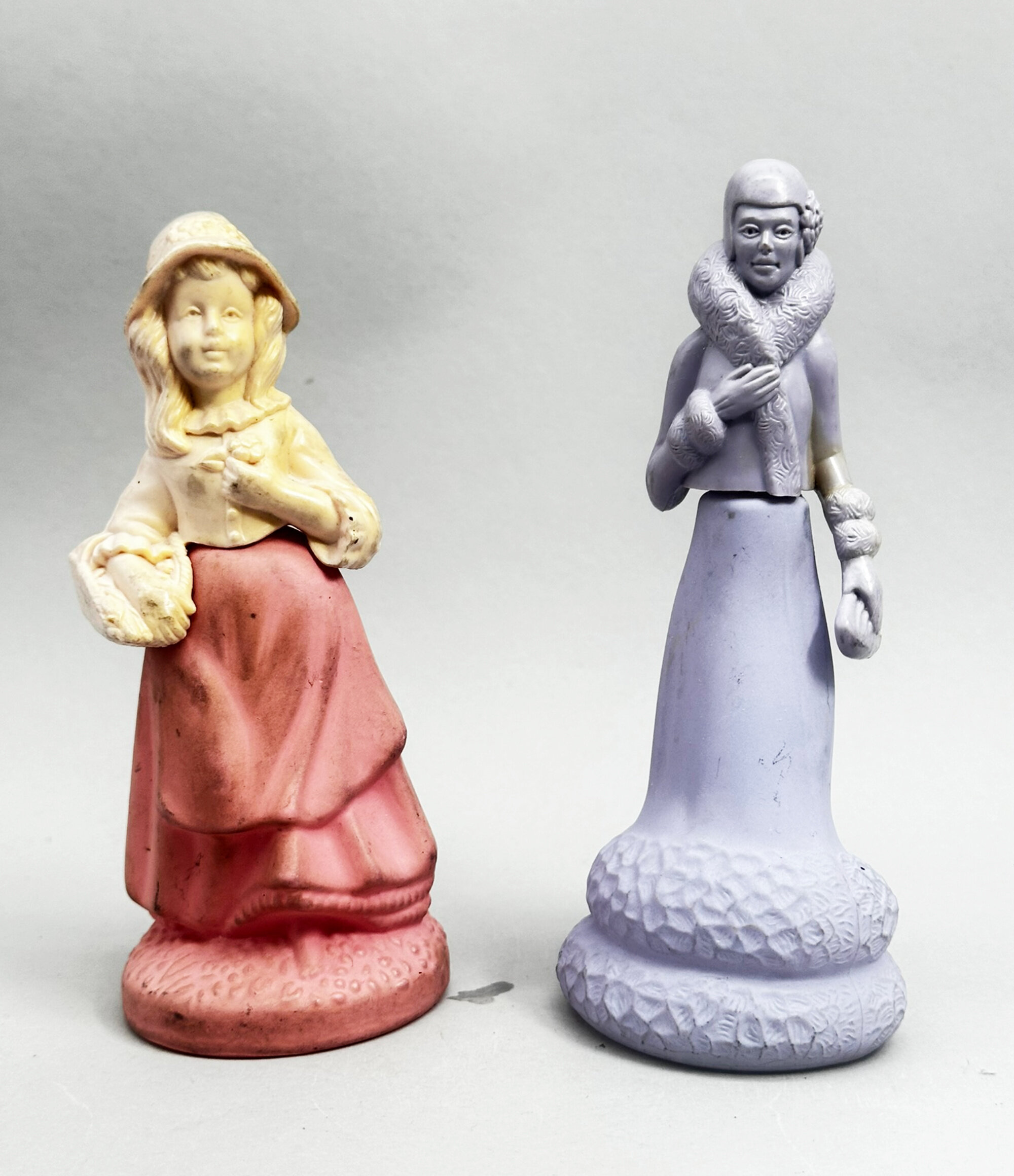
Two Avon Perfume Bottles, Lady and a Girl, 1970s
Price: £20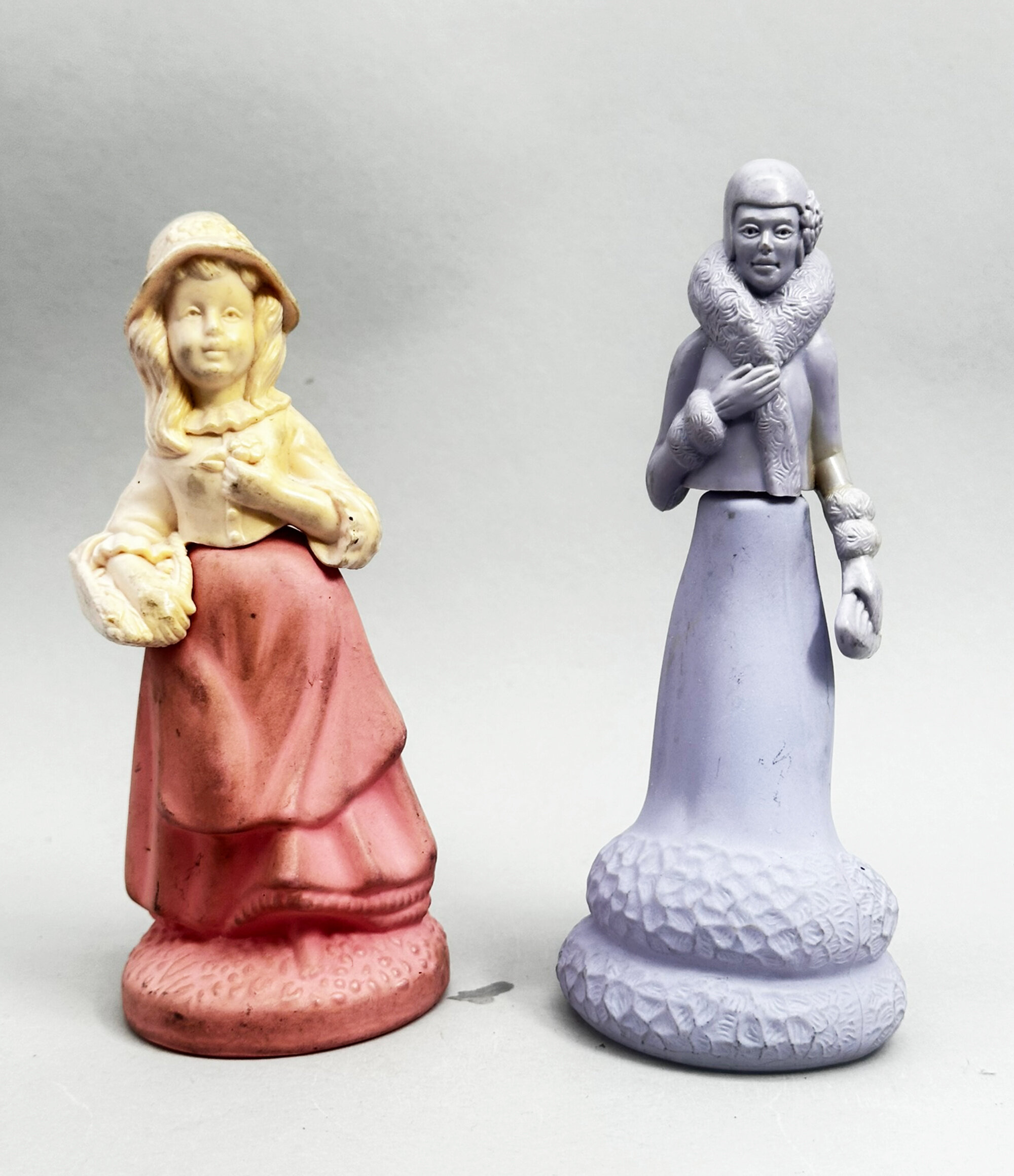
Two Avon Perfume Bottles, Lady and a Girl, 1970s
Price: £20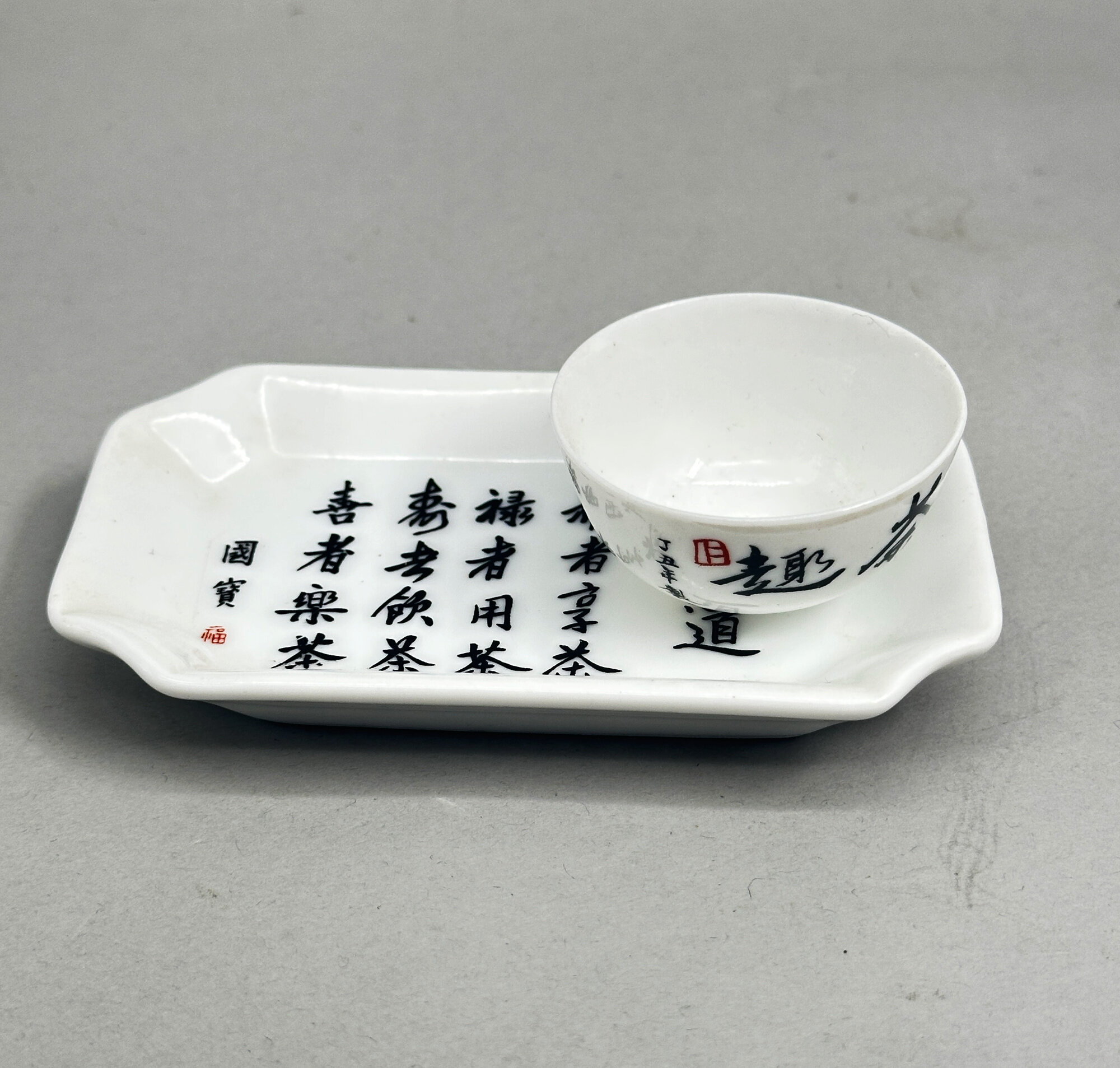
Chinese Porcelain Teabowl and Spoon Tray with calligraphy insciptions, 1997
Price: £15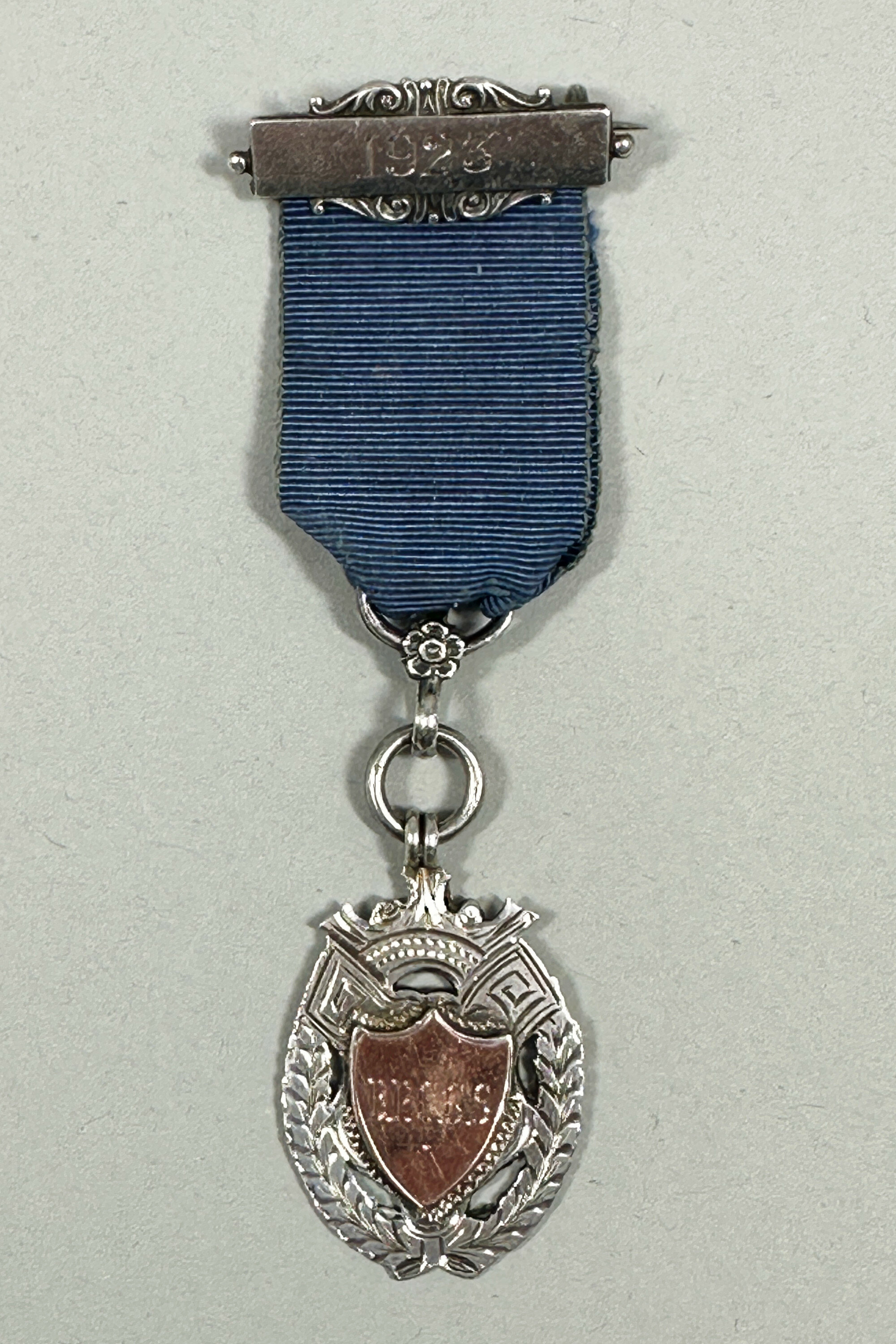
Silver Medal or Watch Fob dated 1923, B.P.C.G.S.
Price: £35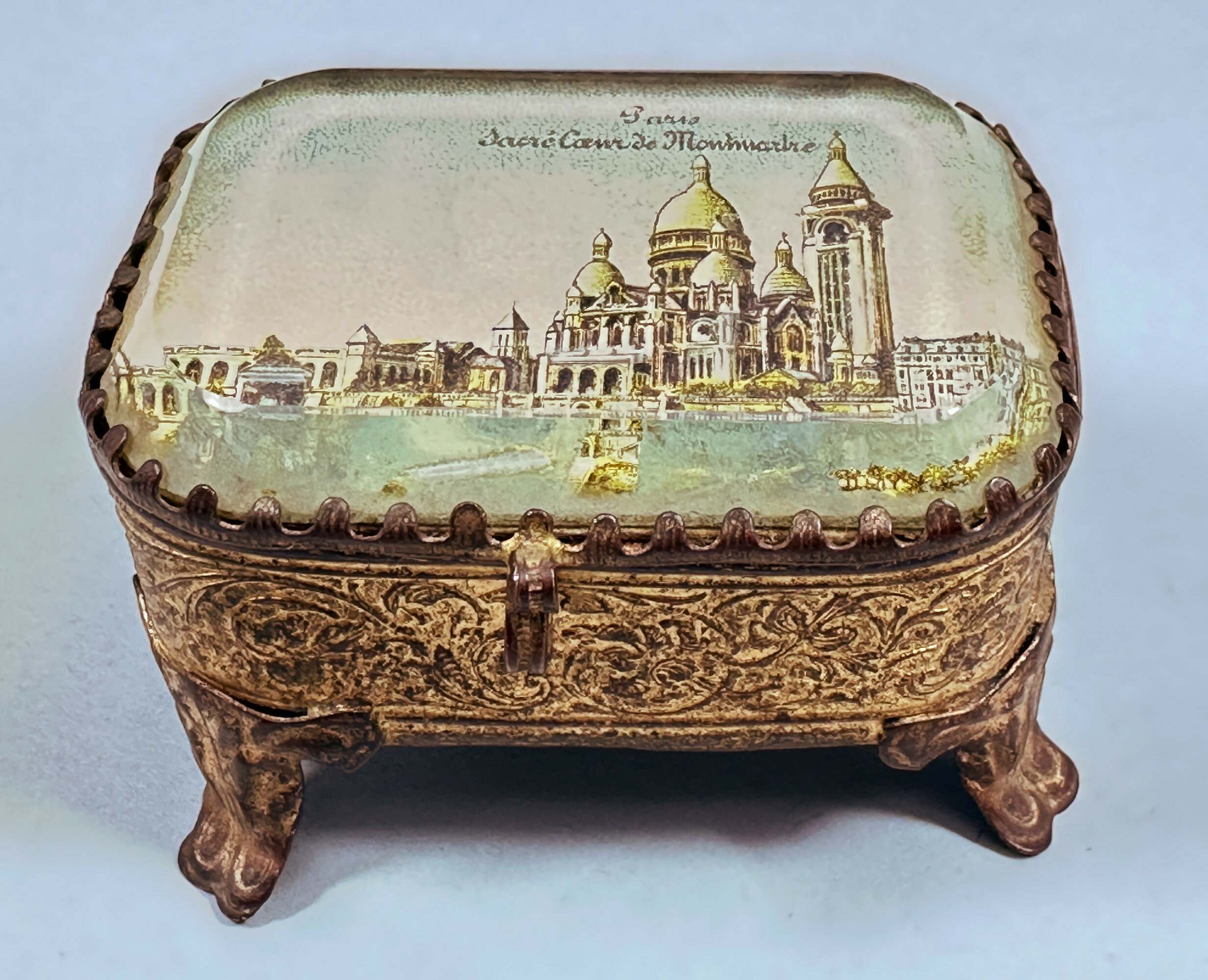
French Souvenir Verre Eglomise Box and Cover, Sacre Coeur de Montmatre, circa 1900
Price: £55
French Souvenir Verre Eglomise Box and Cover, Sacre Coeur de Montmatre, circa 1900
Price: £55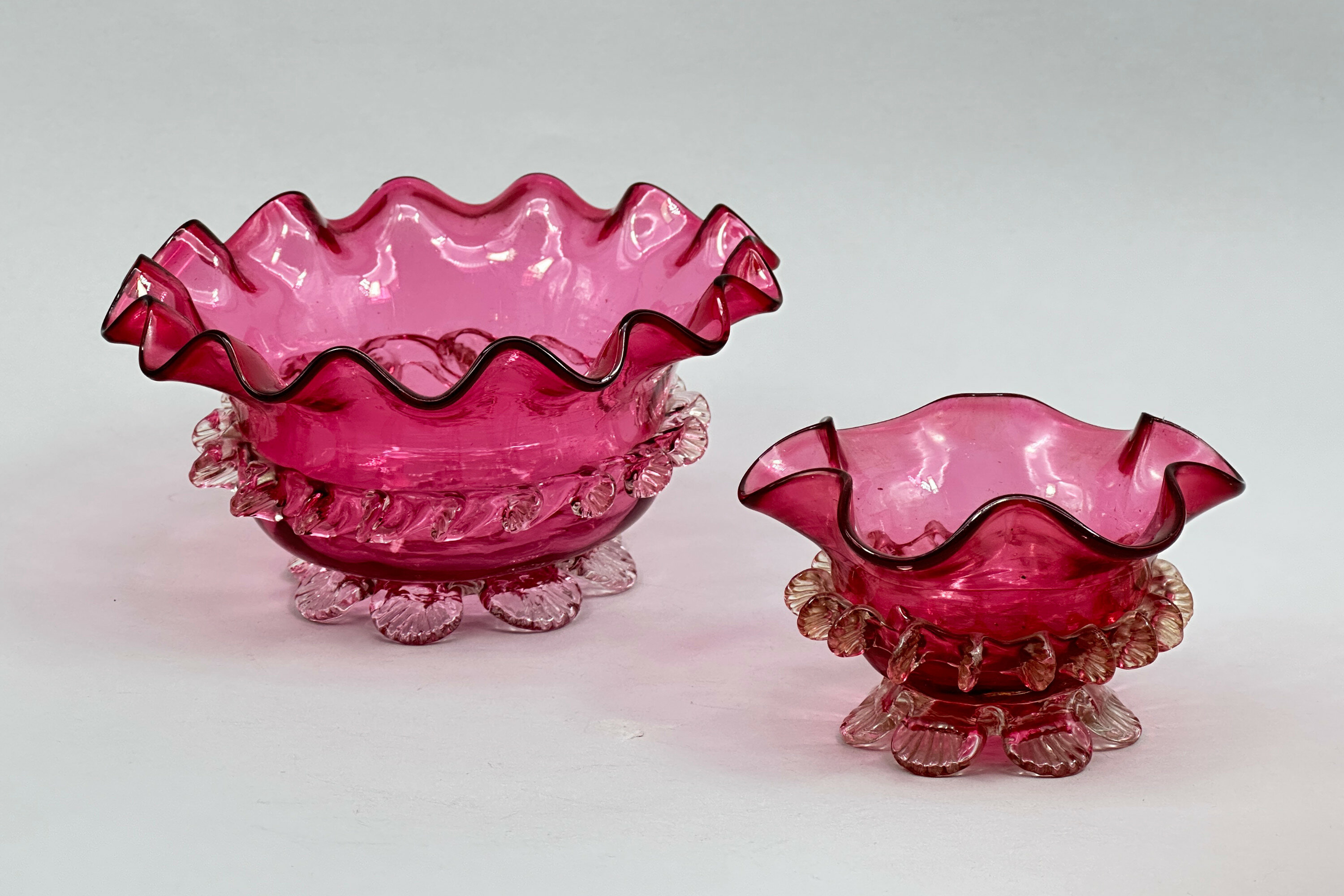
Two Victorian Cranberry Glass Bowls, late C19th
Price: £75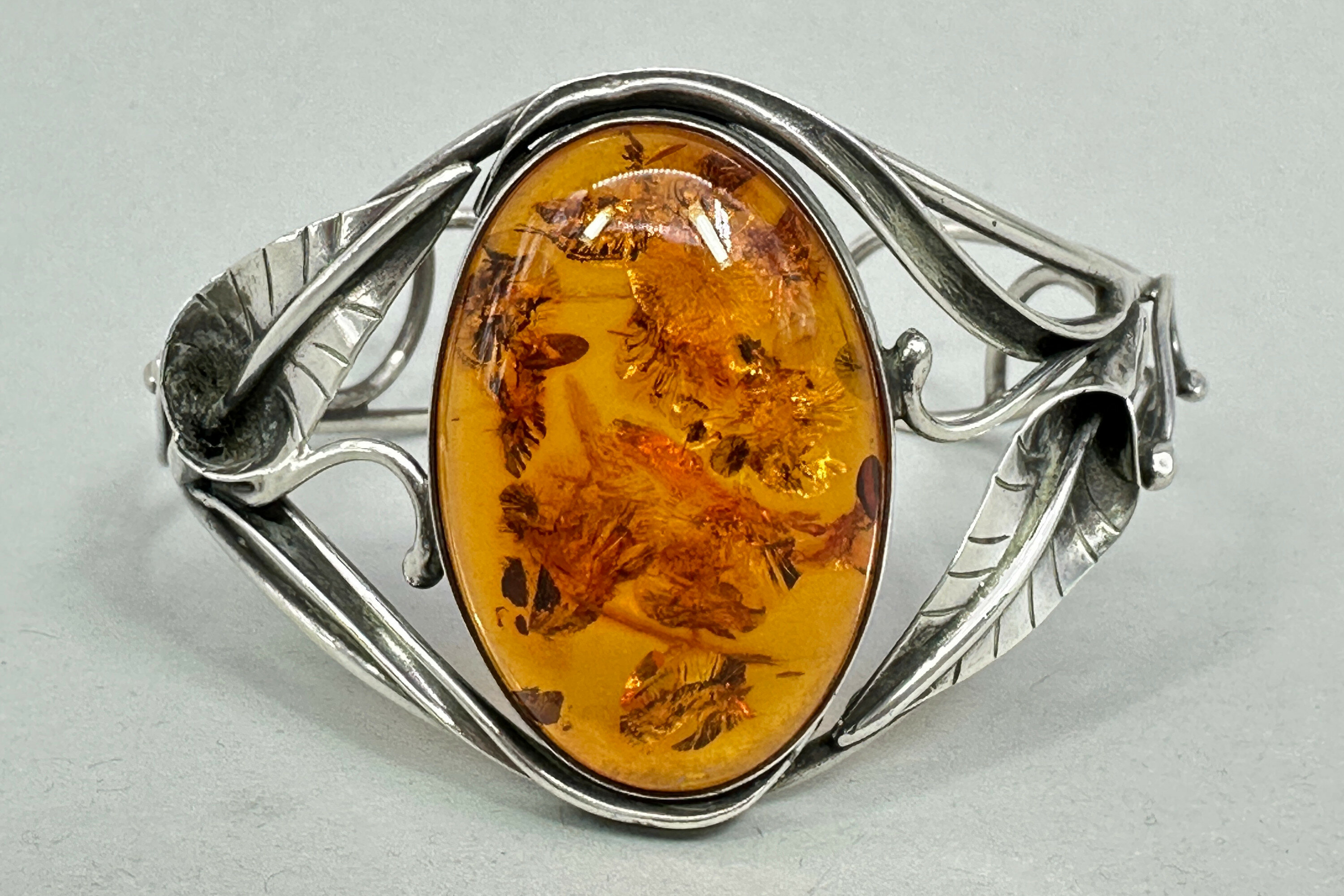
Large amber cabochon cuff Bracelet, c1970
Price: £95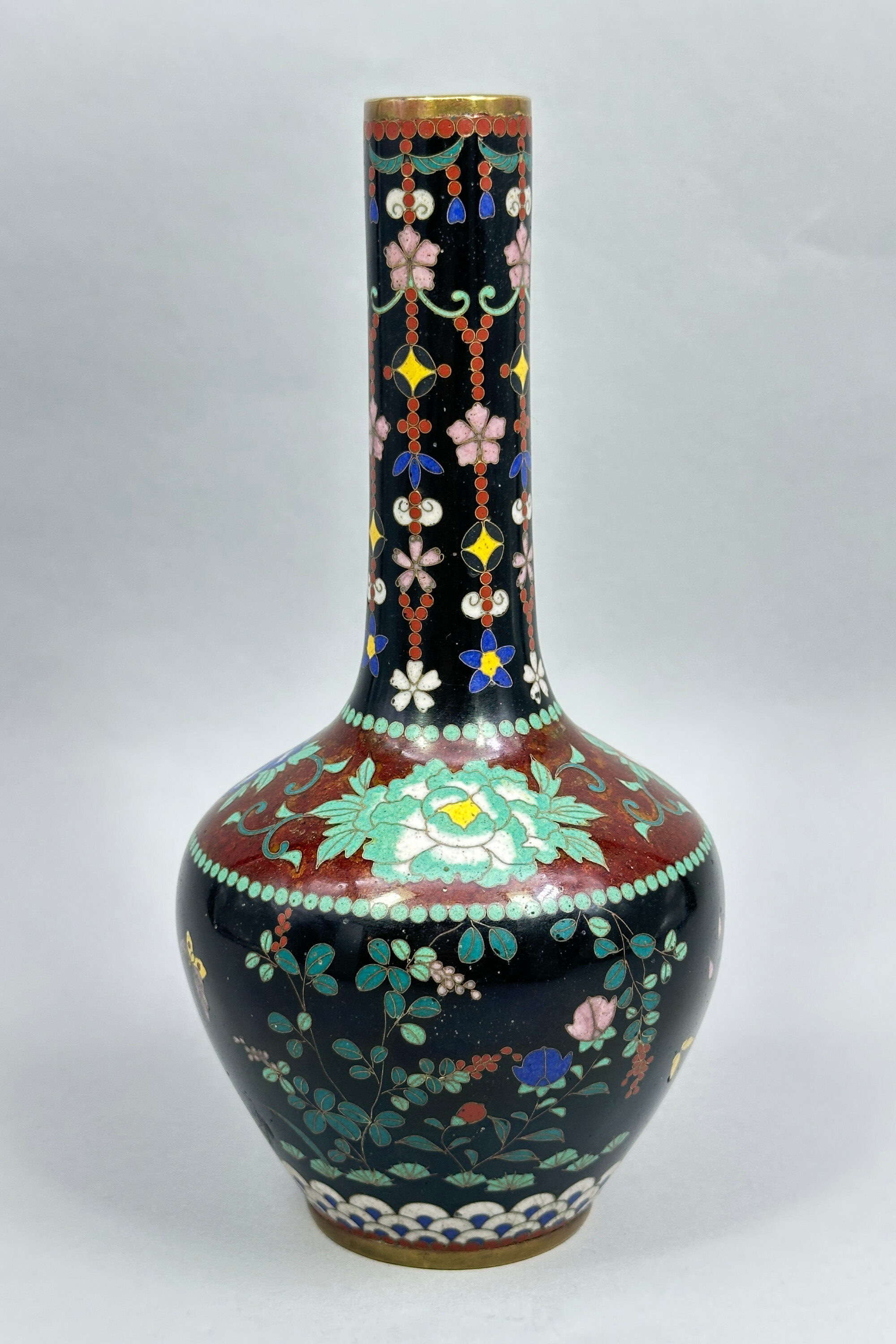
Fine quality Japanese Cloisonne bottle form Vase with black ground, late C19th
Price: £45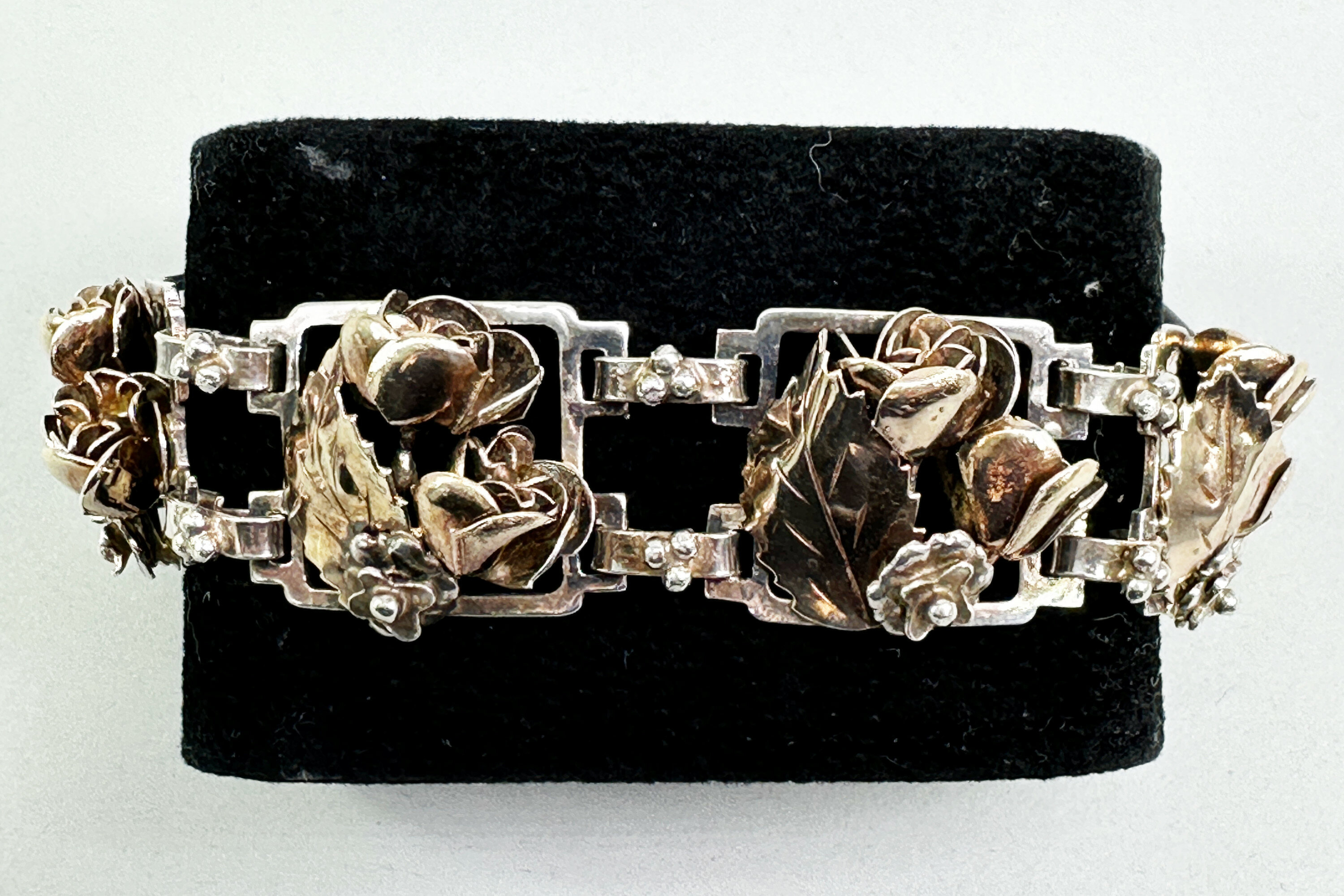
Vintage Hobe 14k gold plated sterling silver bracelet, 1940s
Price: £150Hobe was founded in 1887 by the French goldsmith Jacques Hobe as makers of fine jewellery. The costume jewellery division, Hobe Cie, was added 40 years later by his son, William Hobe, who brought the firm to America in 1927 and was commissioned by Flo Ziegfeld to design and manufacture jewellery for his Ziegfeld Follies costumes. By repute this is the origin of the expression costume jewellery. Production continued from the 1930s to the 1990s although there are a few later reproductions. While all their pieces were marked, dating is sometimes difficult but the floral design sterling silver pieces, one of their most collectible ranges now, date to the 1930s and 1940s and this bracelet, with the addition of the gold vermeil detail probably belongs to the latter period of this group. Its opulent and florid design is typical of Hobe’s work making it a stylish addition to a collection of their pieces. Other examples of their work can be seen elsewhere on this site and in this sale.
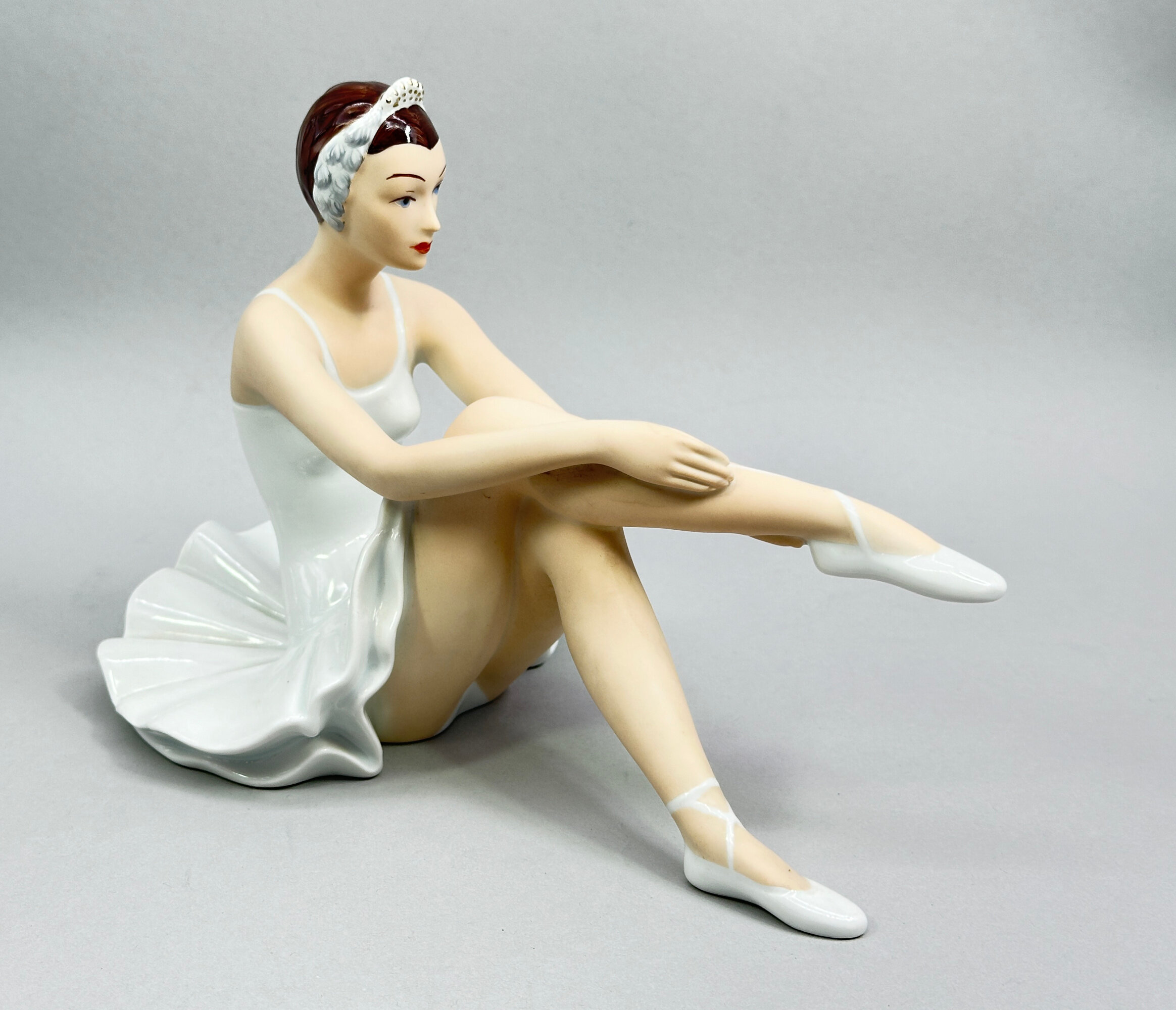
Figure of a Seated Ballerina, Royal Dux, late C20th
Price: £75Duxer Porzellanmanufaktur, or the Dux Porcelain Manufactory, was started in 1860 by Eduard Eichler in what was then Duchov, Bohemia, later to become part of Czechoslovakia. Production was to continue until the beginning of the second world war and beyond and their later pieces are now generally referred to by the abbreviated name, ‘Royal Dux’. The distinctive pink triangle plaque mark was first used in the late nineteenth century but appears on pieces from all dates, the version found here indicating late twentieth century work which is also confirmed by the rather indistinct stamped mark comprising a triangle surrounded by the wording ‘Hand Painted Made in Czech Republic’. The artist is named as ‘V.David’ and there seem to be two other companion pieces in different poses. The quality is quite excellent and explains the original popularity of the firm when it began manufacturing in the nineteenth century and produced highly successful imitations of its contemporary rivals.
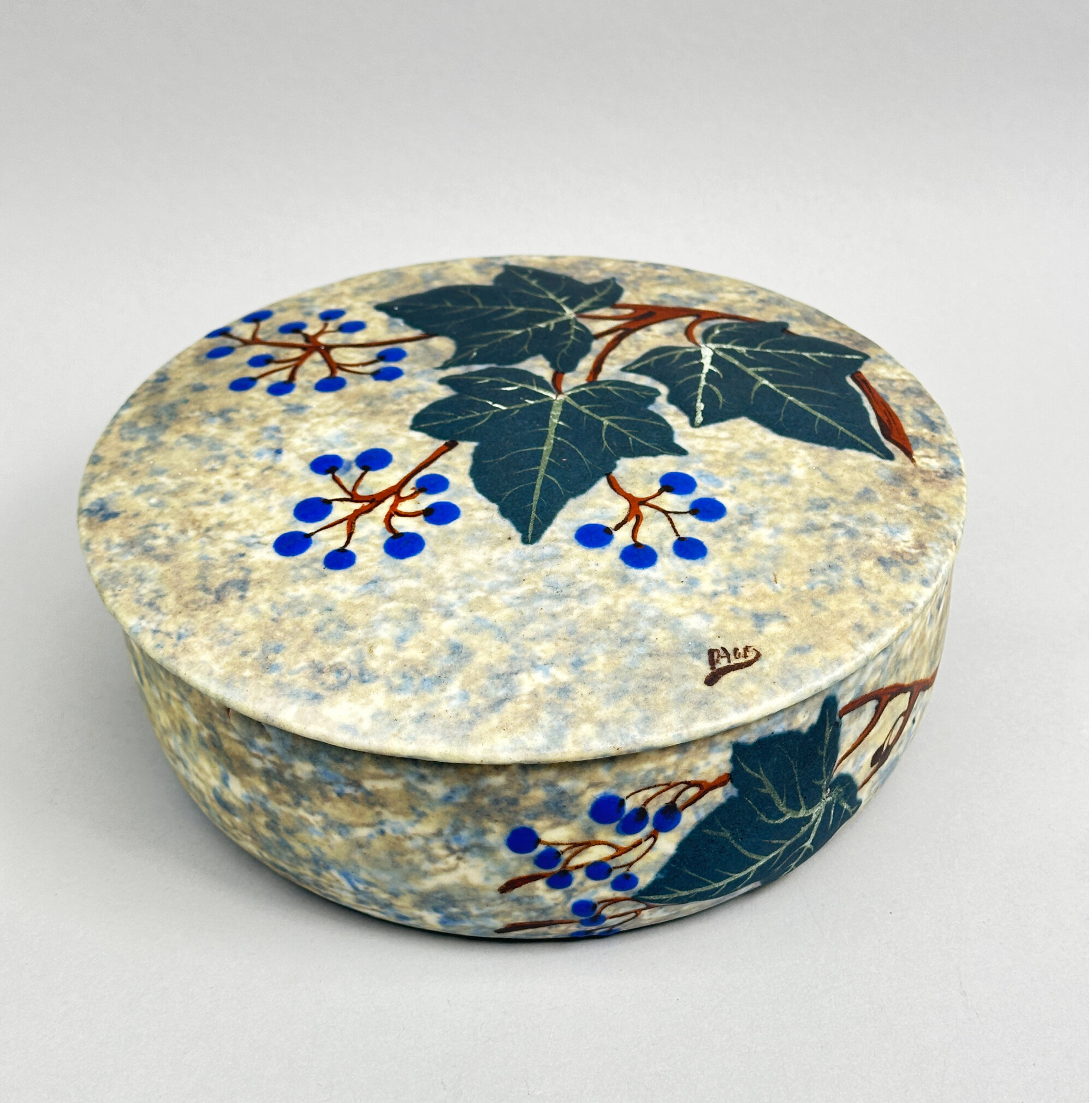
Art Deco style Ceramic Bowl and Cover by Louis Dage (1885-1961), early/mid C20th
Price: £180……………………………………………………………………………………....................................................................................……
Born in 1885 at Lille, France, Louis Dage was early known as a ceramics artist, describing himself on the birth registration of his daughter in 1906 as a ‘decorator on faience’. In 1920 he joined with Louis Fontinelle (1886-1964) to create a faience factory in Antony, near Paris, but the venture was short lived and they parted company two years later. In 1930, Dage set up his own studio at Saint-Sever in company with his brother and daughter becoming managing director of the firm three years later. There then followed a little over thirty years of production under his direction until his death in 1961. Art Deco designs with their simple lines and bold decoration were produced initially to be followed by pieces of more rugged shapes and patterns, partly resulting from the shortage of conventional raw materials during the second world war.
This bowl and cover represents the best of Dage’s earlier work. The base has straight sides curving in slightly towards the base and has a flush fitting flat and gently domed cover overhanging slightly at the edge. The piece is covered overall with a mottled glaze in tones of blue and light aubergine on which are painted maple leaves in green with bright blue berries, a design which can be found on some of Dage’s other pieces (see image 13). The lid carries his signature ‘DAGE’ with a flowing line underneath, a much less common version of the Dage mark but which can be found elsewhere (see image 14). More normally pieces are signed ‘L.Dage’, the name being in lower case rather than capitals.Form and decoration combine to produce a striking object, characteristic of the fashions of the time of its production and a worthy tribute to its maker.
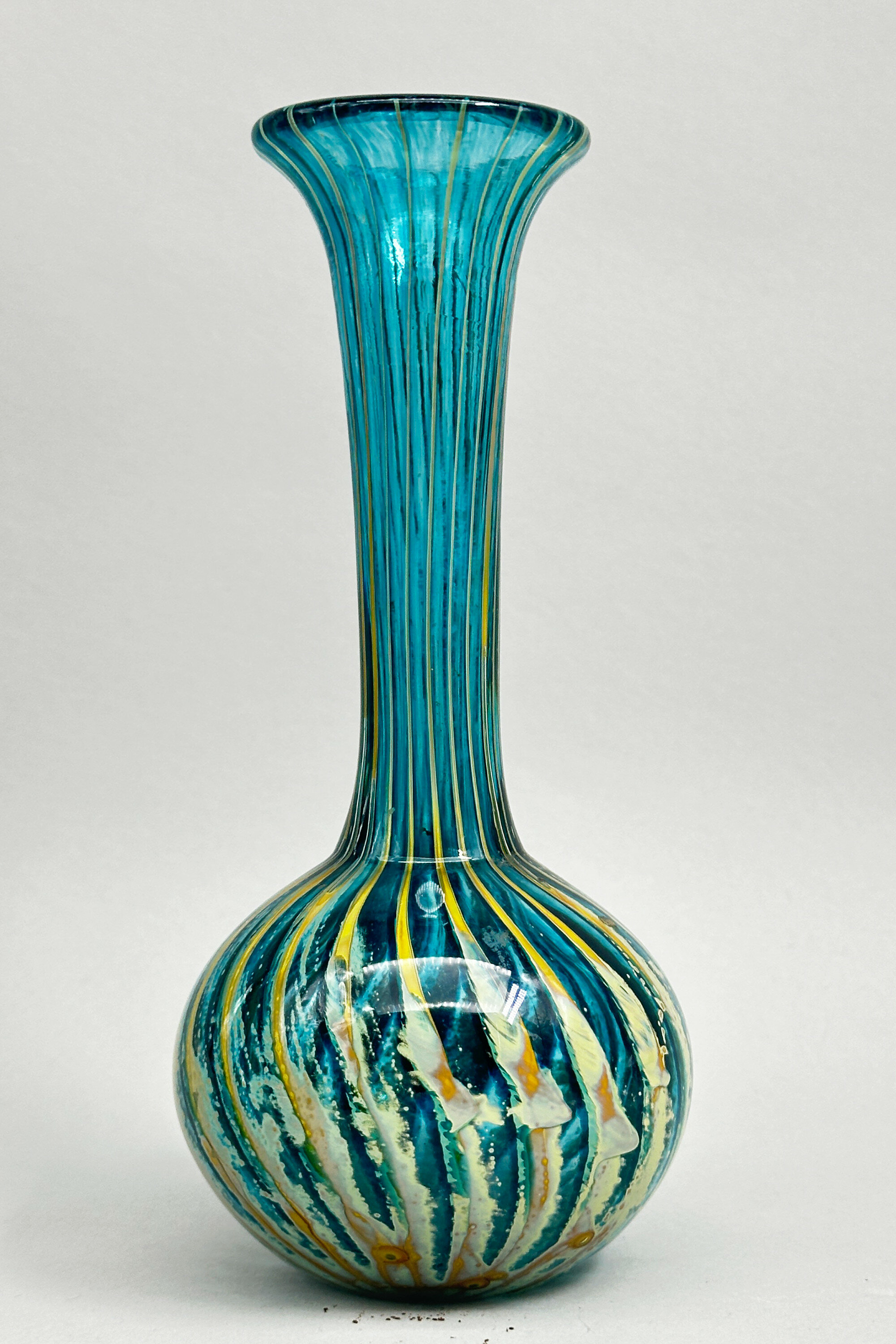
Phoenician Glass Vase, signed, late C20th
Price: £45Phoenician Glass was founded on Manoel Island, Malta in the 1980s by Leonard Sullivan, who had worked previously at Mdina Glass and many of his designs resembled those of his old employers. Certainly, the influence of Mdina and perhaps that of one of its founders, Michael Harris, can be seen here. Phoenician Glass took its name from the ancient Phoenician civilisation, which colonised Malta during the first millenium BC.
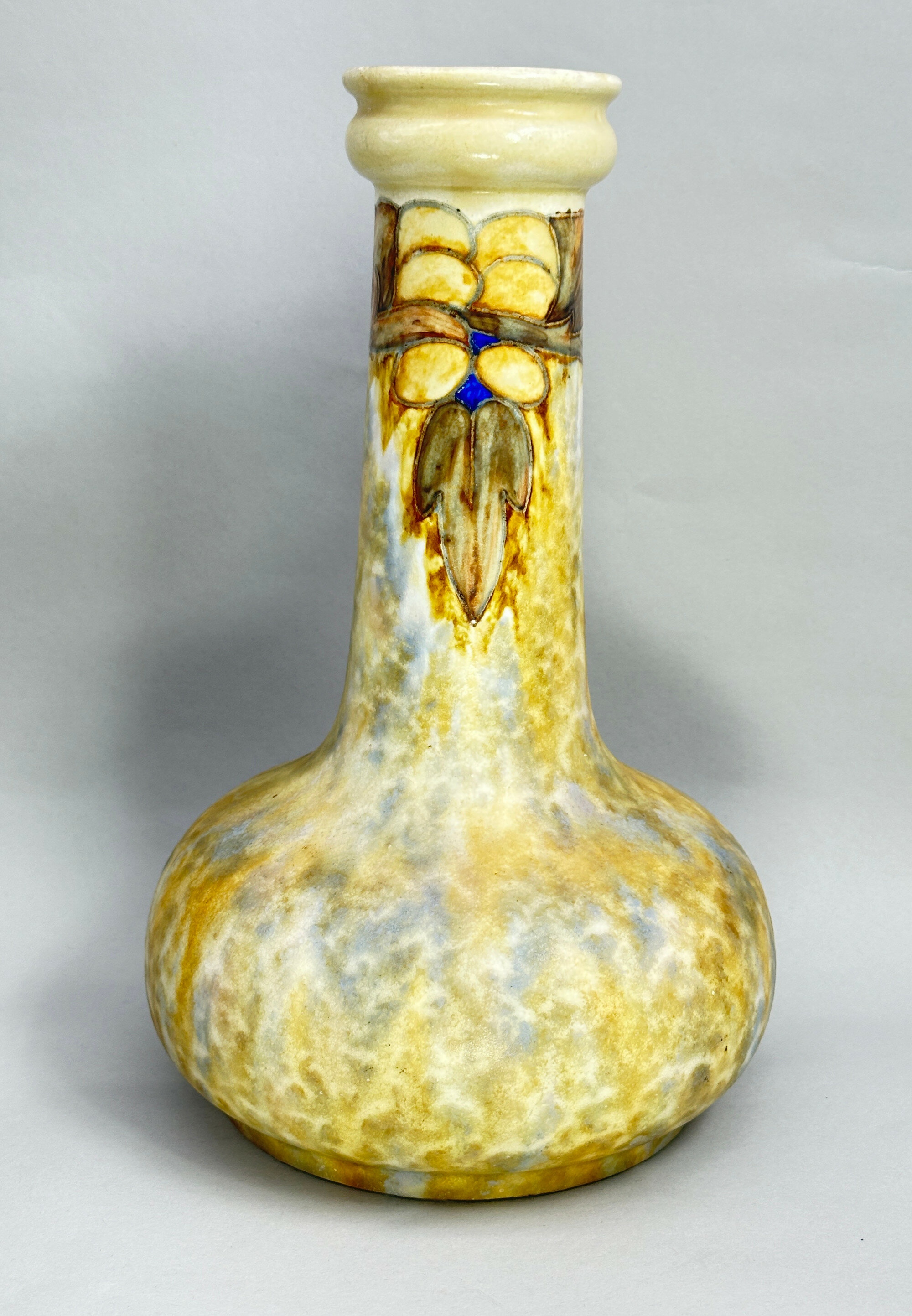
Cranston Ware Art Nouveau Style Vase, early C20th
Price: £95Cranston Ware was one of the ranges produced by the Pearl Pottery Company, based in Hanley, Stoke on Trent. Founded in 1892, the firm produced a varied selection of ceramic wares, often following contemporary fashions, until its closure in 1947. This vase is demonstrably in the Art Nouveau style and would have been produced when it was at its zenith in the early 1900s. The pattern was known as ‘Tukan’ ware and some of the pieces, but not all, have an impressed mark displaying this. This is an excellent example of the type with the glazes and decorative detail well rendered and certainly deserves the attention of collectors of Art Nouveau.
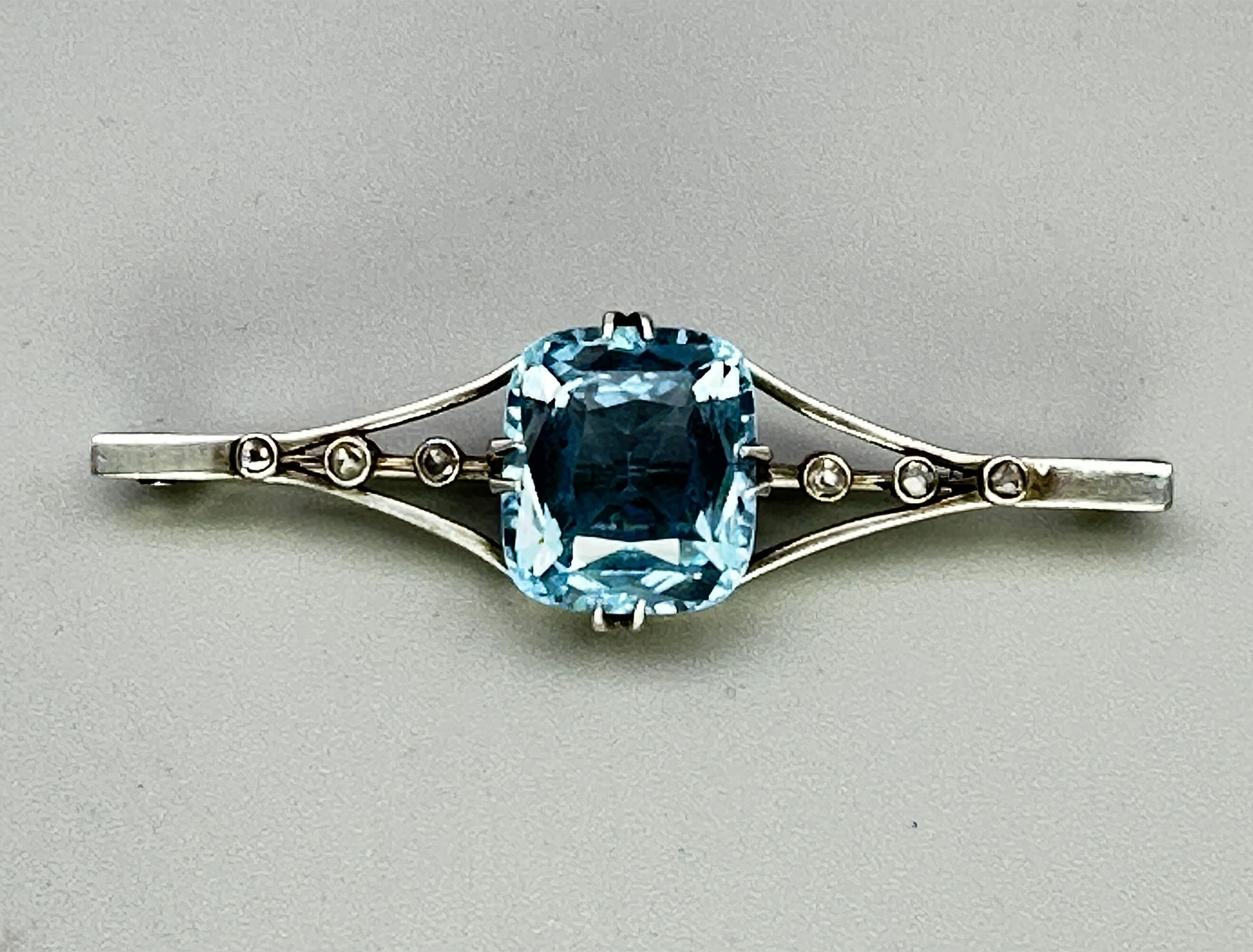
Art Deco brooch with large zircon stone c1930
Price: £175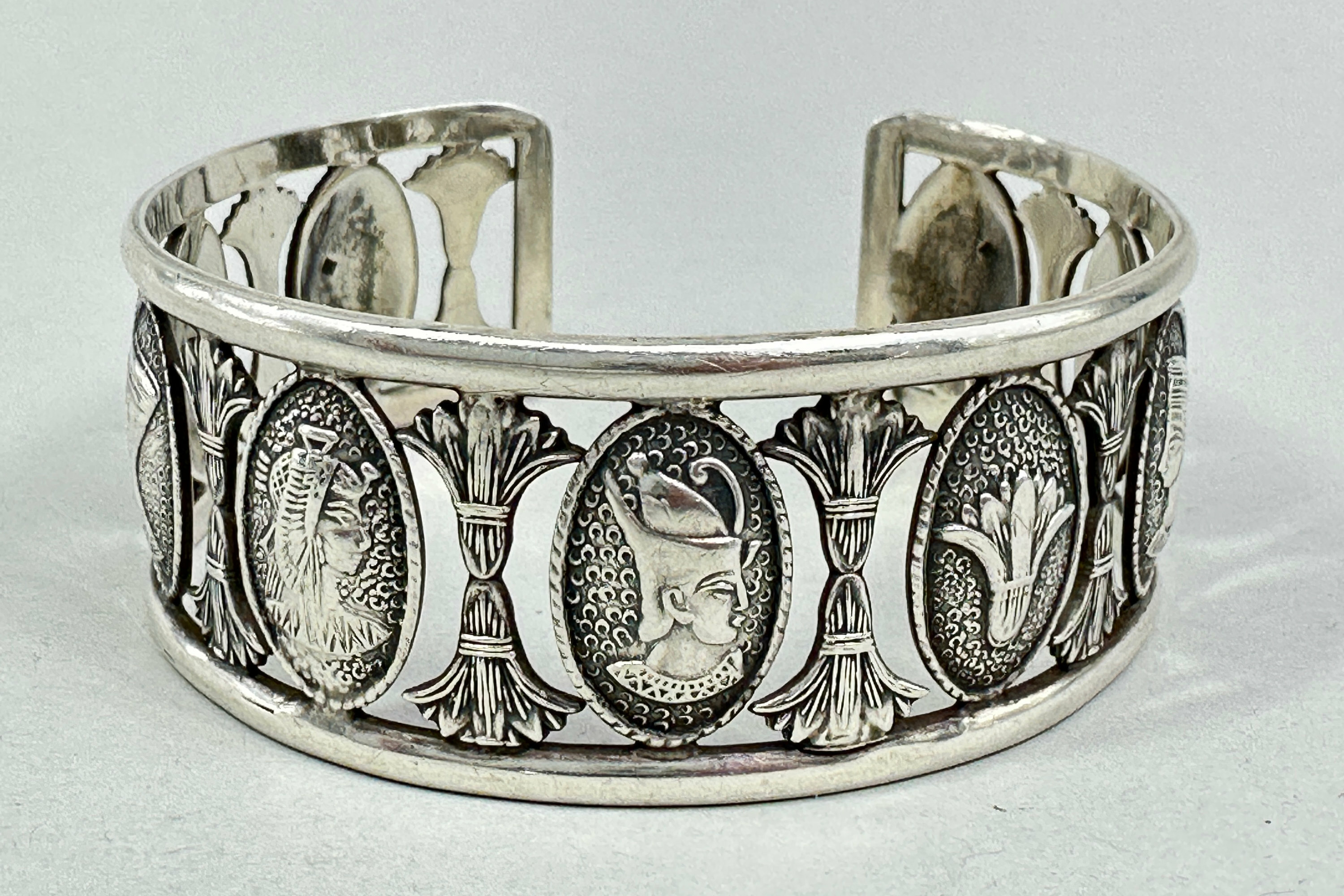
Egyptian silver cuff bangle with portait plaques of Pharoahs
Price: £85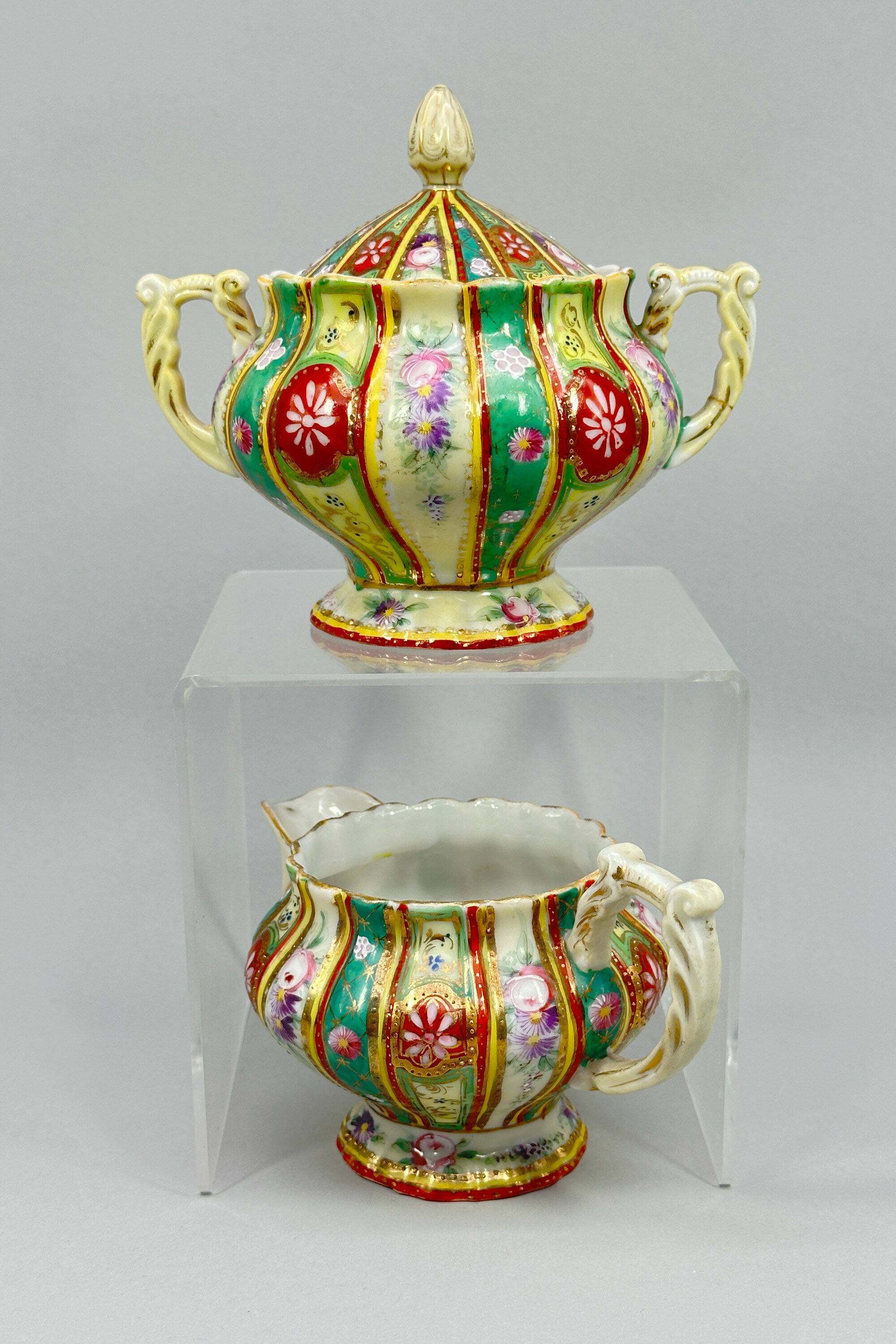
Vintage floral decorated Sugar Bowl and Cream Jug, probably Bohemian mid C20th
Price: £25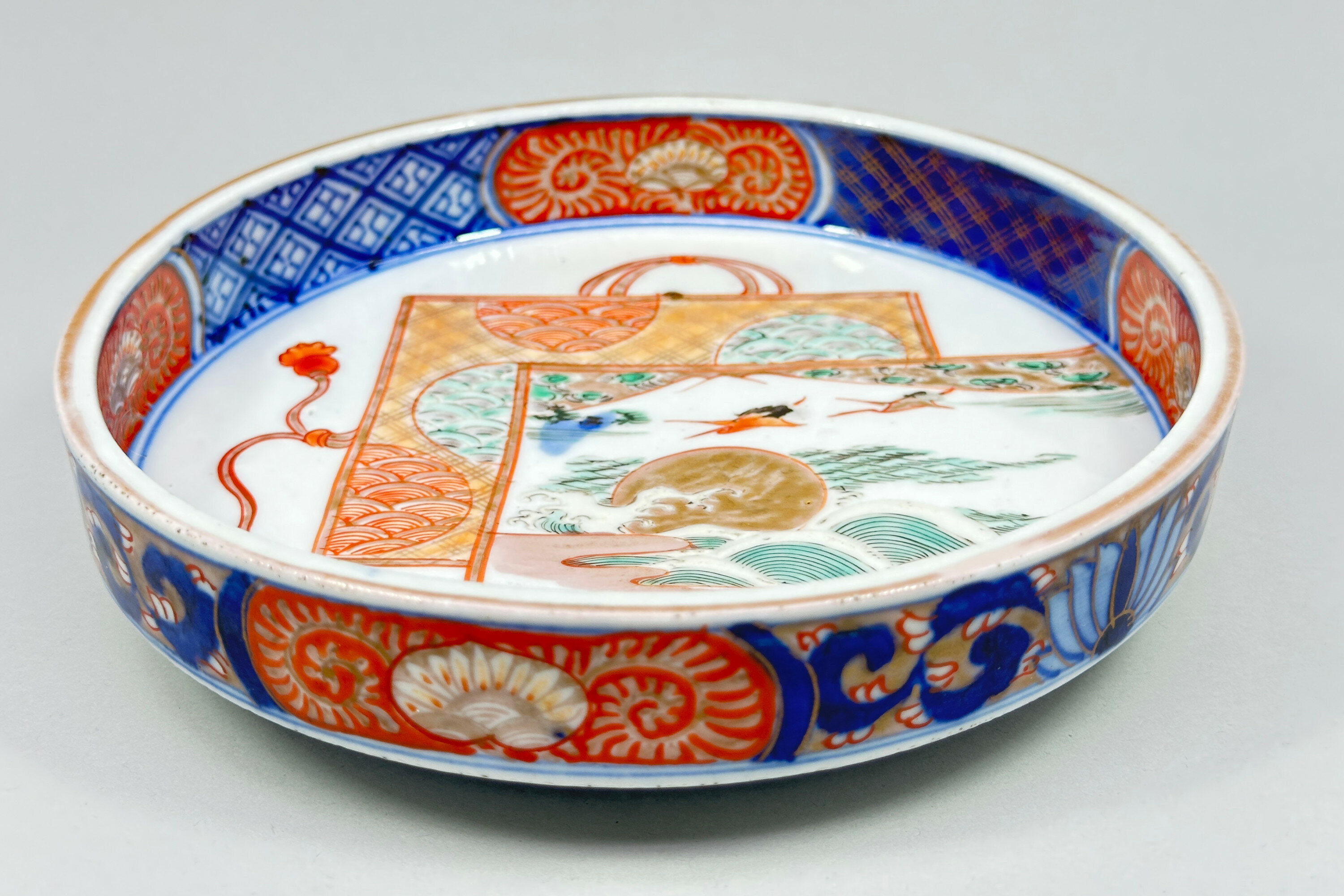
Japanese Arita shallow Bowl circa 1880
Price: £55The town of Arita in the former Hizen Province, northwestern Kyūshū island, was a major centre for the production of porcelains in Japan. Best known for blue and white pieces it also produced polychrome wares as well, including the familiar Imari colourings. While similar to Imari, the wider palette of colours used here is usually termed ‘Arita’ and this bowl employs not only the colourings but also many of the decorative elements found in these wares. The angular form, though, is unusual. Dating is to the Meiji era (1868-1912) probably around 1880.
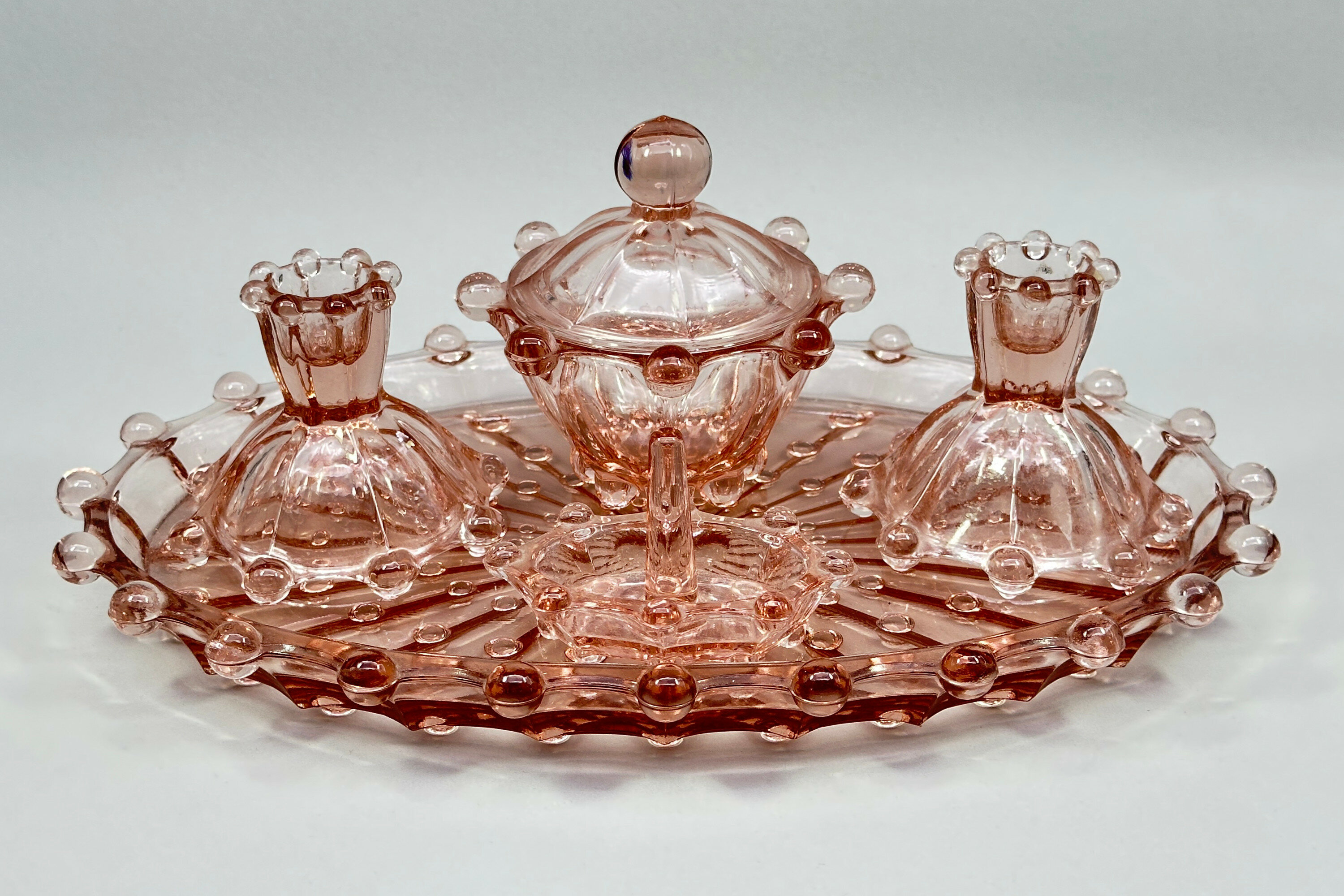
Pink pressed glass dressing table set, Libochoviche, Czech, 1950s
Price: £35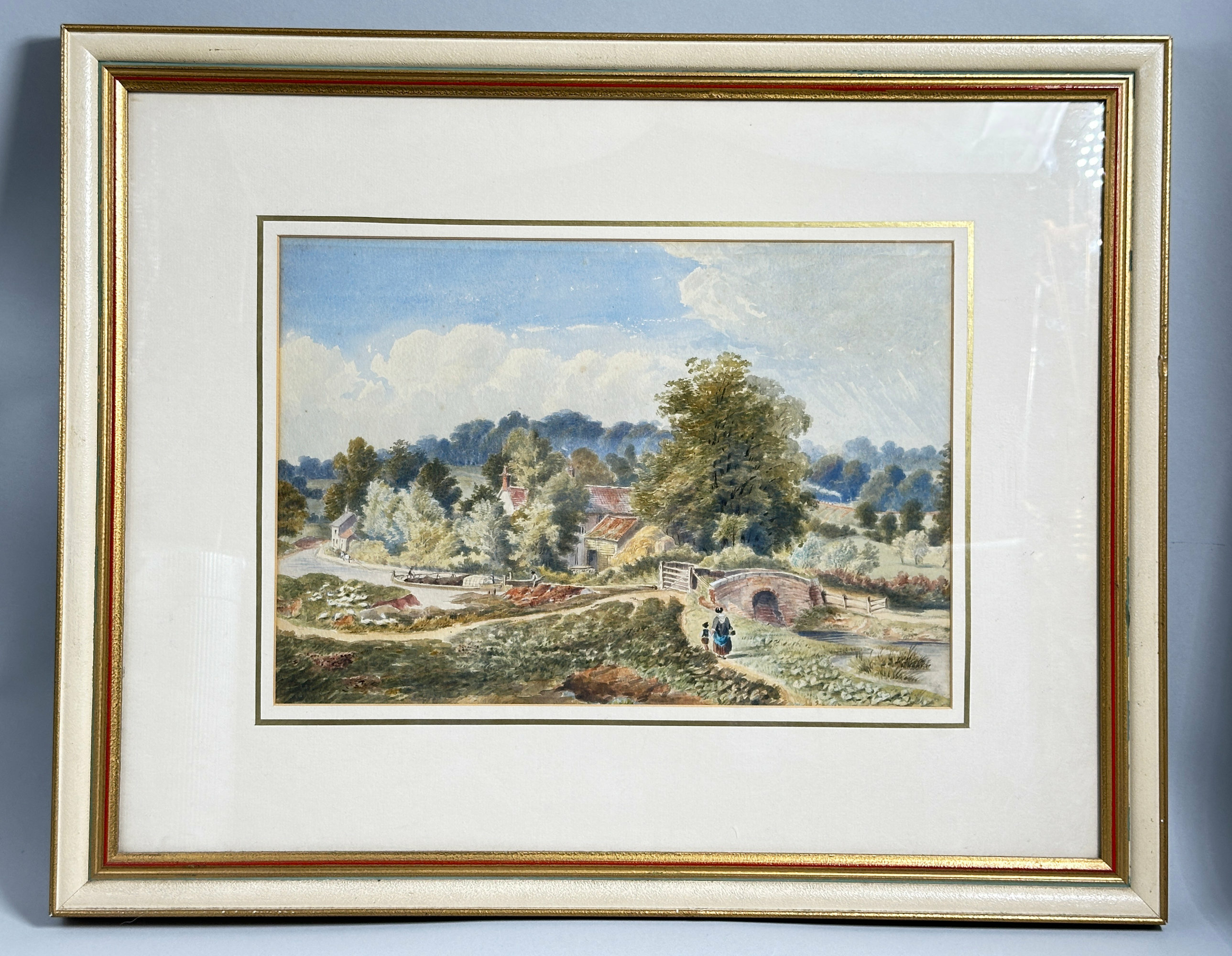
Framed Watercolour of a Countryside Scene, C20th
Price: £45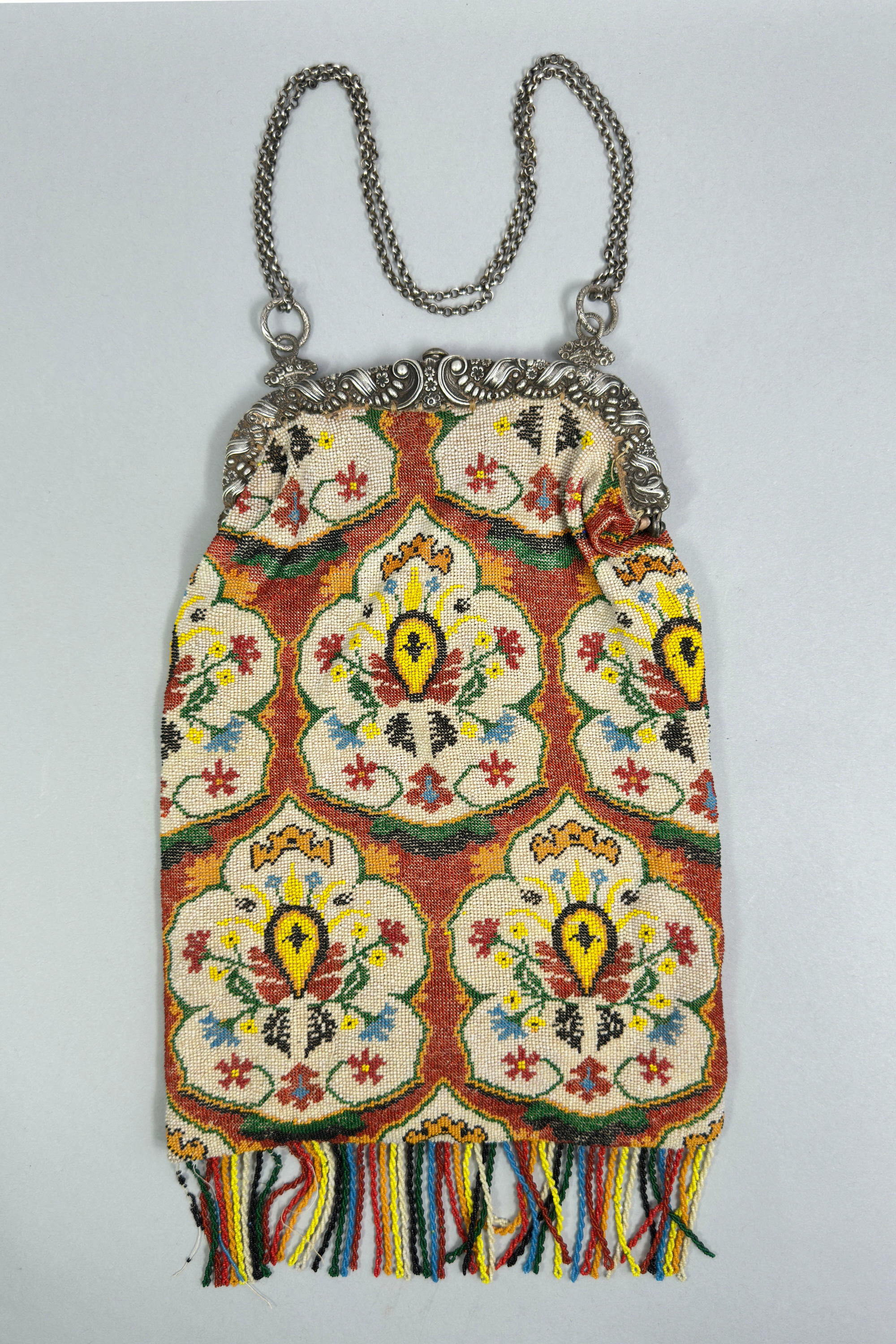
Micro bead silver mounted Flapper Bag, 1920s
Price: £125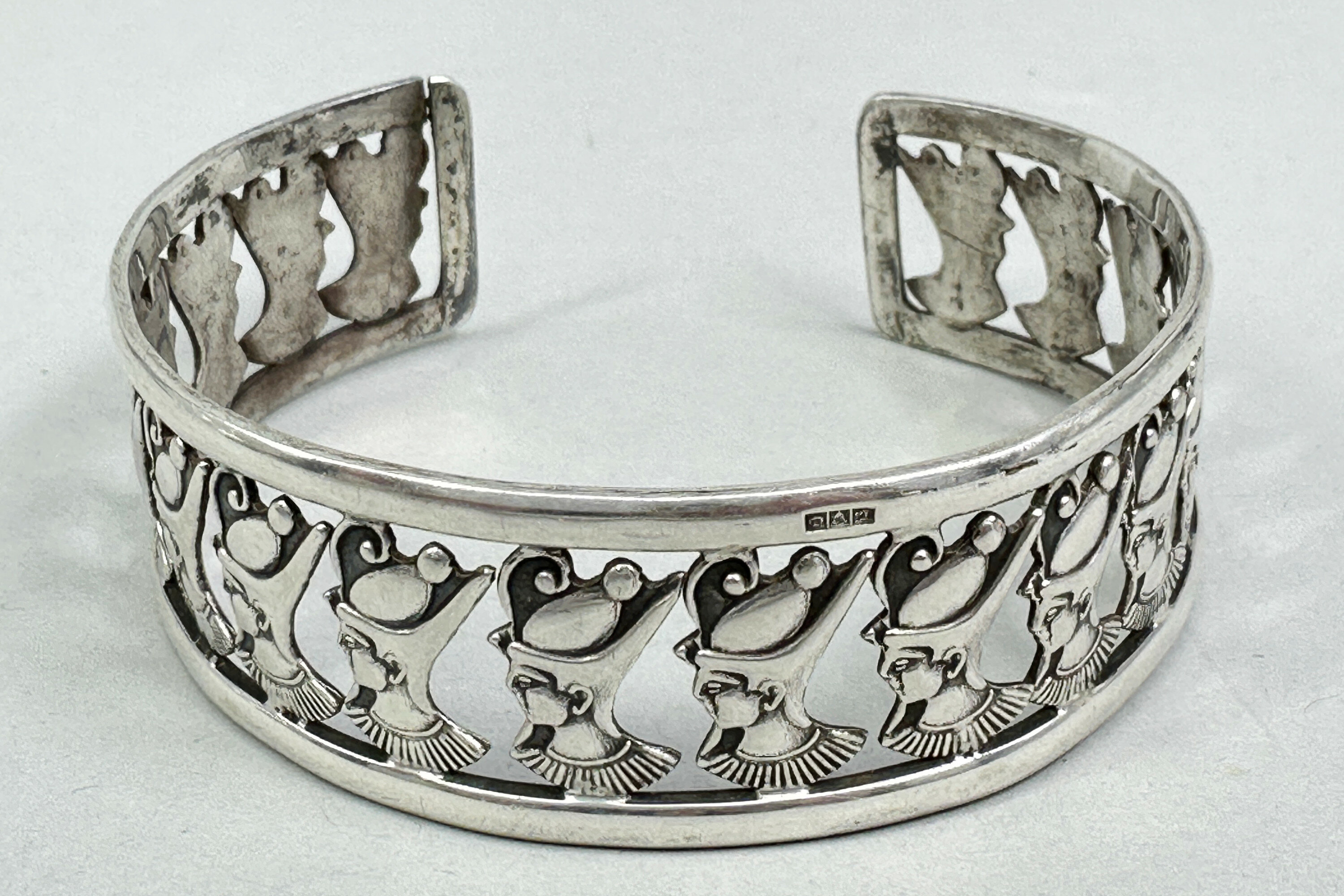
Egyptian revival Tutankhamun head silver Cuff Bracelet, 1940s
Price: £75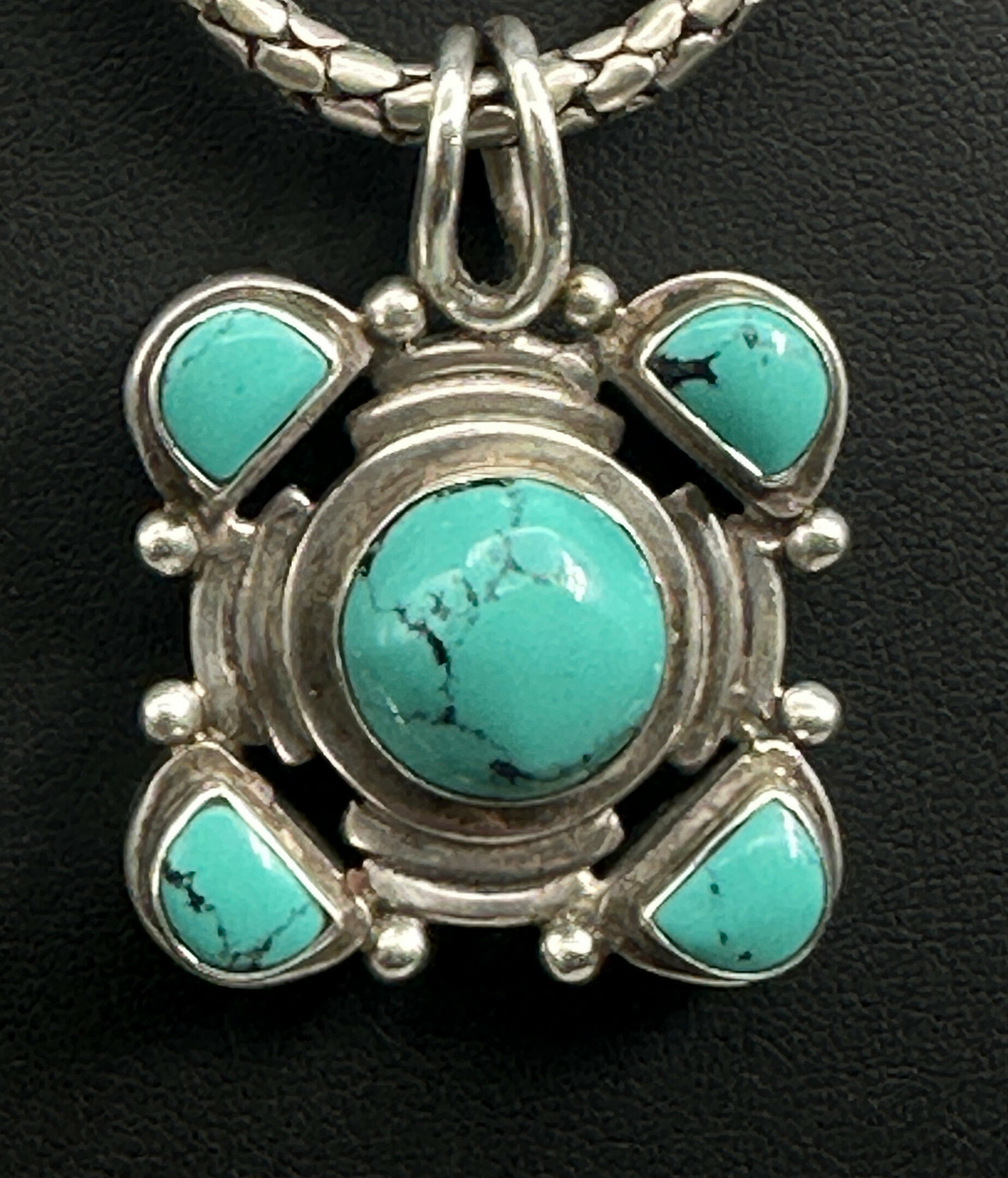
North American Turquoise pendant necklace c1990
Price: £150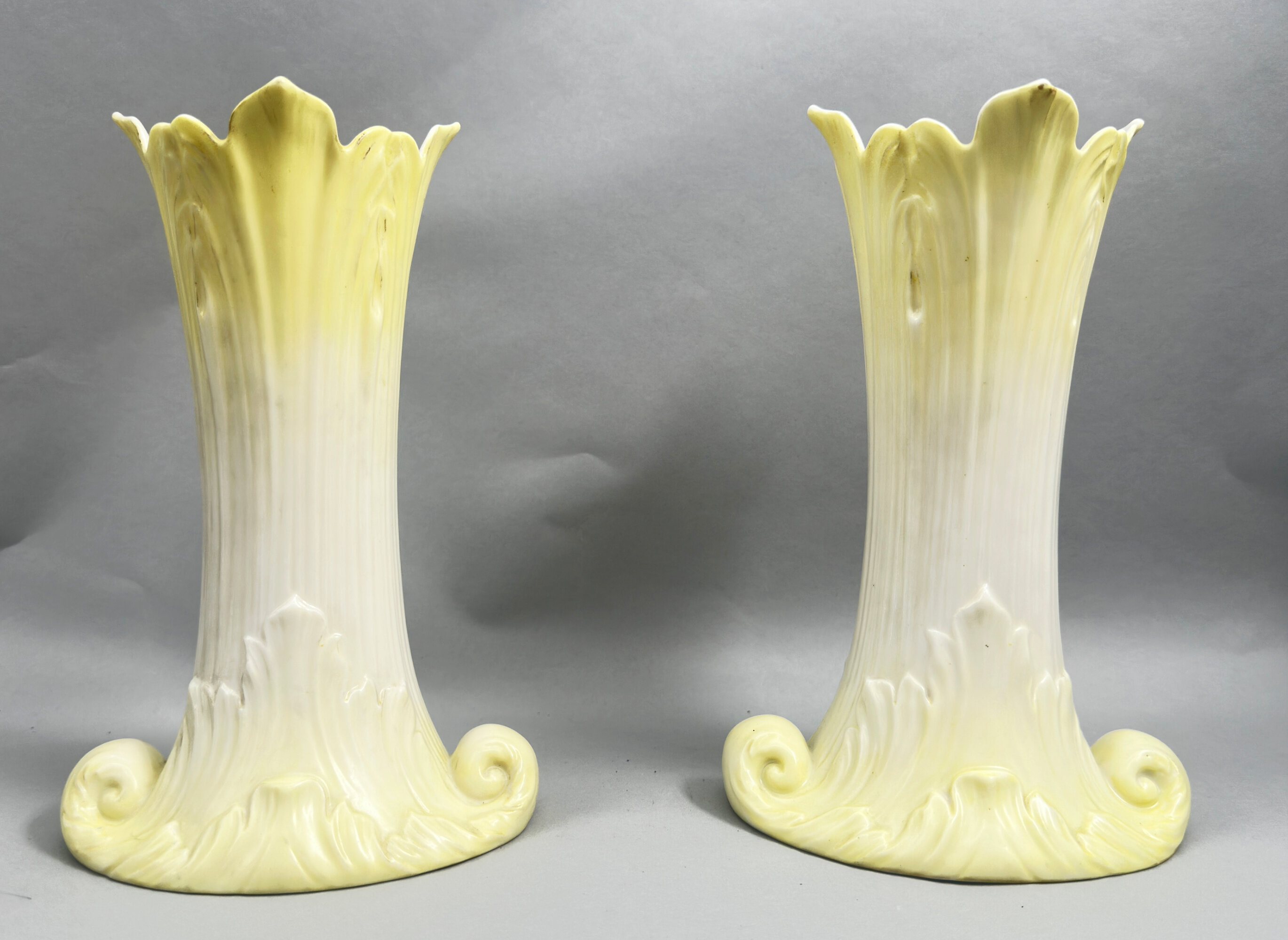
Pair of Royal Worcester Grainger and Co Vases, date mark for 1902
Price: £150The influence of the Art Nouveau movement, with its emphasis on organic and plant forms, is clearly seen here. The vases date to the early 1900s and were made by the ‘Grainger and Co’ branch of the celebrated Royal Worcester factory. The first porcelain factory at Worcester was set up in 1751 by John Wall (a doctor) and William Davis (an apothecary), along with 14 other businessmen. Fifty years later in 1801 Thomas Grainger (1783–1839) started a rival company ‘Grainger’s Worcester Porcelain’ and during the nineteenth century both companies traded successfully. However following the death of George Grainger, the son of Thomas Grainger, in 1889 the Grainger factory was sold to Royal Worcester who continued manufacture on its old rival firm’s St.Martin’s Gate site until finally closing the works in 1902. Ivory style porcelains were one of the specialities of this brief manufacturing period and the date mark ‘L’ which appears on these vases is for the year 1902, just before the two concerns were completely merged.
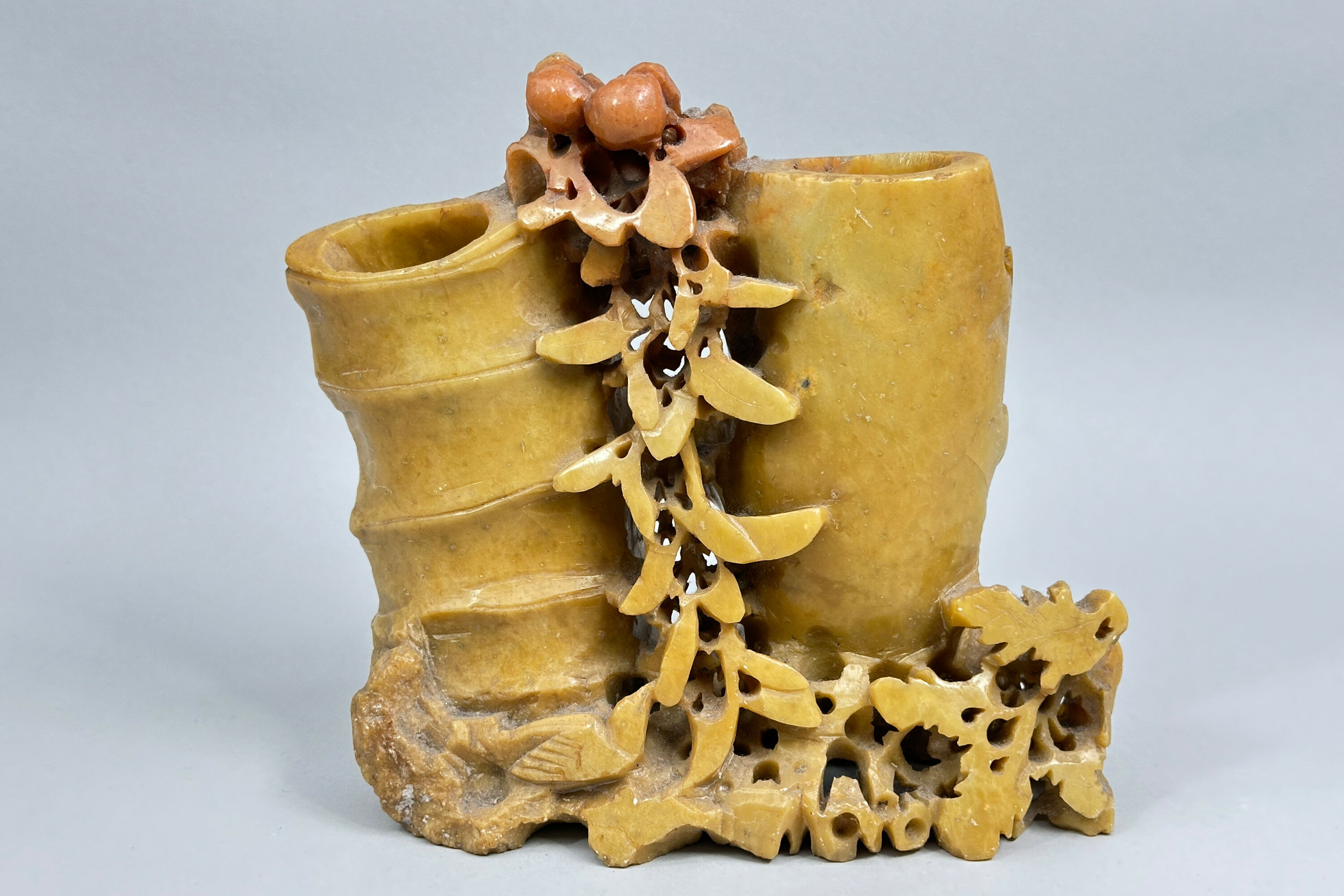
Chinese Soapstone Double Brushwasher, C20th
Price: £45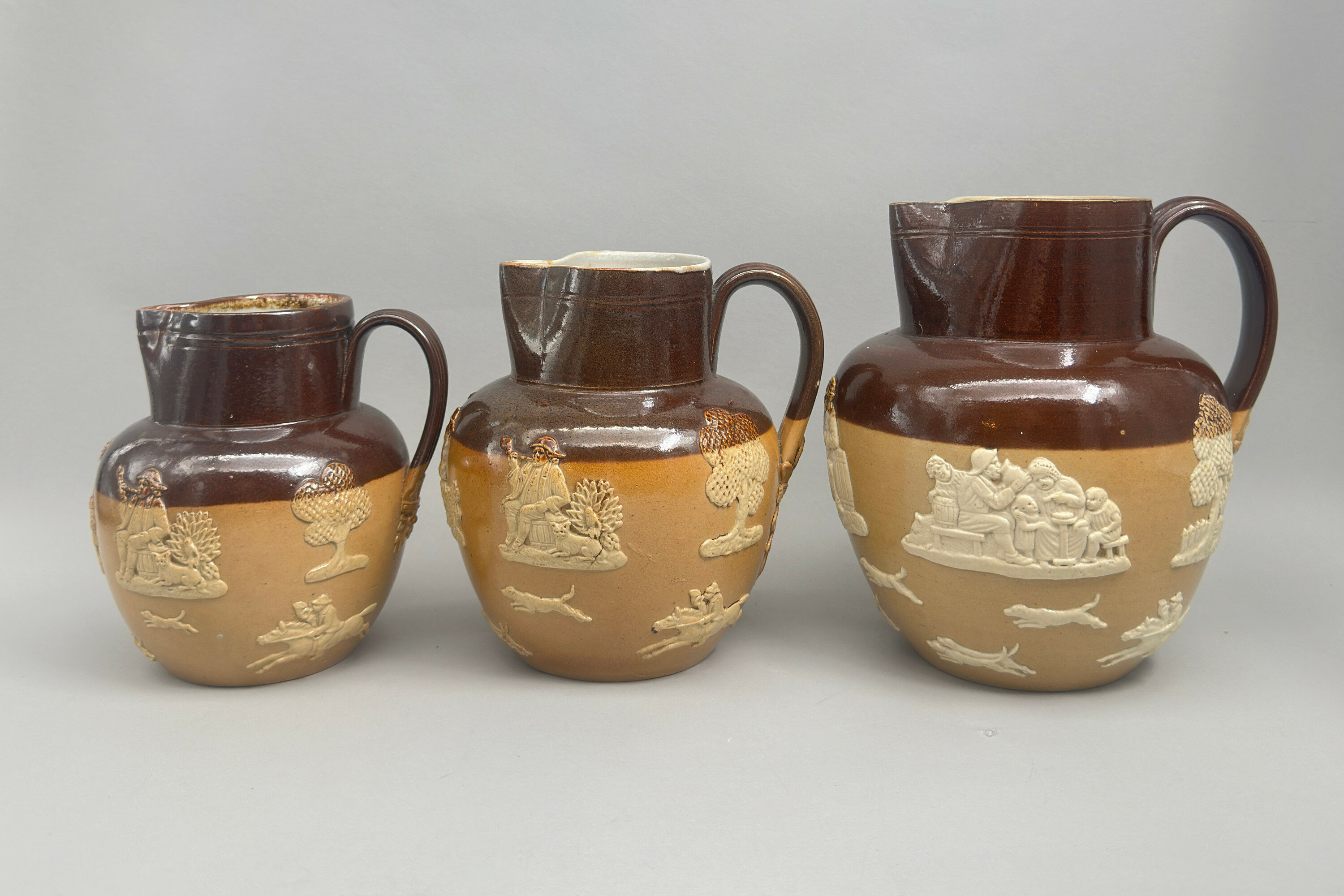
Graduated set of three Royal Doulton Harvest Pattern Jugs, early C20th
Price: £150While this model, often called the ‘harvest pattern’, is found quite often, it is very unusual to see a graduated set of three, all matching. The form of the mark, where the lion does not sit above a crown, was used between 1922 and 1927 which gives us the dating here. The largest jug carries the letter ‘a’ which was a decorator’s mark and stands for Louisa Ayling. Perhaps she worked on all three, but this must remain a guess although the quality of the work on all three is quite consistent producing a highly decorative and attractive ensemble.
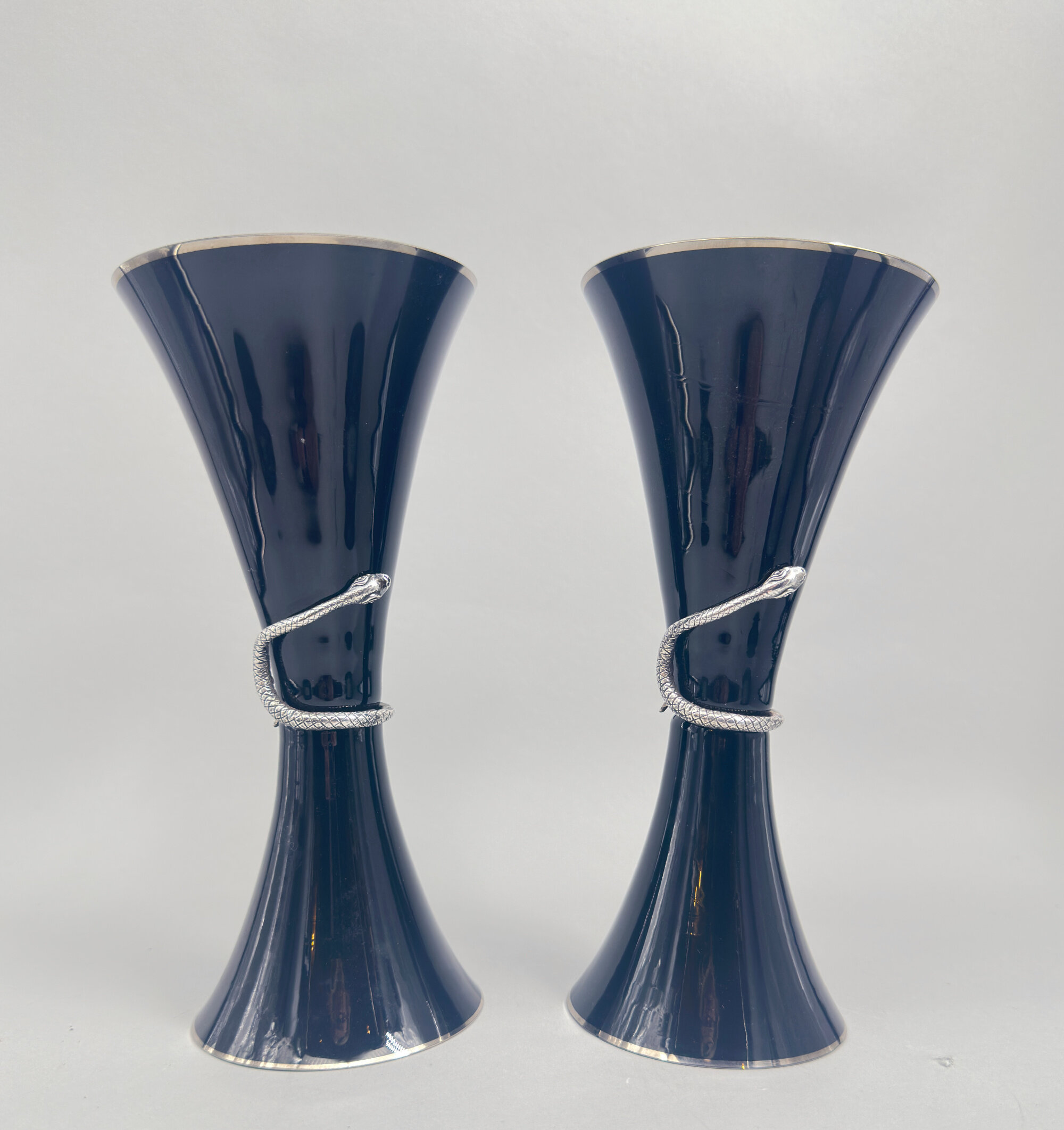
Pair of Art Deco glass Vases with applied silver snakes, 1930s
Price: £95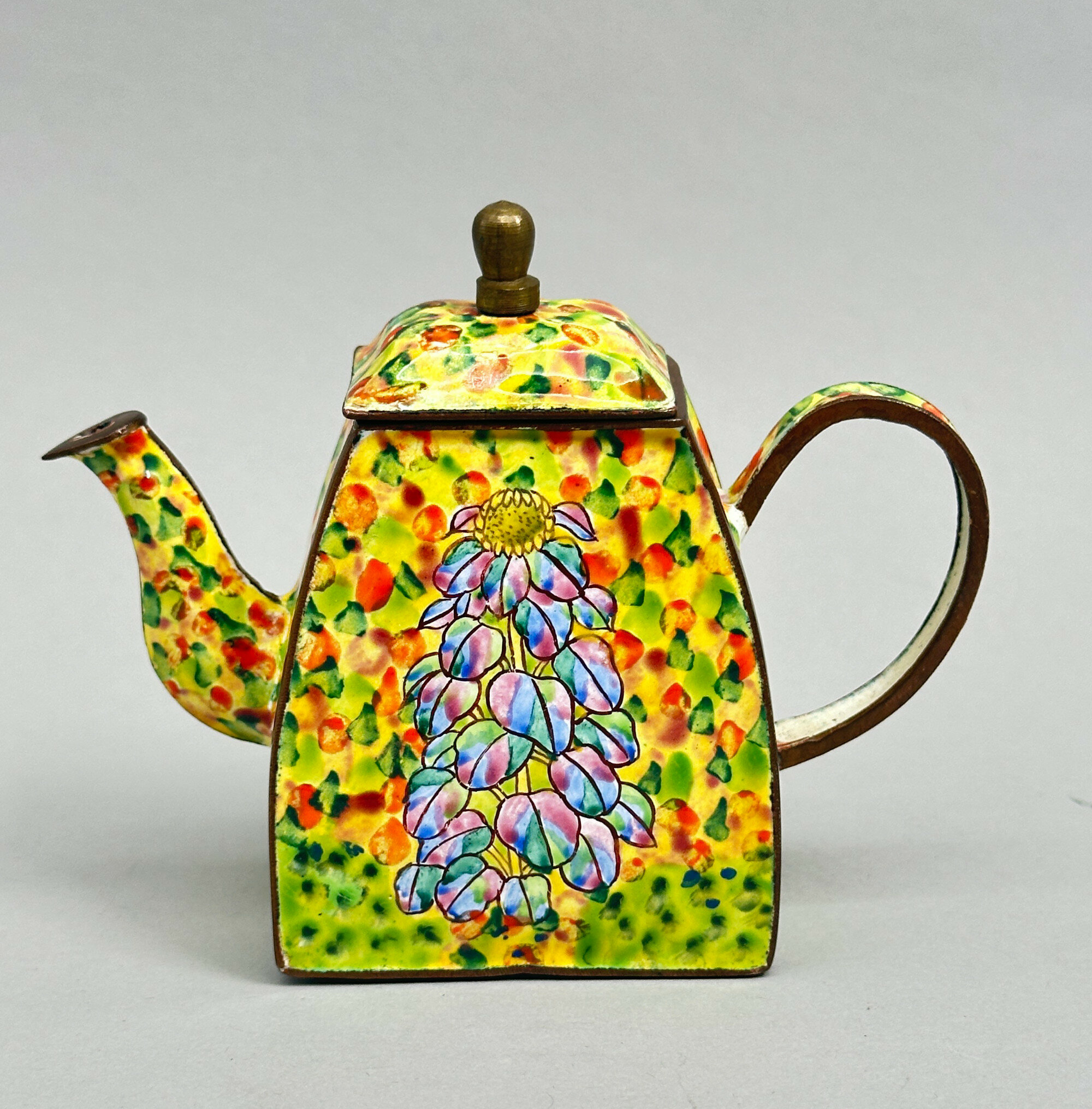
Trade+Aid Enamel Teapot, No.292.UK, 1990s
Price: £25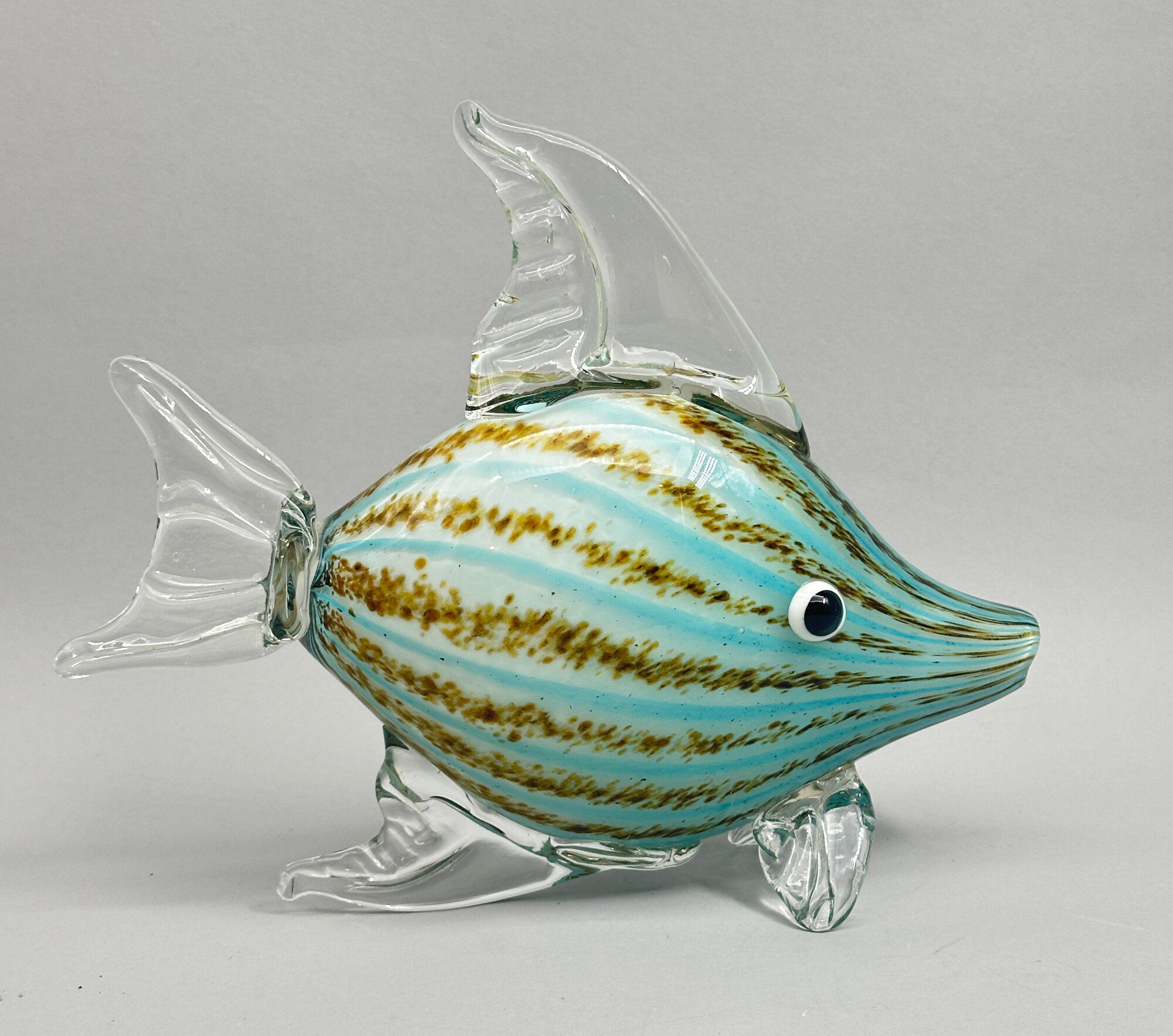
Murano Glass Fish, second half C20th
Price: £55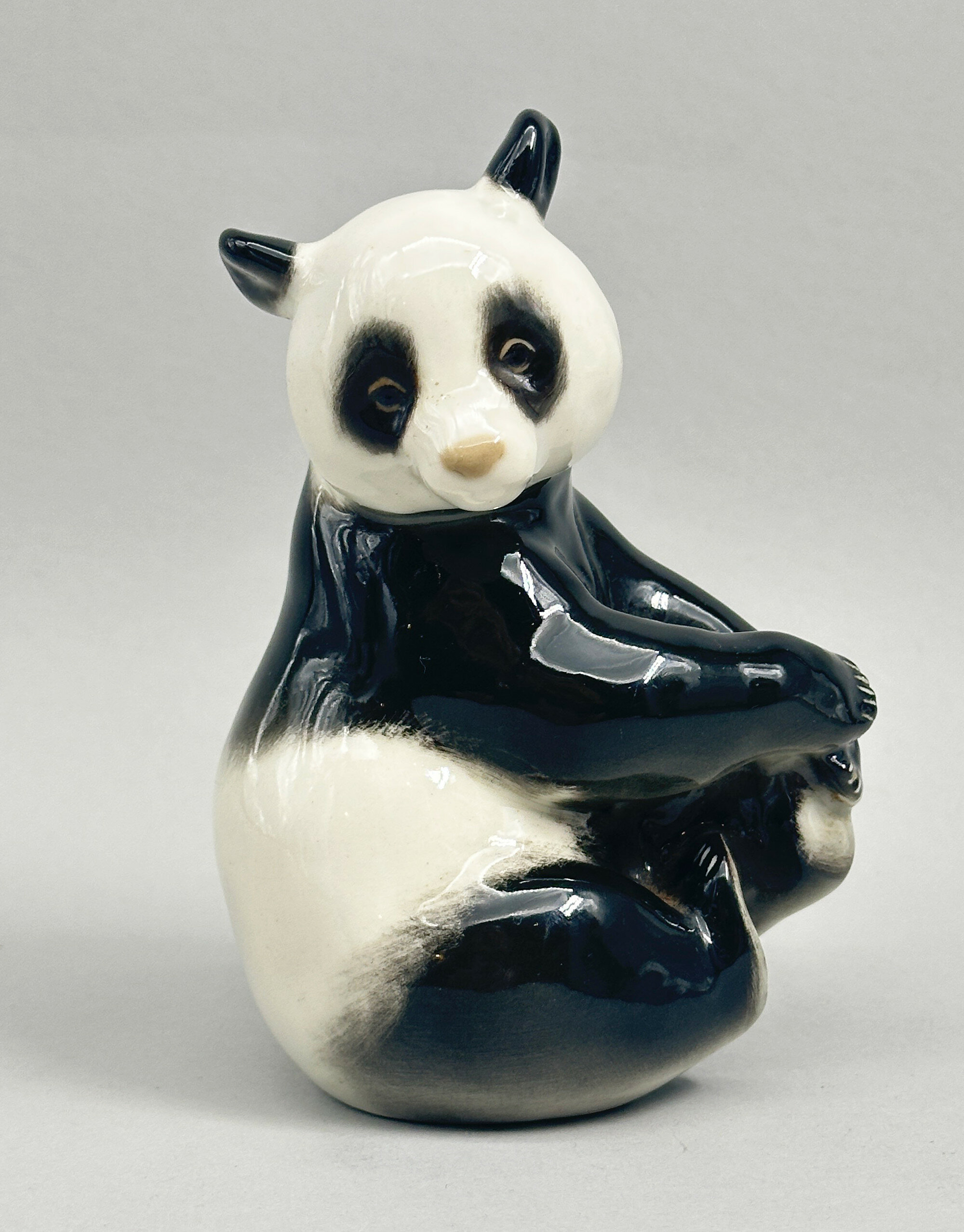
Porcelain Figure of a seated Panda, Lomonosov, USSR late C20th
Price: £25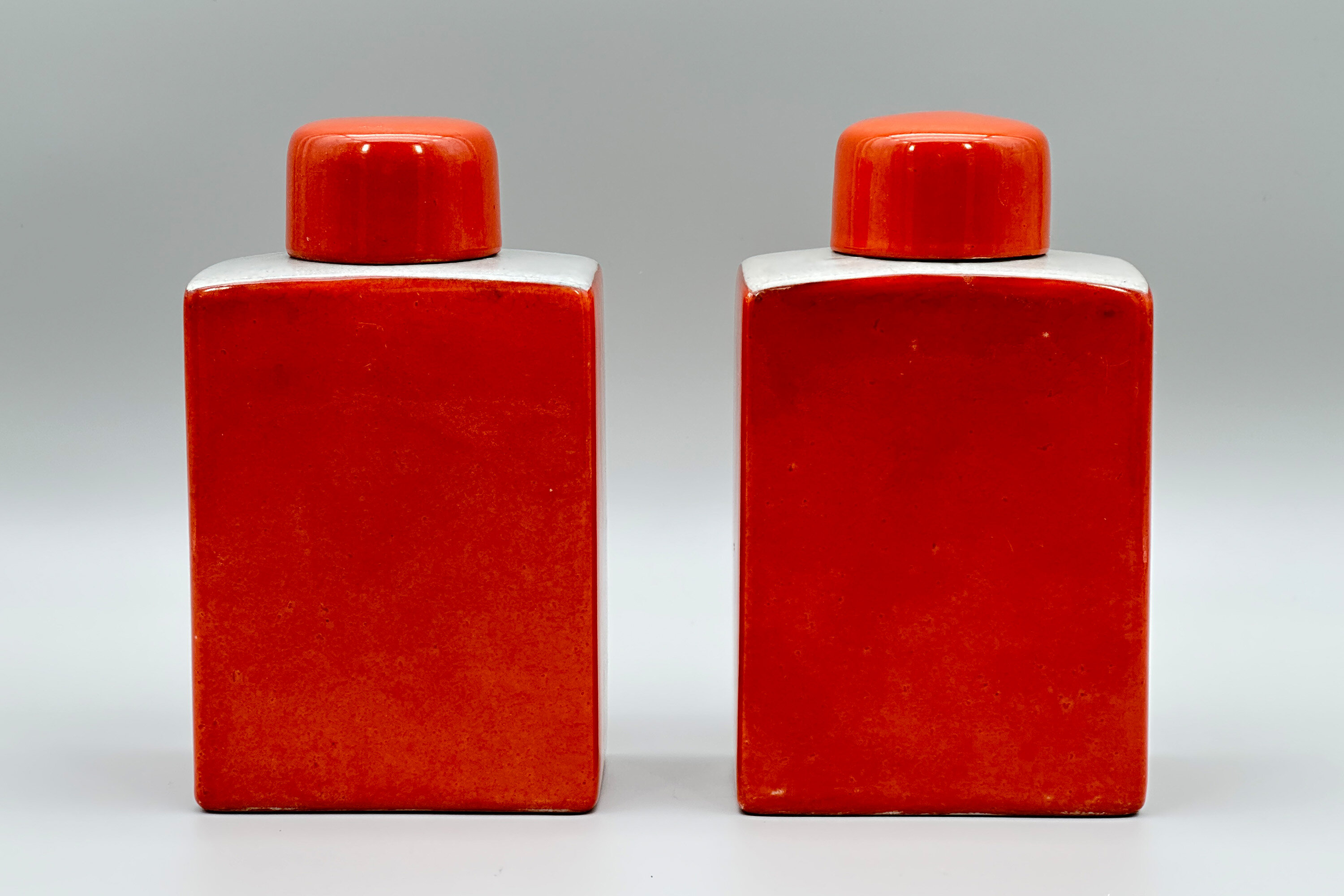
Pair of Orange Glazed Flasks and Covers, Fabienne Jouvin Paris, C20th
Price: £150The French designer Fabienne Jouvin (see image 9) graduated from the superior school of applied arts Duperré in 1985. Since then, she has travelled the world collecting designs for pieces sold and exhibited under her name internationally, with a studio based in Paris. On her website, she writes “From my travels - from Tokyo to The Habana, from the streets of Paris to the sea bed of The Maldives - I bring back sketchbooks, pads of notes, drawings and collages: hispanic or contempory architectures, faces reminding those of Piero Della Francesca, enigmatic objects non identified... These spontaneous sketchbooks give rise to unique pieces and editions painting, textile, porcelain, cloisonné...”. Her first exhibition was in 1989 and in 1996 she began an association with the firm ‘Asiatides’ allowing her to create pieces made in China and Thailand and utilising their designs and techniques.
This pair of flasks, possibly intended as tea caddies, are typical of her ability to give a ‘twist’ to the pieces from which she draws her inspiration. The shape is Chinese from the seventeenth century (see image 10), while the iron red colour is found on Chinese pieces two hundred or more years later. Combining this with a white ‘crackle glaze’, also well known from Chinese ceramics, was Jouvin’s own idea completing the mix of ancient and modern. Marked as from the Asiatides range with the stylised ‘A’, pieces like these are no longer available currently implying that they were probably made early on in her association with the firm and now have a uniqueness of their own.
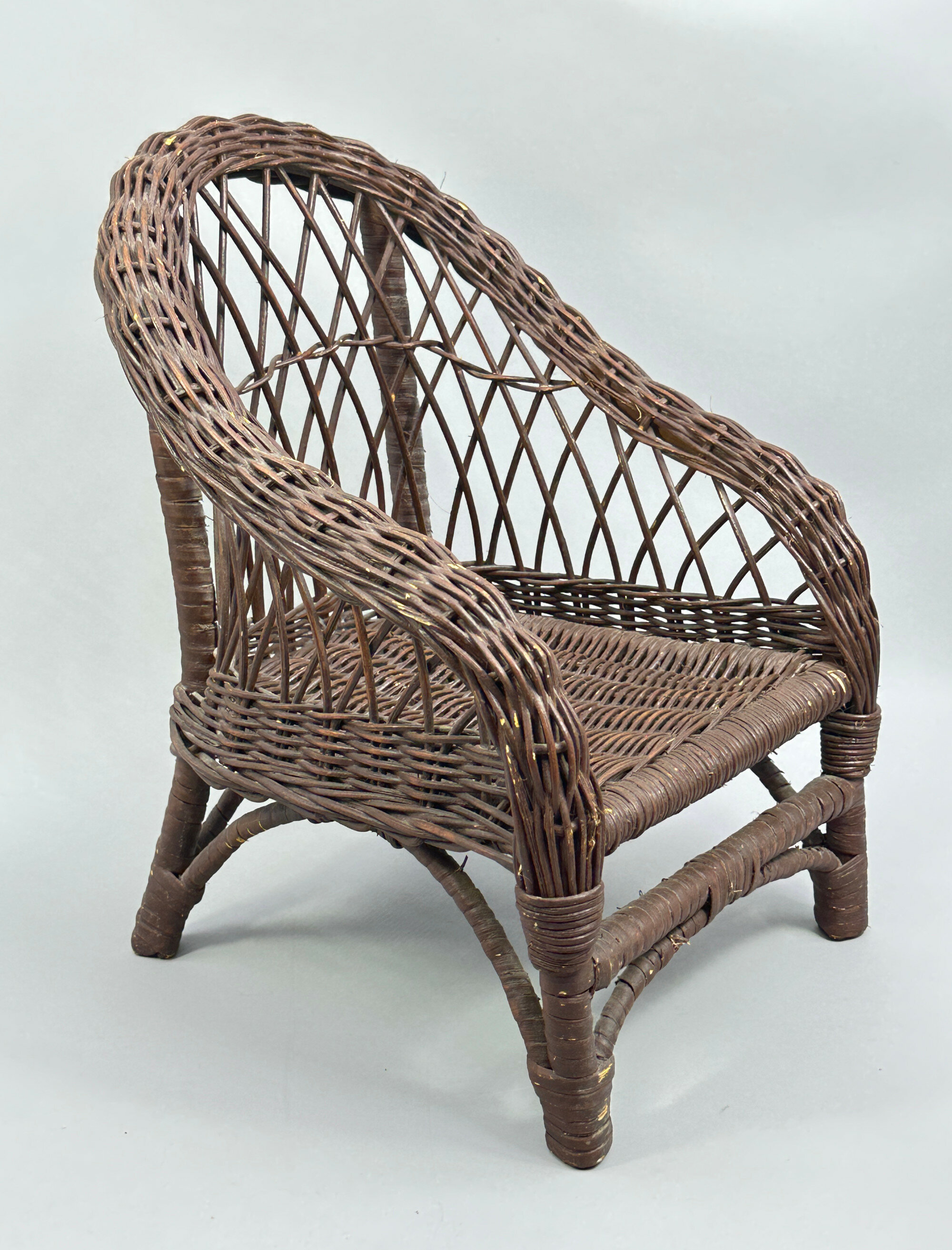
Toy Wicker Chair, mid C20th
Price: £35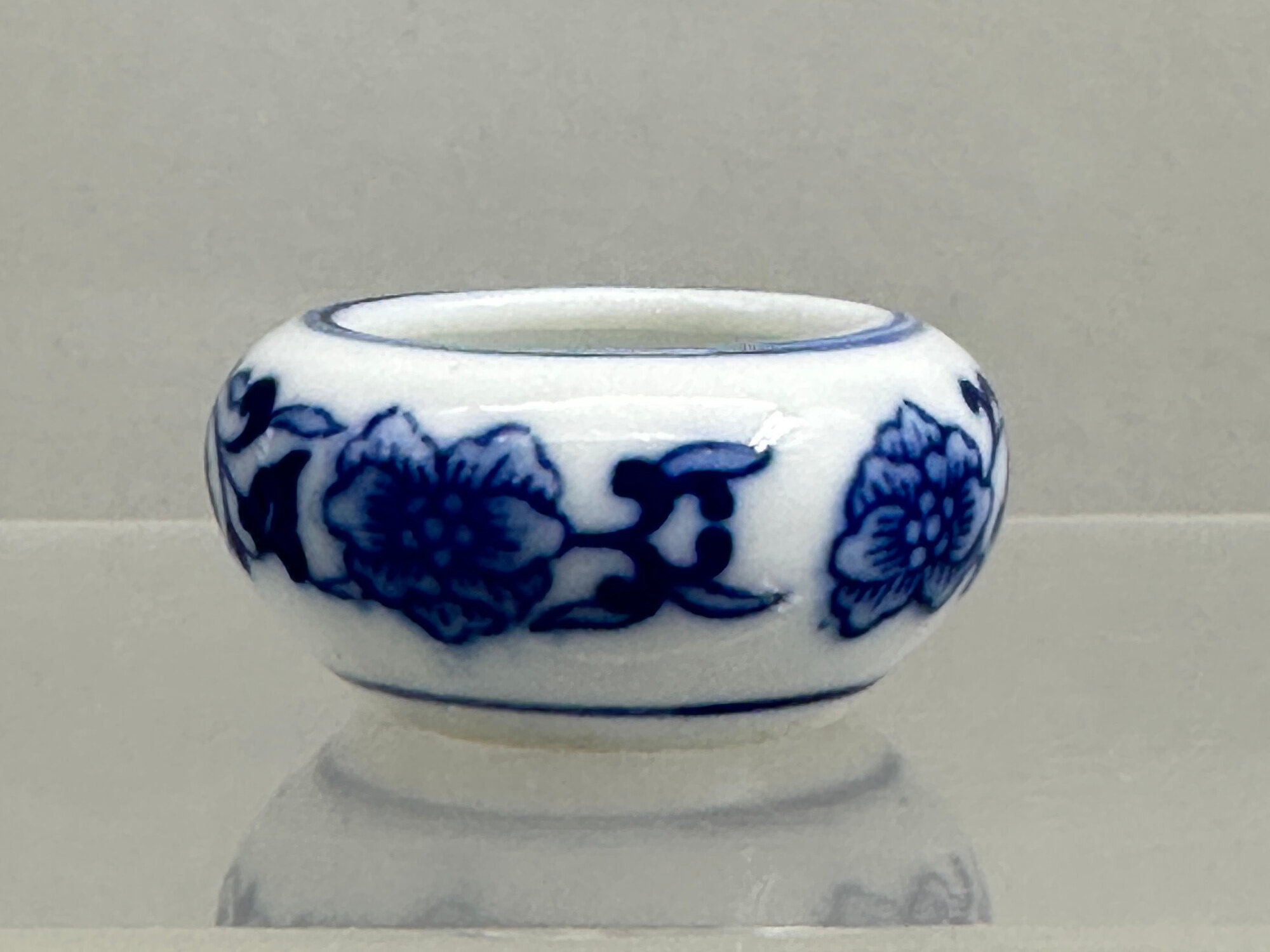
Small Chinese Blue and White Brushwasher, C20th
Price: £25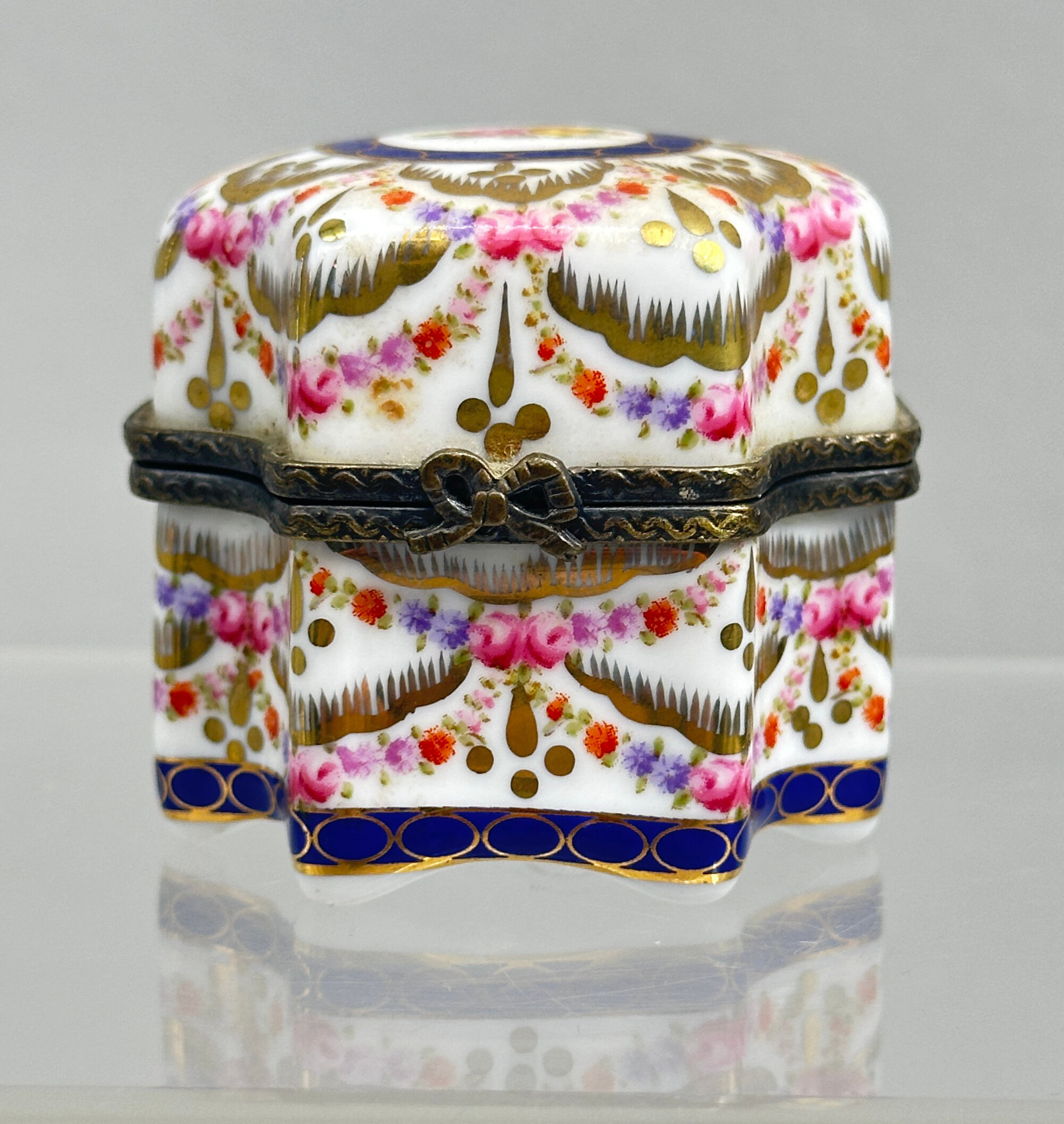
Reproduction Limoges Porcelain Box with Scent Bottles, Modern
Price: £25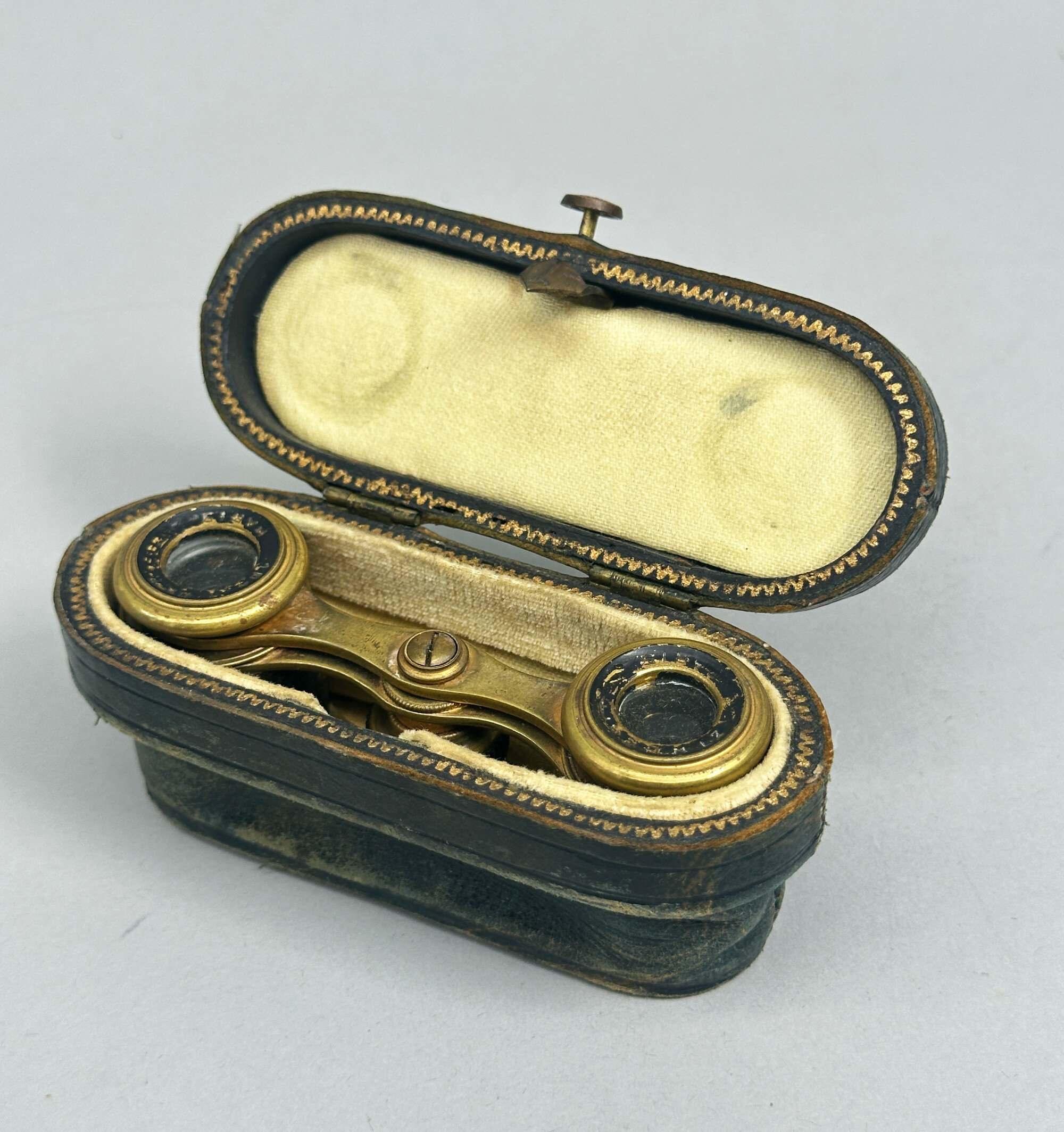
Pair of Opera Binocular Glasses in green leather Case, French, first half C20th
Price: £25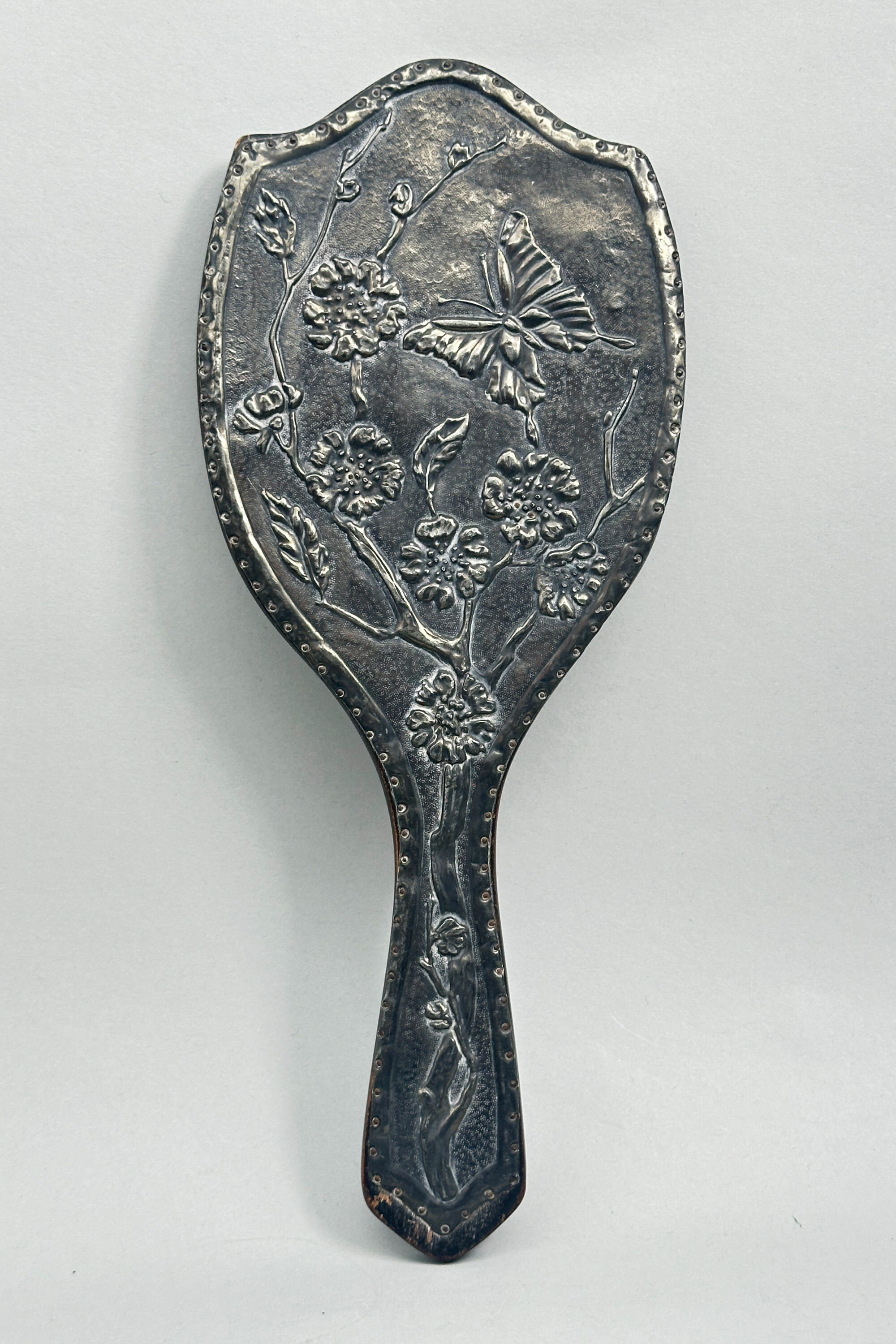
Arts and Crafts Hand Mirror with Repousse Decoration, circa 1900
Price: £55Elements of two contrasting contemporary styles combine here with features from both the Arts and Crafts and the Art Nouveau movement. The hammered pewter with the almost rustic nail head fixings and the red bead reflect the former but the elegant depiction of the lotus and butterfly, with more than a hint of the Orient, reflect the latter. The maker is anonymous but doubtless British and clearly a highly skilled craftsman. Much thought and expertise went into the design of this piece which would be a desirable addition for collectors of either or both of the pieces made under the influence of these two highly popular design movements.
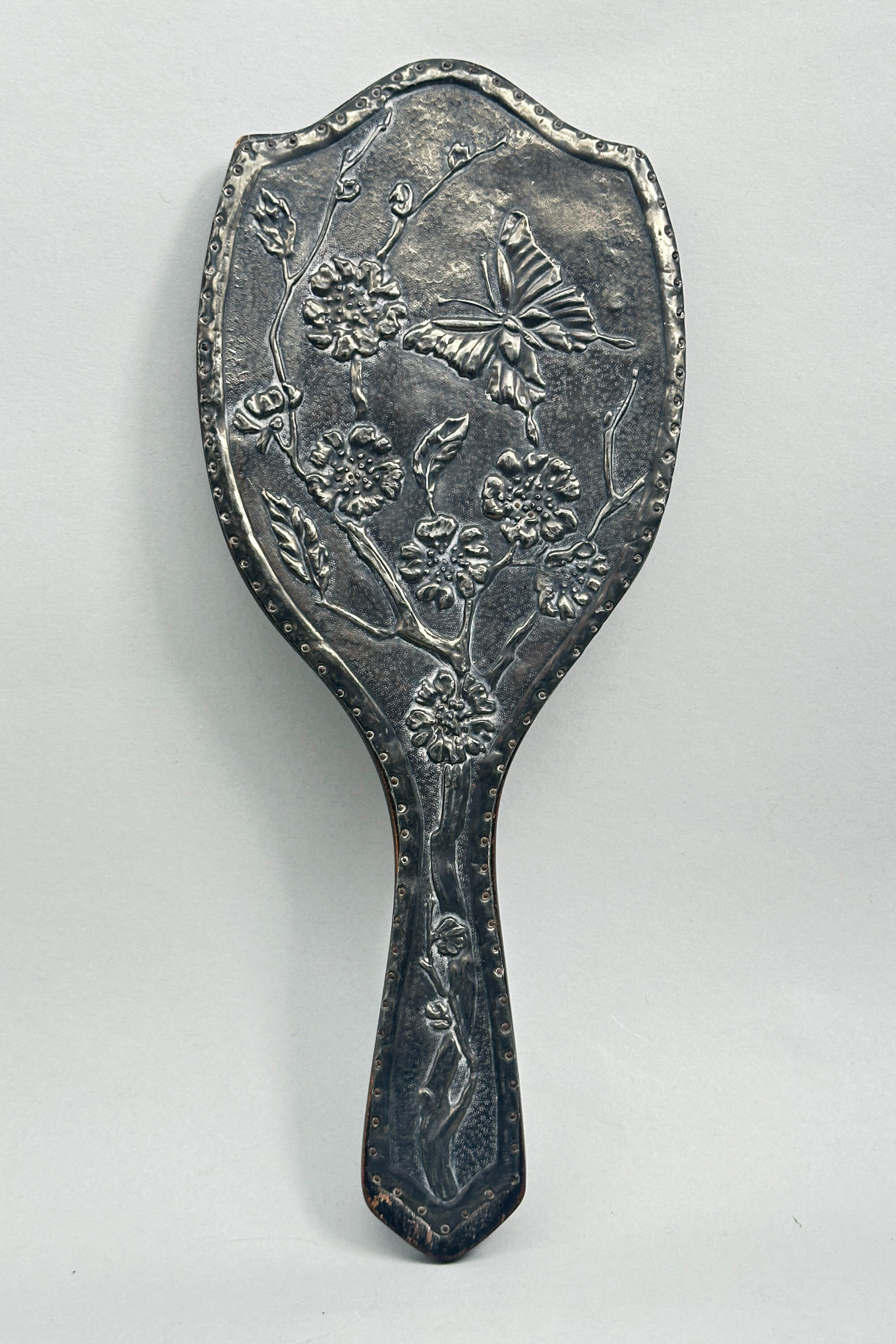
Arts and Crafts Hand Mirror with Repousse Decoration, circa 1900
Price: £55Elements of two contrasting contemporary styles combine here with features from both the Arts and Crafts and the Art Nouveau movement. The hammered pewter with the almost rustic nail head fixings and the red bead reflect the former but the elegant depiction of the lotus and butterfly, with more than a hint of the Orient, reflect the latter. The maker is anonymous but doubtless British and clearly a highly skilled craftsman. Much thought and expertise went into the design of this piece which would be a desirable addition for collectors of either or both of the pieces made under the influence of these two highly popular design movements.
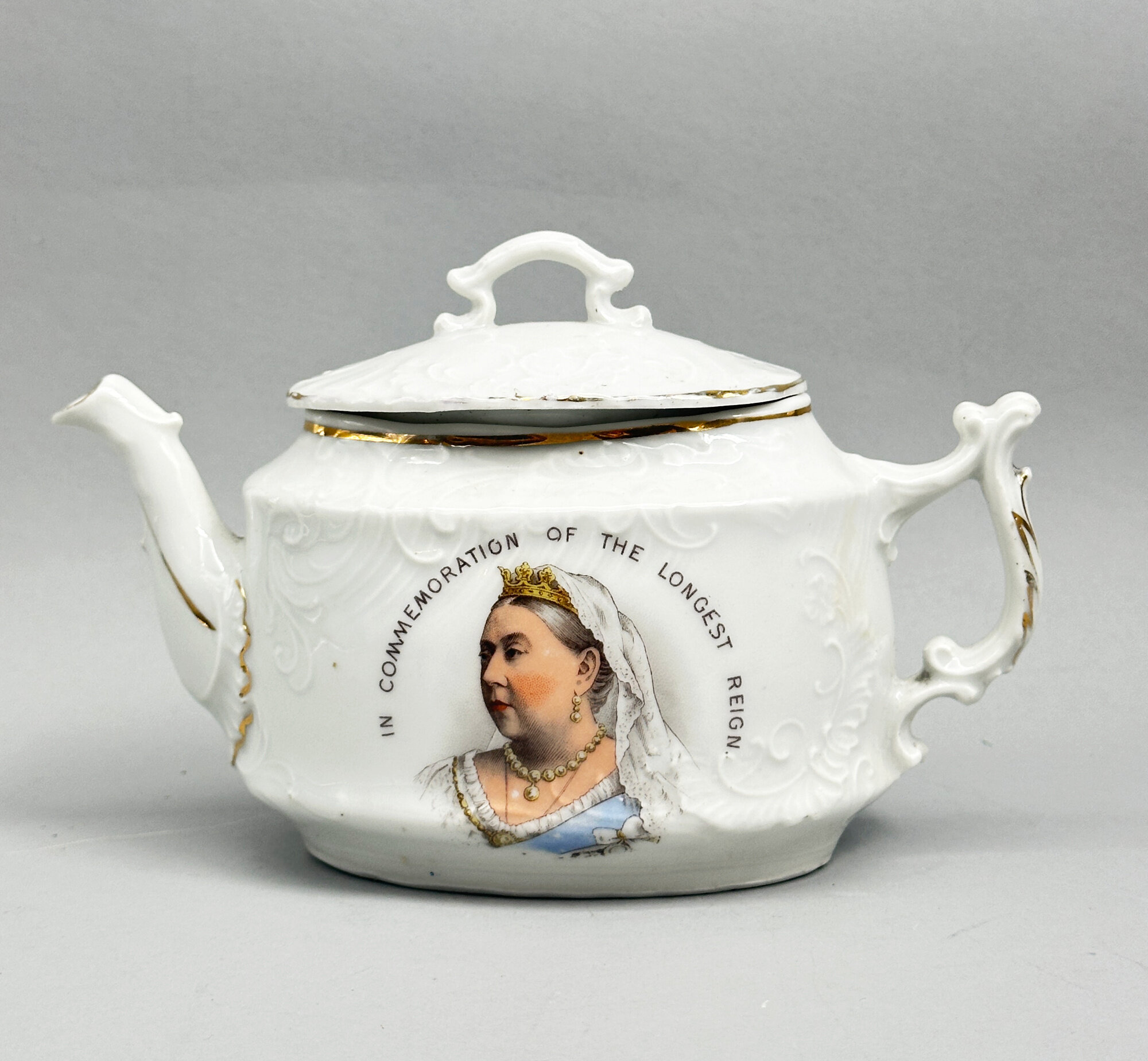
Reproduction Queen Victoria Diamond Jubilee Teapot, Modern
Price: £35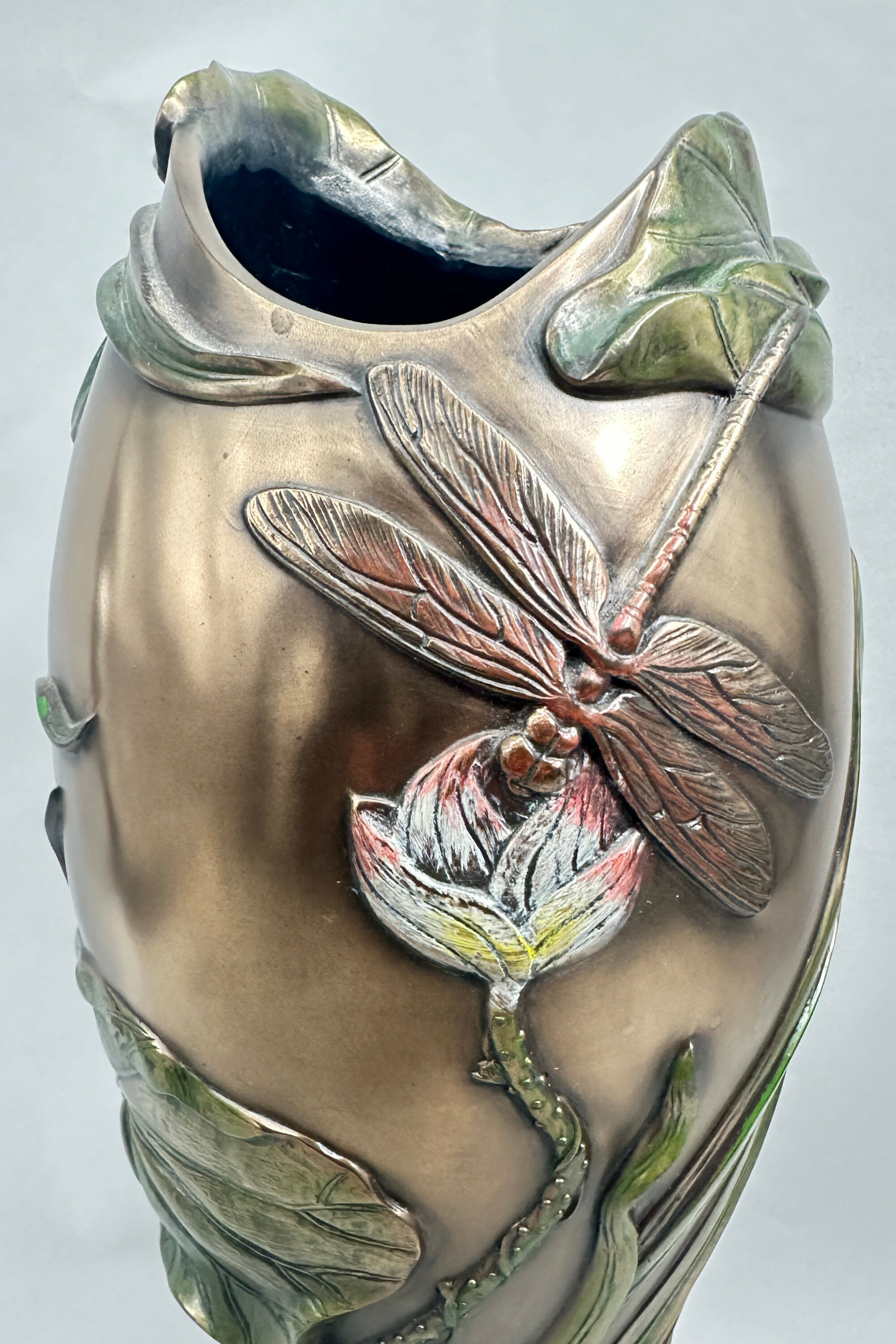
Past Times Art Nouveau Style Vase, Veronese Collection, 2004
Price: £45‘Past Times’ was founded in 1986 by John Beale, at first as a mail order company but then trading from physical stores and developing into a business which enjoyed enormous popularity with over one hundred shops in the early 2000s. The stock was focused on retro and vintage style items also including a wide range of licensed products, such as Harry Potter and Beatrix Potter merchandise. Badly impacted by the recession in 2008 it went into administration in 2012 and was bought by W.H.Smith a year later leading to the disappearance of its products from the marketplace.
This ‘Art Nouveau’ vase can be seen as an example of their range at its best. Manufactured with care it presents an appealing souvenir of the era it aims to recreate at a rather more affordable price than the authentic originals.
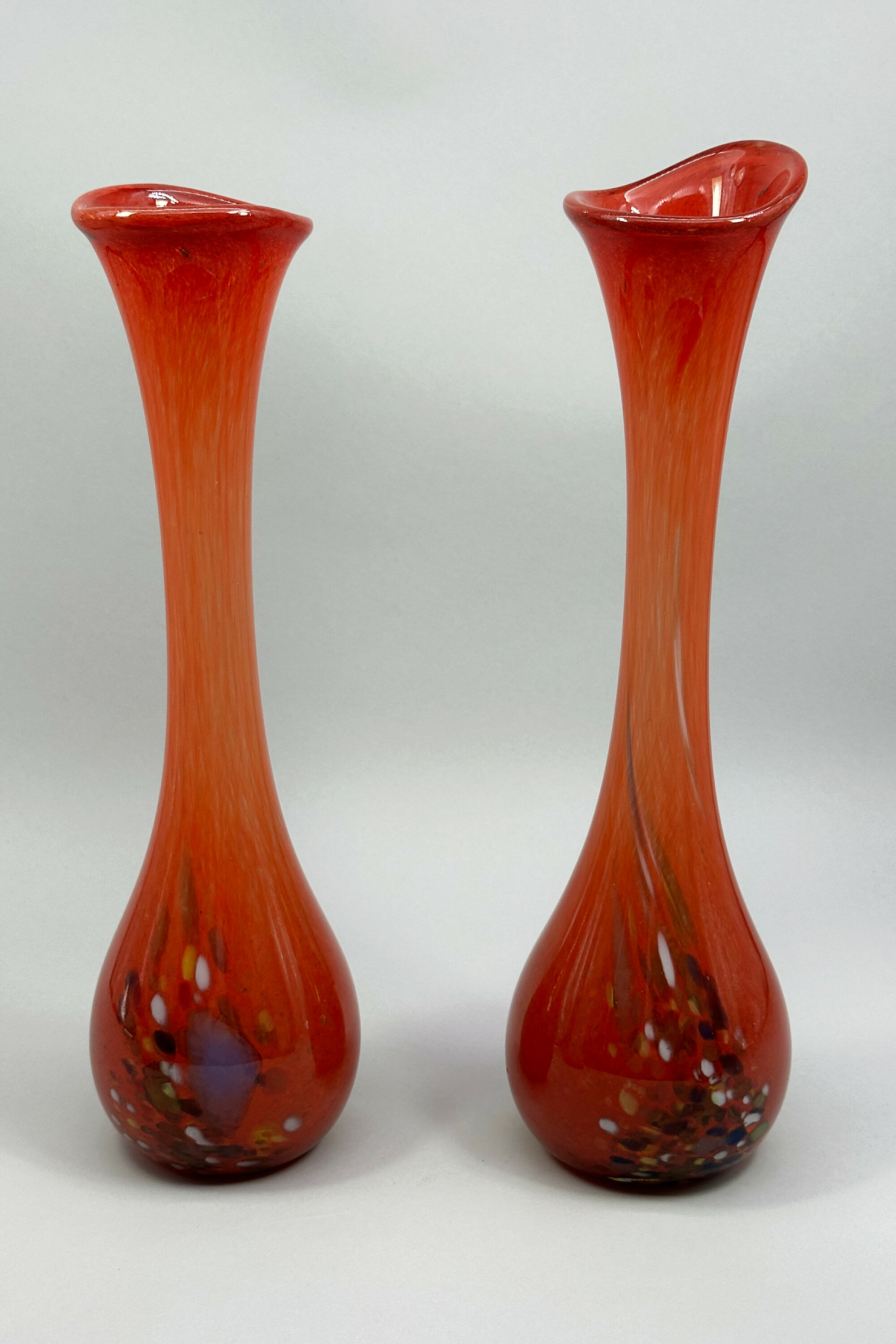
Pair of slender red glass bottle Vases, probably Joska Kristall, Germany, late C20th
Price: £85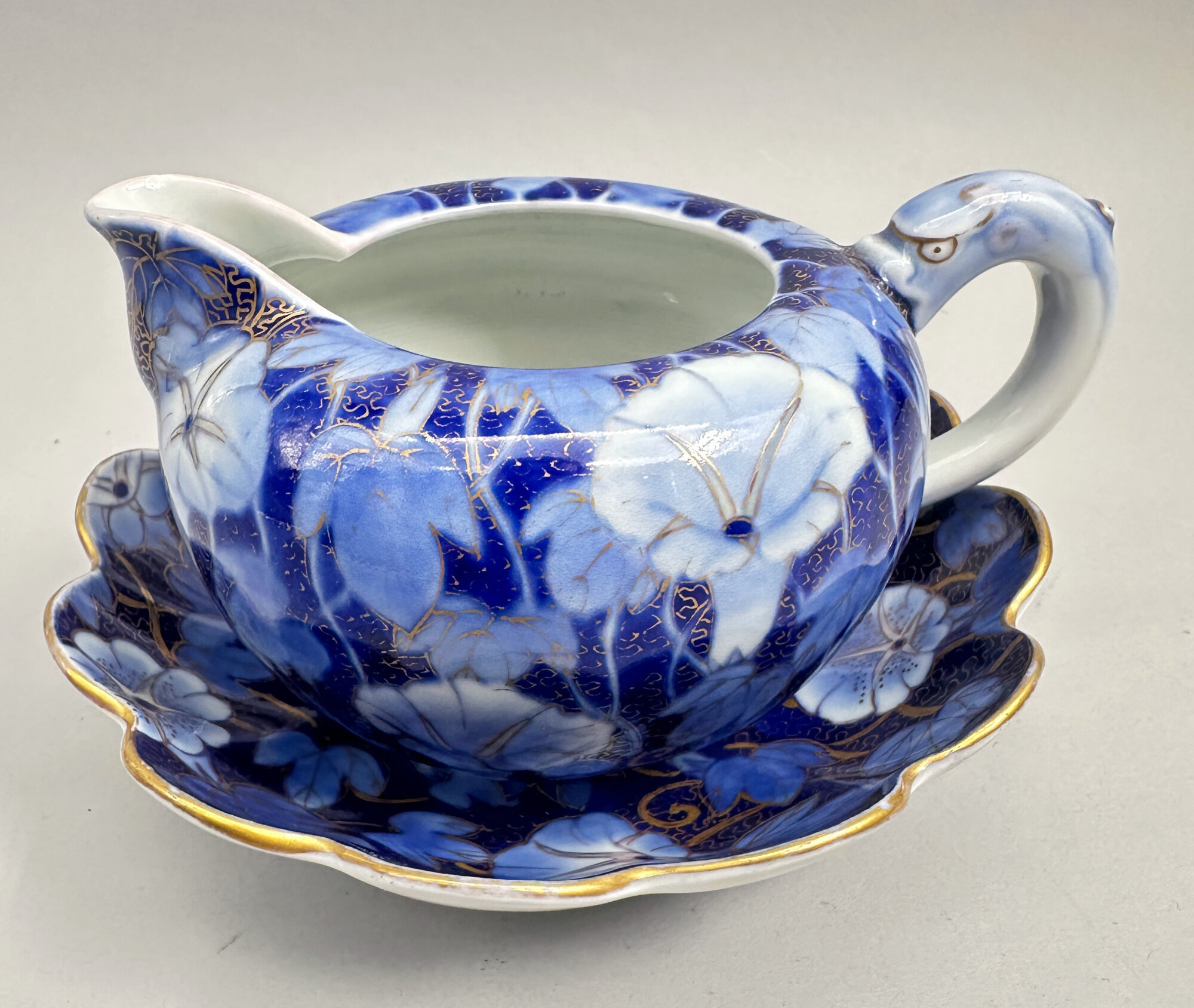
Japanese Fukagawa Jug and Stand decorated lotus, signed, circa 1900
Price: £45The Fukagawa kilns produced the best quality Imari items made in Japan in the late nineteenth century for export to the West. Their history starts with Ezaiemon Fukagawa who in 1856 became head of his family's porcelain business and in 1875 founded Koransha (The Company of the Scented Orchid) in Arita, Japan, to produce tableware for export. In 1894 the modern Fukagawa company was founded by Chuji Fukagawa, with the Fukagawa trade mark of Mount Fuji and a stream, as its trade mark. Dating of these pieces is therefore towards the end of the Meiji period (1868 - 1912) probably around 1900. While the decoration is similar to that found on other Fukagawa pieces there are few, if any parallels, and tea ware pieces by the firm are not very often seen.
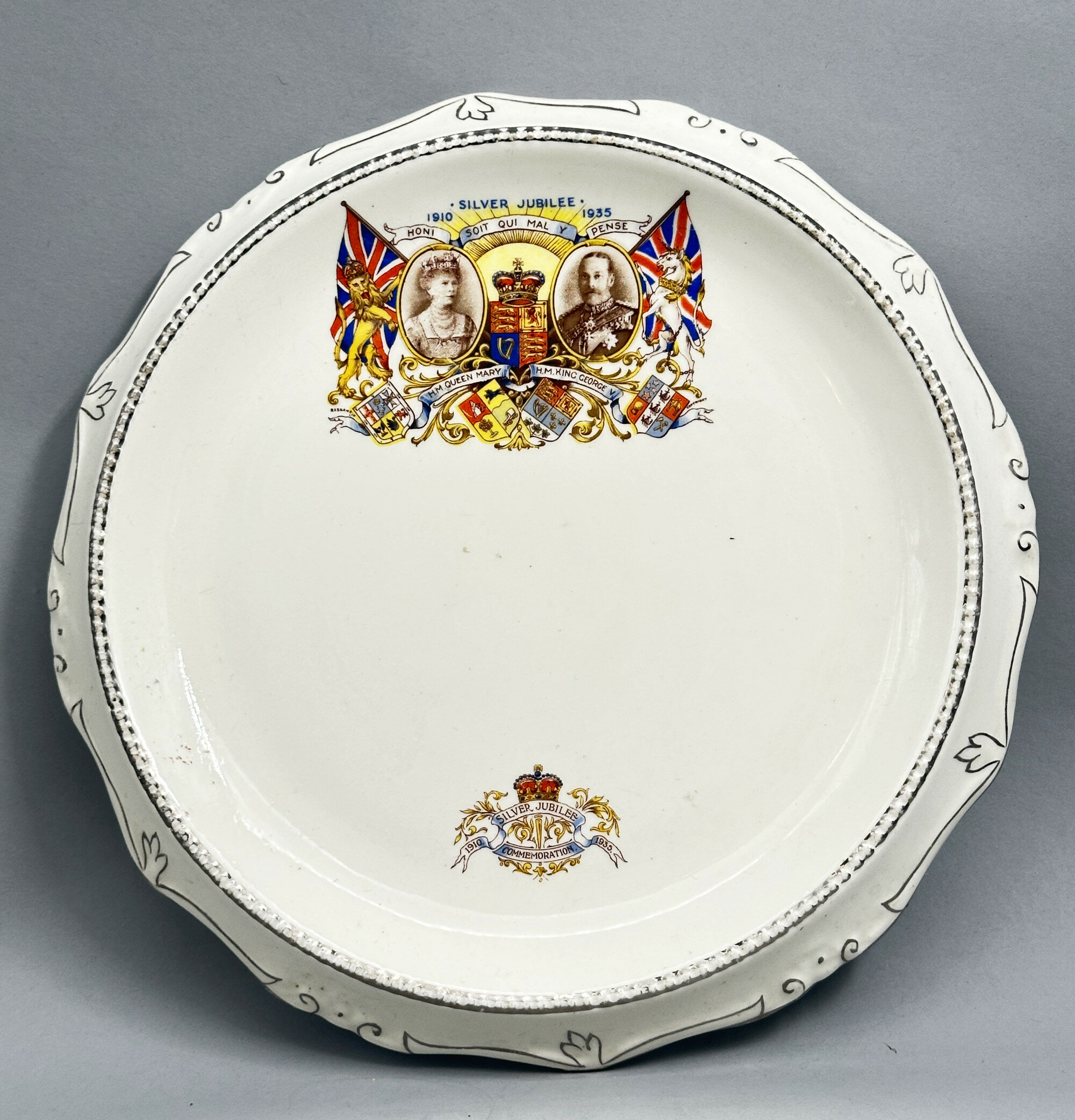
Commemorative Ware Silver Jubilee Plate, James Kent Ltd, England, 1935
Price: £35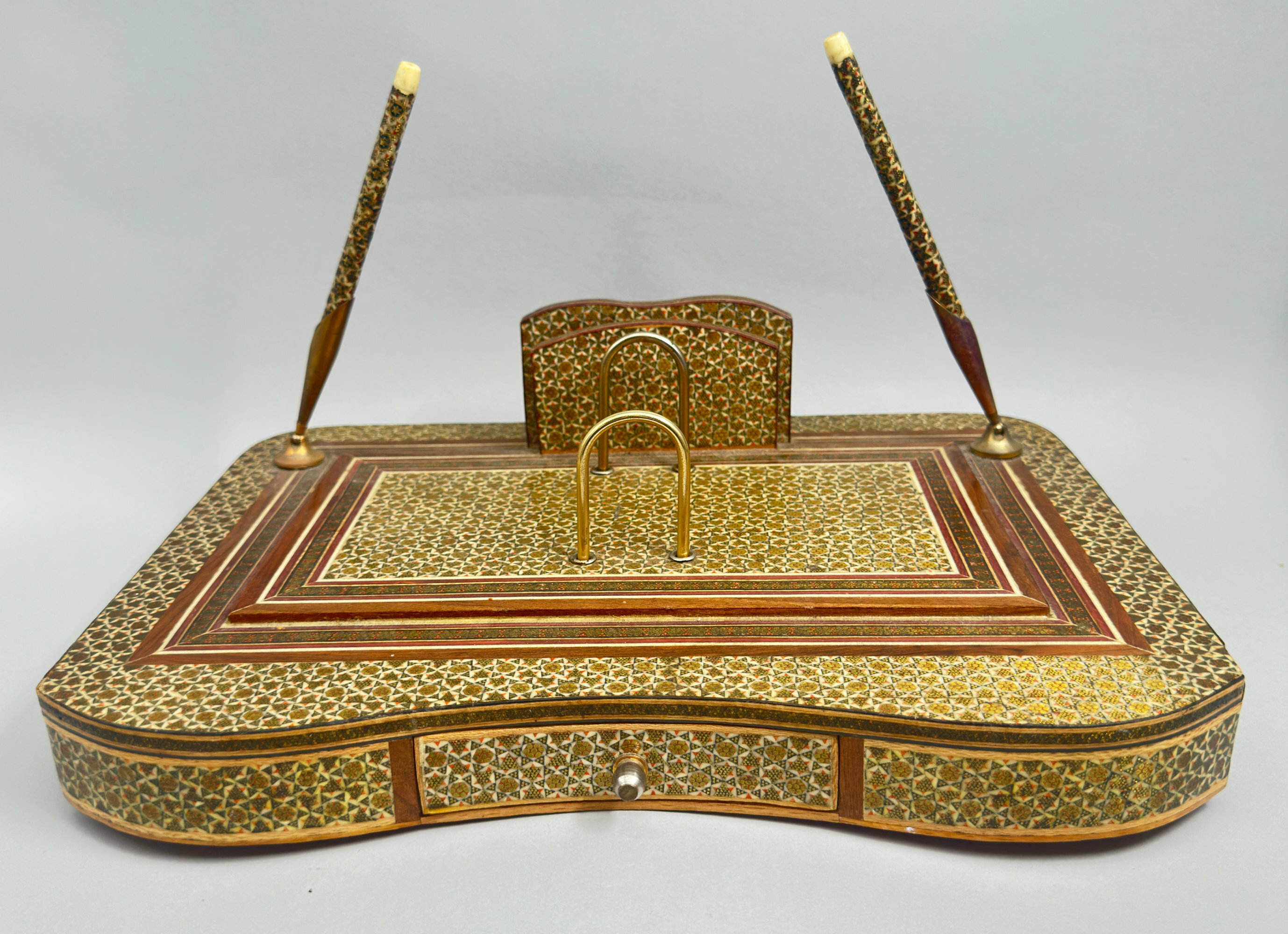
Persian Marquetry Khatam Kari Desk Set, second half C20th
Price: £55The intricate marquetry decoration used here, with its repeating star form pattern, is called ‘Khatam’ work. Khatam is the capital of Khatam County in Iran and is the centre for craftsmen working in this technique. Khatam is a Persian version of marquetry in which the surface of wooden articles is decorated with small pieces of wood, bone and metal formed into precisely-cut geometric shapes. The process is time consuming involving the cutting of the shapes and gluing them in place, followed by smoothing, oiling and polishing. In Persian, the work is known as ‘Khatam kari’, ‘the art of crafting Khatam ware’.
These desk sets occur in a wide variety of forms. The drawer is less commonly found and decorated pen holders are, as said above, most unusual. These sets seem to have been made from the 1950s onwards. The use of a ‘biro’ pen indicates a dating from the 1960s onwards and perhaps this example is a bit later than that, but the workmanship speaks for itself and the piece has survived in excellent condition with minimal damage, providing a truly elegant ‘desk tidy’ for the contemporary study!
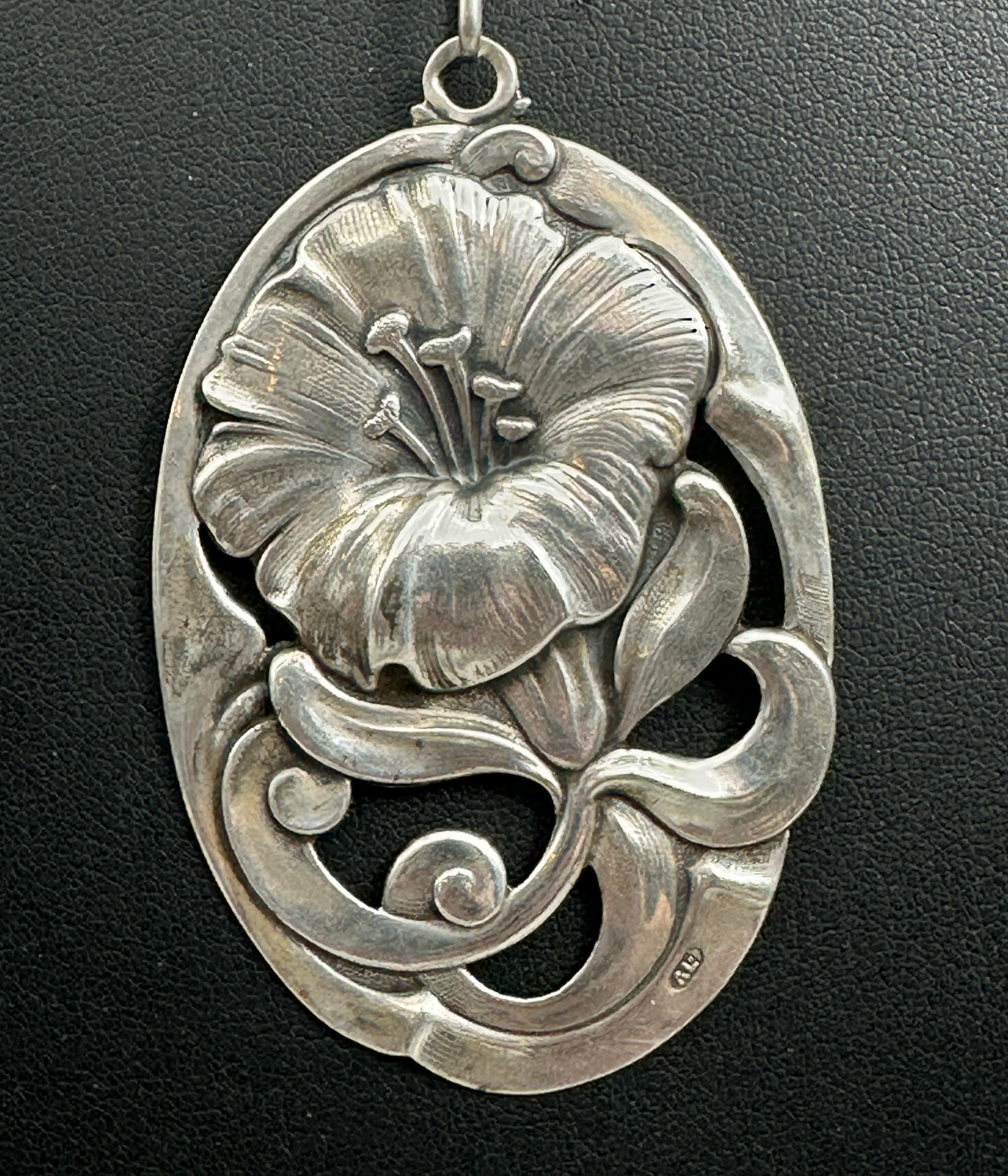
Art Nouveau repousse Pendant on later chain, c1910
Price: £95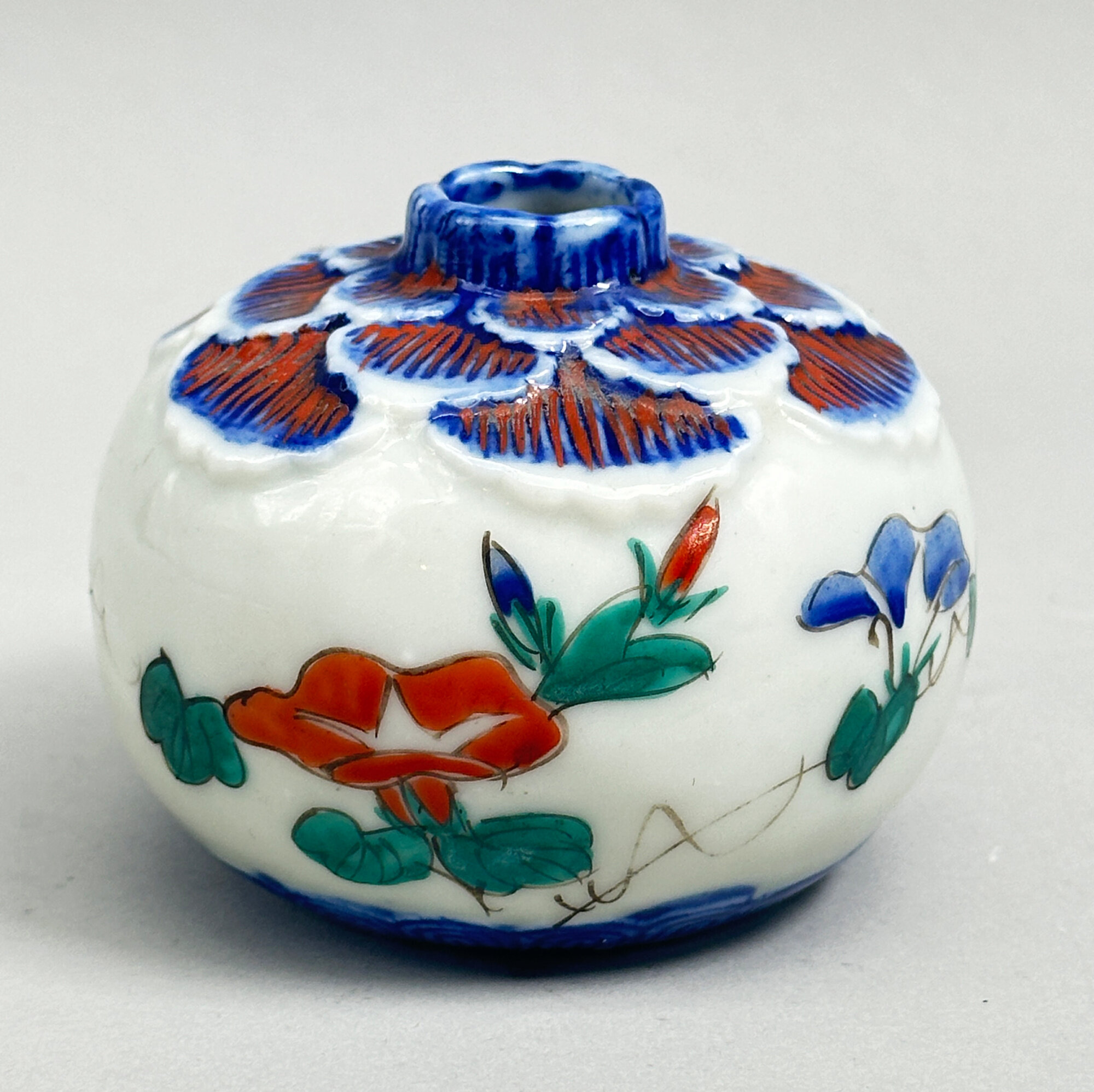
Chinese lotus form Water dropper, C20th
Price: £25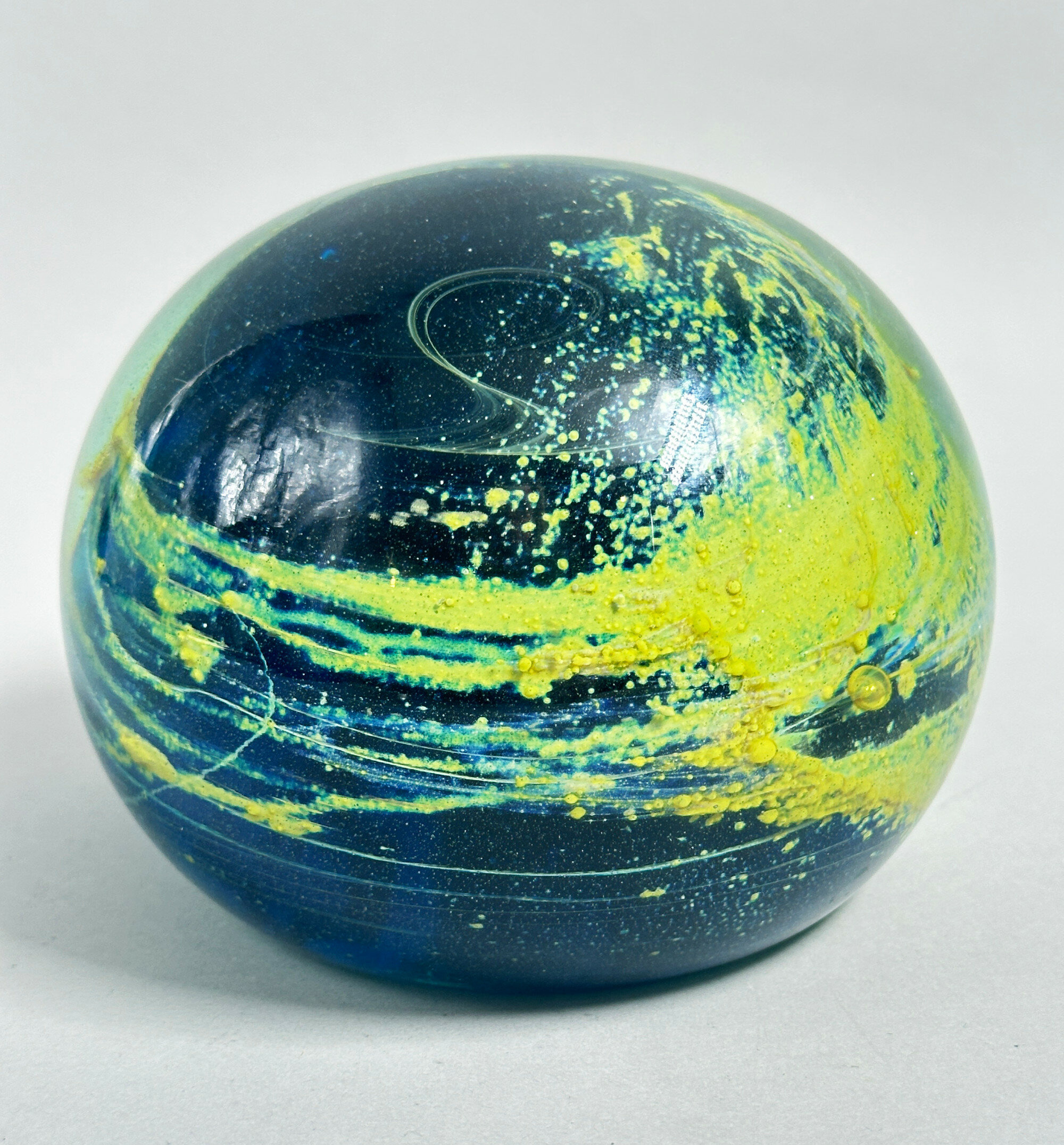
Large Mdina Glass Paperweight/Doorstop, late C 20th
Price: £55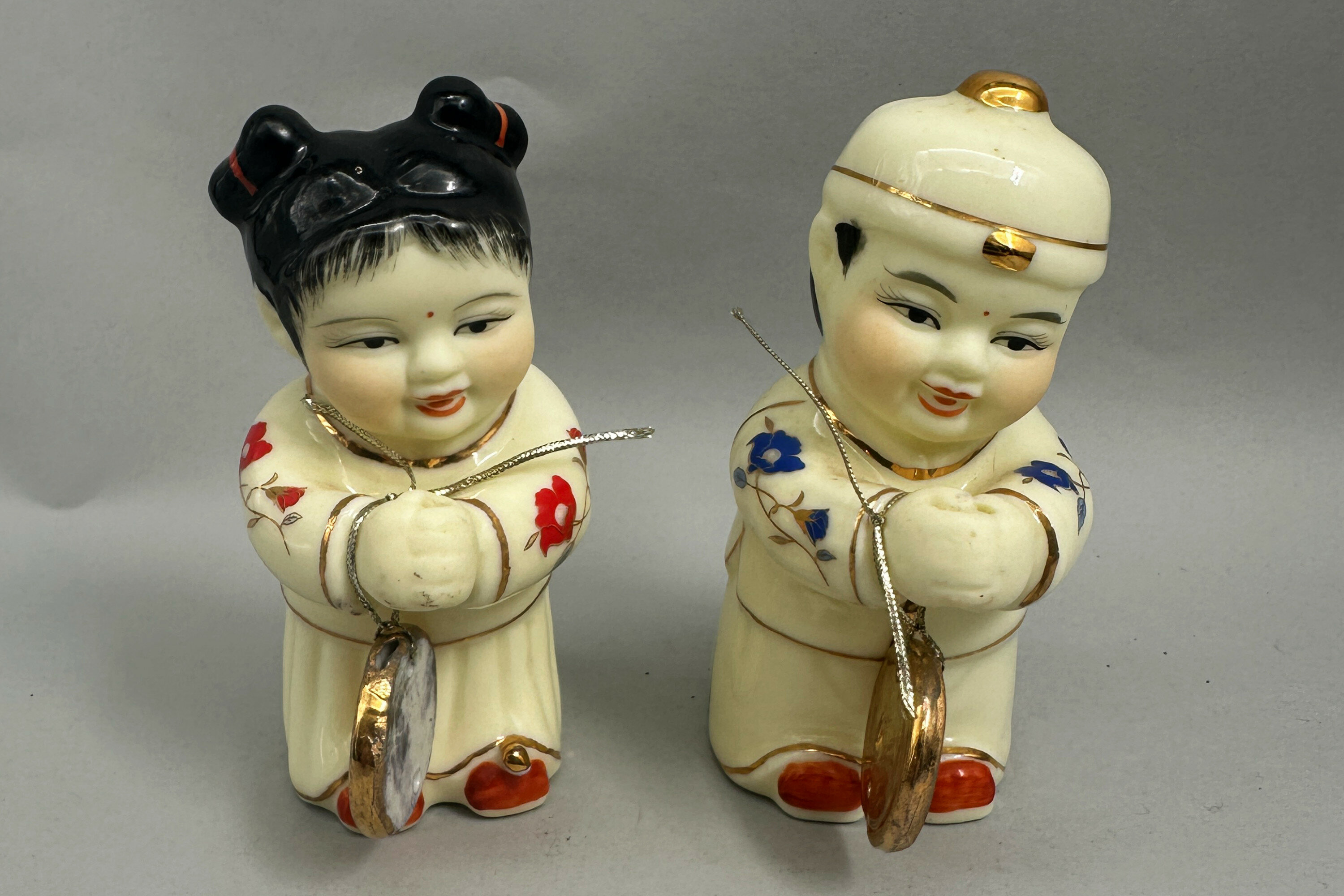
Decorative pair of Chinese ceramic figures of children, Yunu and Jintong , late C20th
Price: £45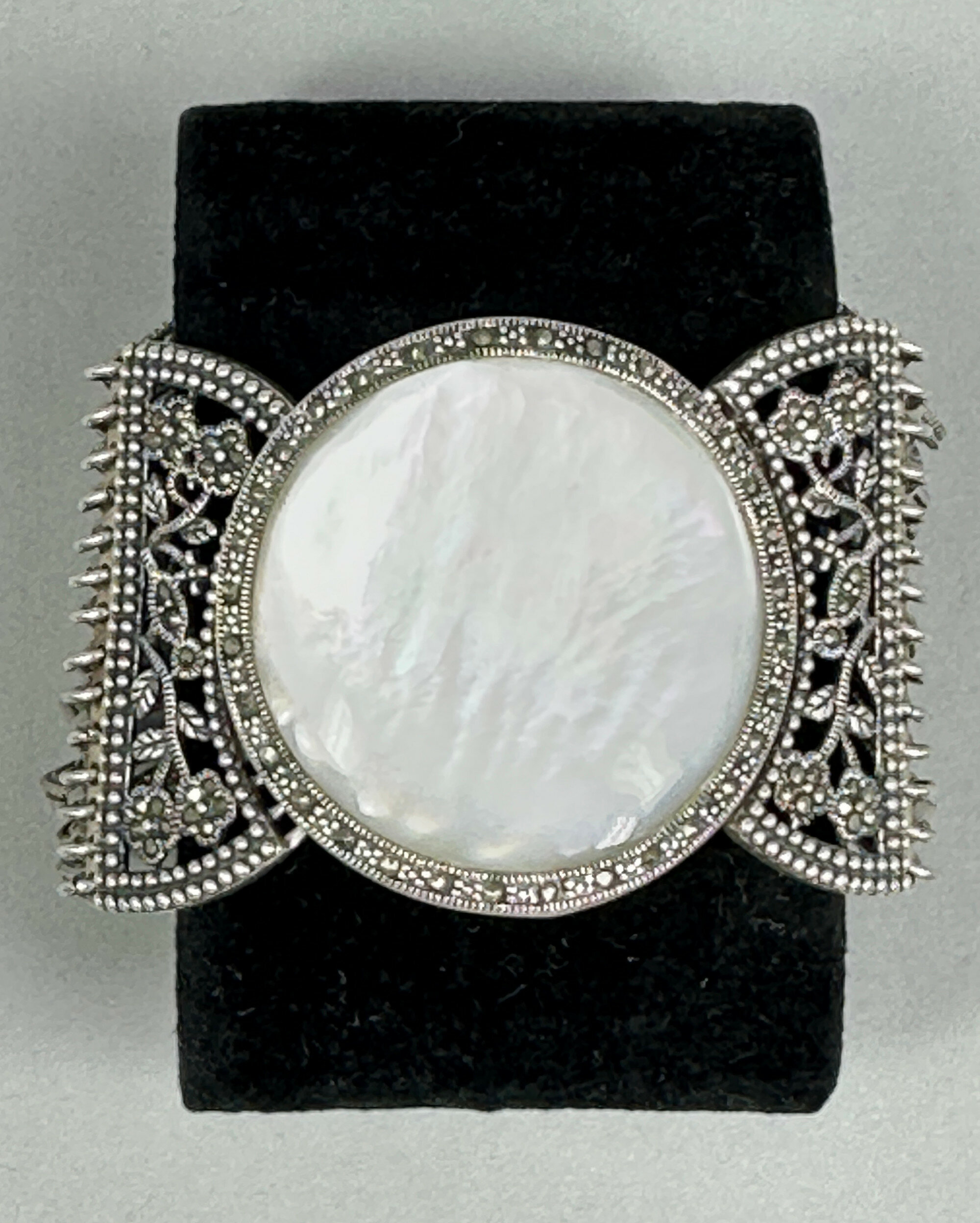
Victorian style Bracelet in Mother of Pearl and Silver, modern
Price: £95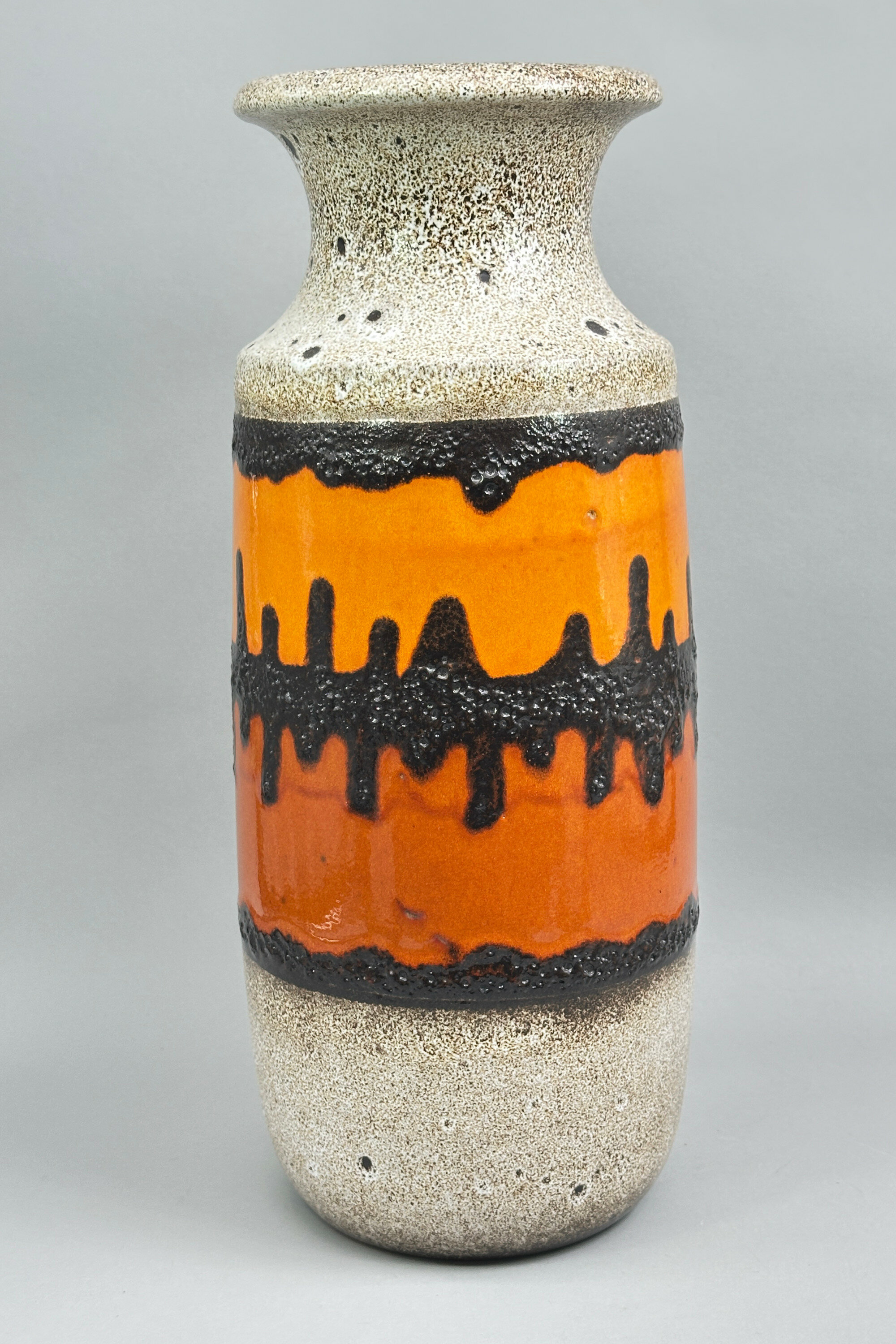
West German Studio Pottery Vase, Scheurich 259-41, 1970s
Price: £150……………………………………………………………………………………….....................................................................................… .
It took time for Germany to rebuild after the Second World War and it was not until 1949 that the country regained its national identity. The production of ceramics slowly revived and began to gain momentum in the 1950s eventually reaching a total of over one hundred companies and studio potteries. Some of the concerns produced a substantial output including Carstens, Bay, ES, and Dümler & Breiden but the most prolific of all was Scheurich. In 1927 Alois Scheurich established with a partner a company named ‘Scheurich and Greulich’ (S&G) which focused on producing low cost ceramic and glass items (see image 7). The success of this business provided the springboard for the creation of ‘Scheurich KG Keramikfabrik’ in 1954. While it commenced production rather later than some of its competitors it soon grew to overtake them and the glaze colourings for which it became best known were produced in the 1970s. Eventually the firm changed direction yet again and is now known for producing ceramic garden ornaments which have an international appeal.
Most of the Scheurich pieces are marked, nearly always with two sets of numbers ‘XXX-XX’ and the wording ‘W.GERMANY’, although there are variants. The firm’s name can appear in addition, as here, where we see as well ‘SCHEURICH KERAMIK’, and it is thought that this indicates a later dating to the 1970s/1980s. The first three numbers are the model number and the last two the height in centimetres, here ‘259-41’. ‘259’, as with nearly all the model numbers, was made with a wide variety of glaze colourings and effects. Equally, similar colours and patterns were used on different models. The shape is one of the firm’s most successful. The cylindrical body narrows gently towards the base and has a well defined shoulder with a concave neck and an inturning rim. The bright orange at the centre is bordered with and divided by irregular black ‘crusty effect’ bands. These are an excellent example of the apocryphally named ‘lava’ glaze for which Scheurich was so well known. Either side of this are two sections of grey speckle glaze which complete the whole. The vase is glazed brown inside and at the base which has the factory markings in raised lettering. Similar glaze combinations can be found on other pieces but the result is rarely as successful as here and the colour scheme used enhances the classic simplicity of the shape, loosely derived from a Chinese original.
This is a vase to appeal to decorators and collectors alike and is very much a ‘one off’ example of these popular wares standing rather apart from its many companions.
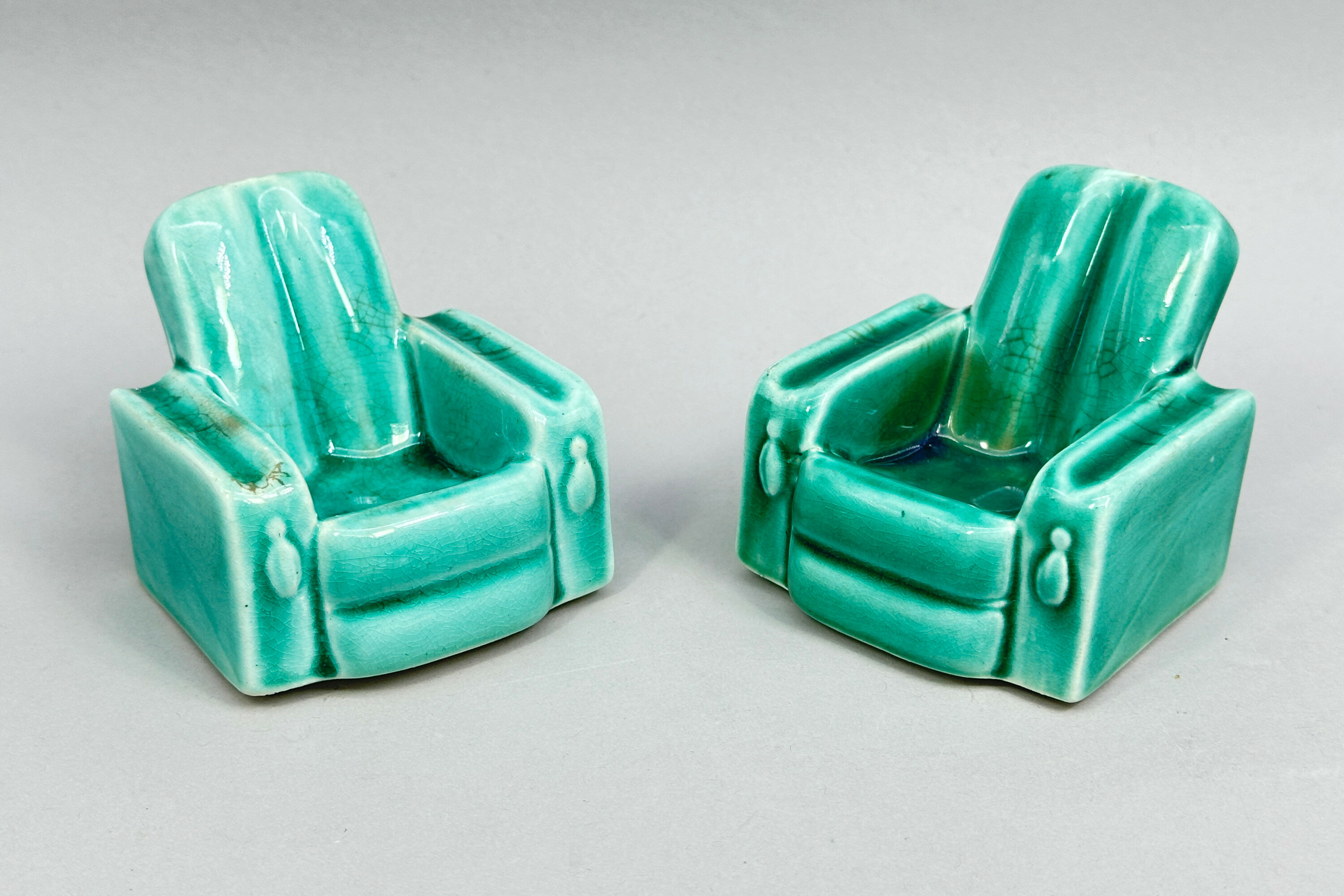
Pair of Vintage Art Deco style armchair Pipe Rests, English c1930
Price: £55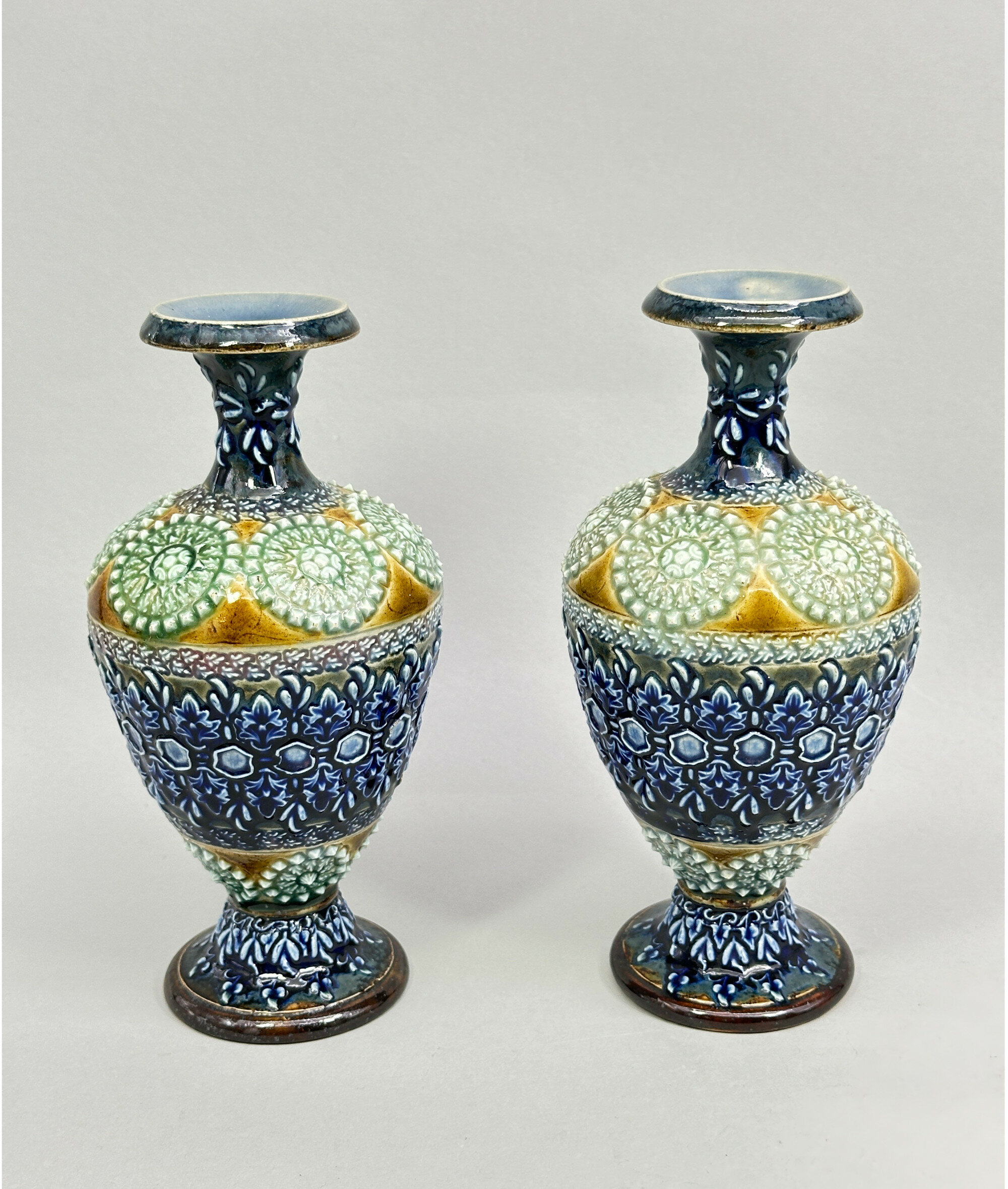
Pair of Doulton Lambeth Vases, signed and dated 1882
Price: £150The Doulton factory began production in 1815, first at Vauxhall and later moving to Lambeth. In 1882 it opened an additional factory at Burslem, Stoke on Trent in the centre of the English pottery. Known at first mainly for utilitarian works it began to develop decorative wares more extensively in the 1860s and soon gained a reputation for its distinctive designs. As the factory mark indicates, these pieces were made at the Lambeth factory and the absence of ‘England’ below it indicates that it dates to before 1891. The Lambeth ware pieces were often marked with the date of manufacture, here 1882 which is fully consistent with a design inspired by Eastern influence. The artist’s mark, ‘B’ with a tail, which appears on both pieces, is for Alice L Burlton, whose signature can be seen on other pieces of a similar date with similar raised decoration. The other three markings ‘B’ and ‘OO’ presumably indicate the pattern number.
In general, Doulton designs were often both striking an experimental and this pair of vases is an example of their work at its best, a striking form combined with skilful decoration making them true collector’s items.
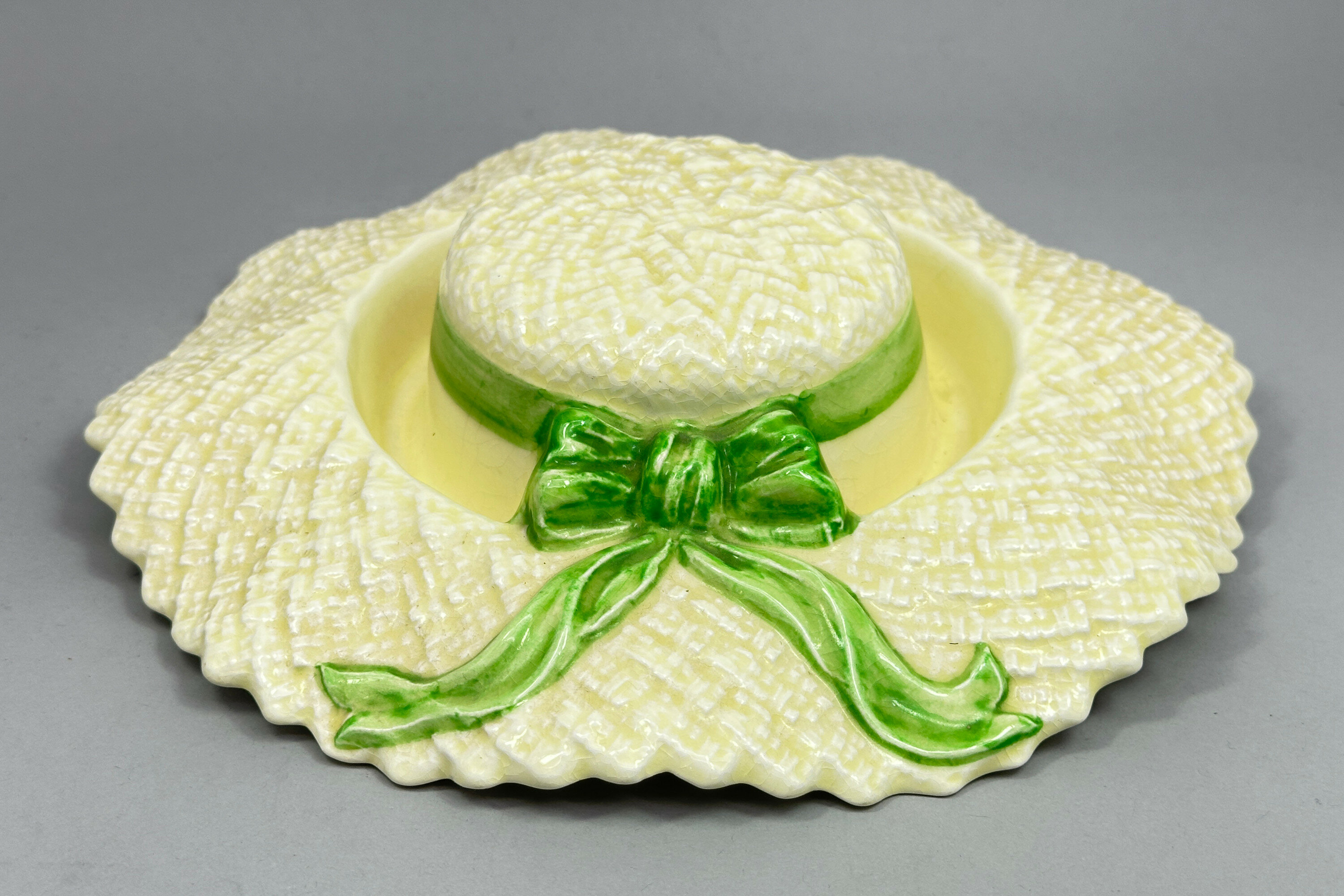
Novelty Bonnet Posy Vase, 1940s/1950s
Price: £25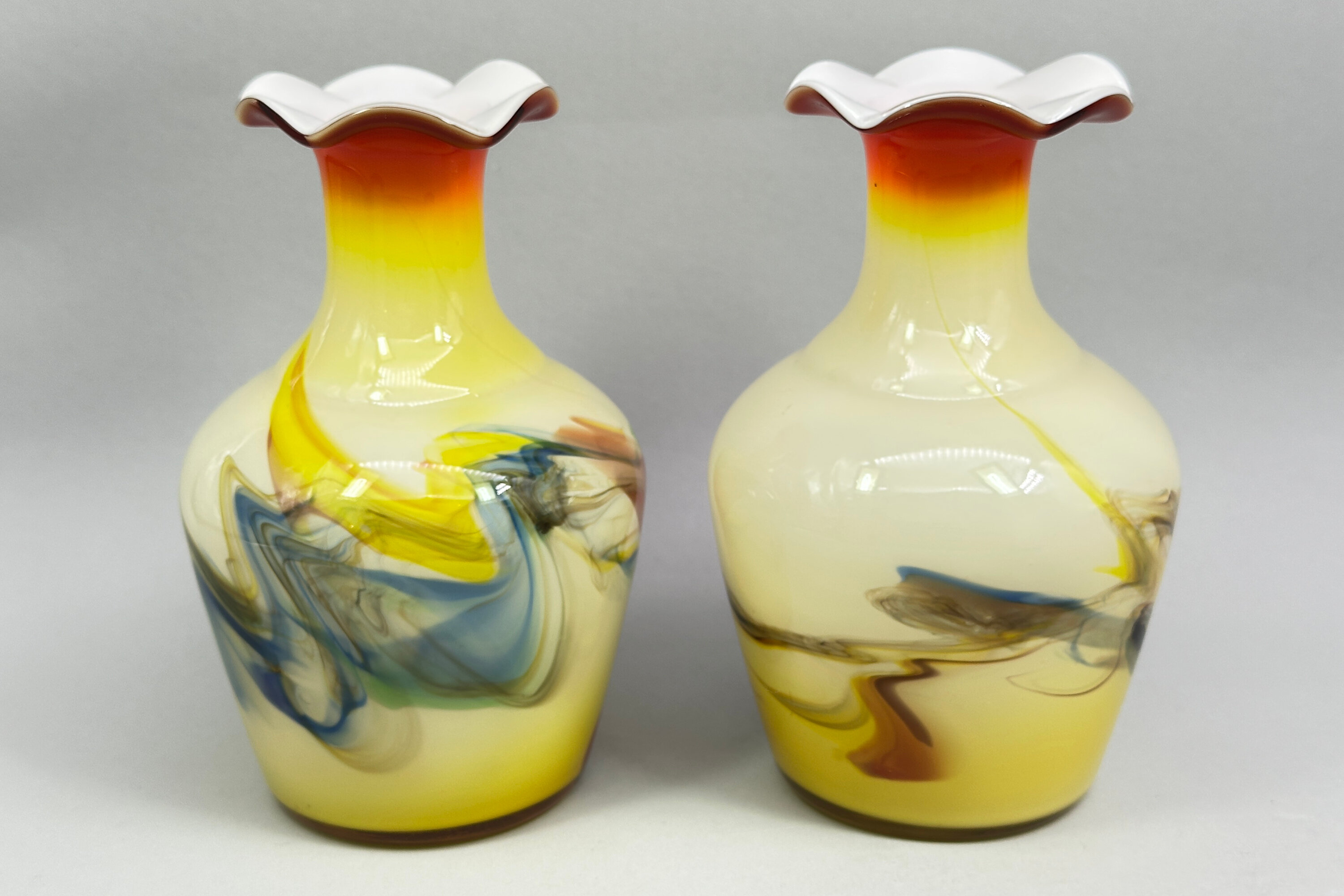
Pair of Chinese Dalian Glass Co. Ltd Vases, second half C20th
Price: £45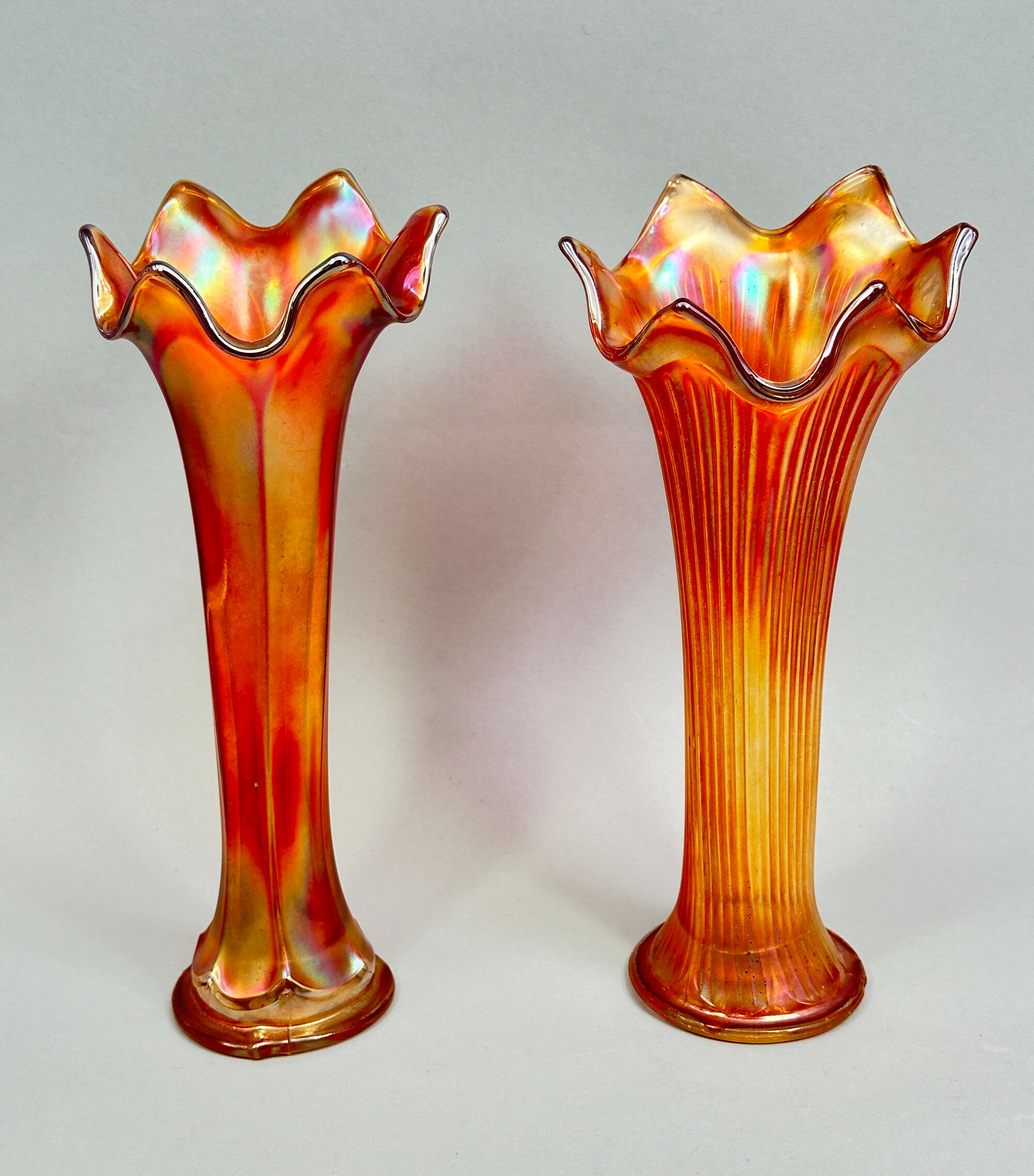
Two Carnival Glass Vases, Marigold, probably Fenton USA, early C20th
Price: £55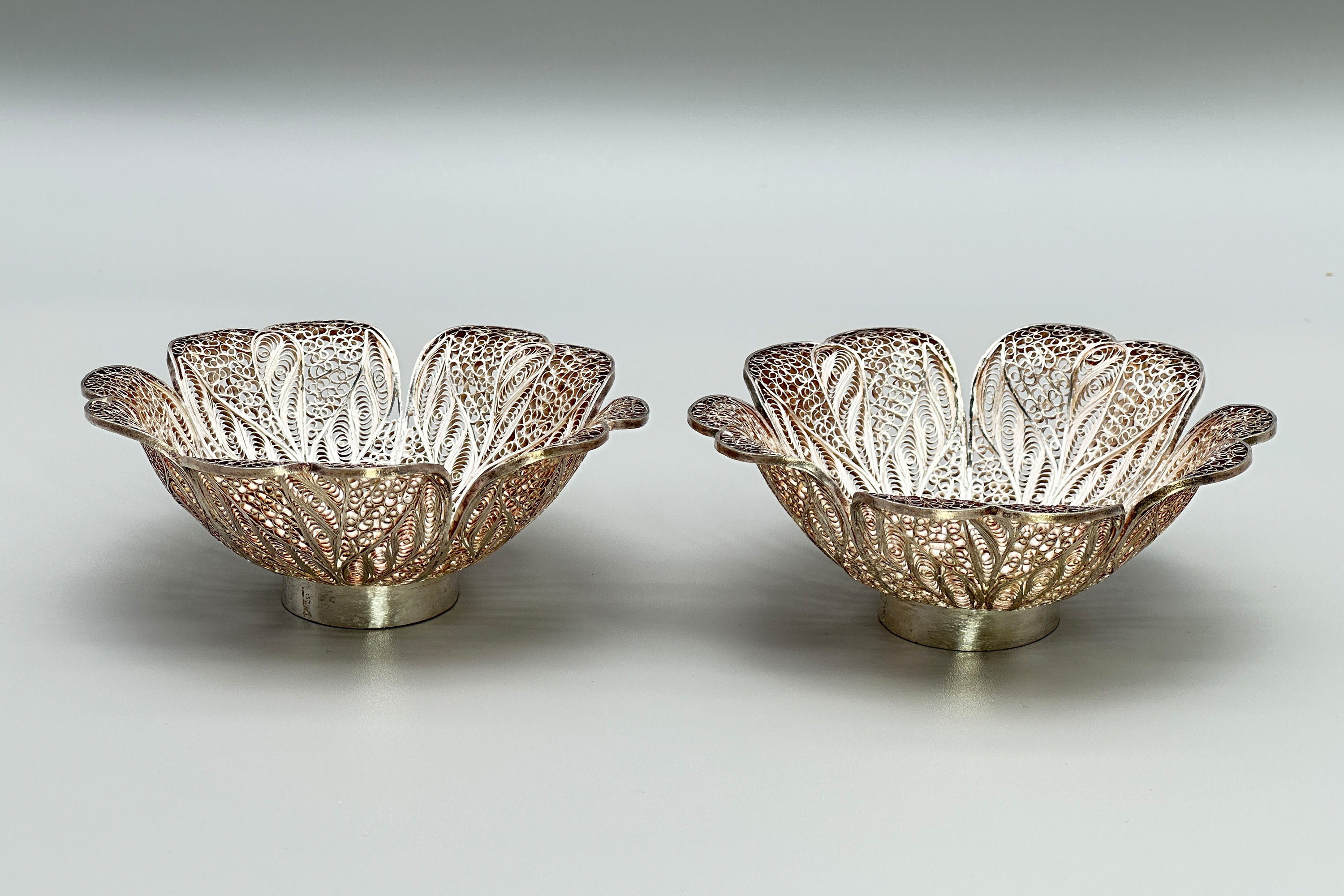
Pair of Silver Filigree Bonbonnieres, probably continental circa 1900
Price: £110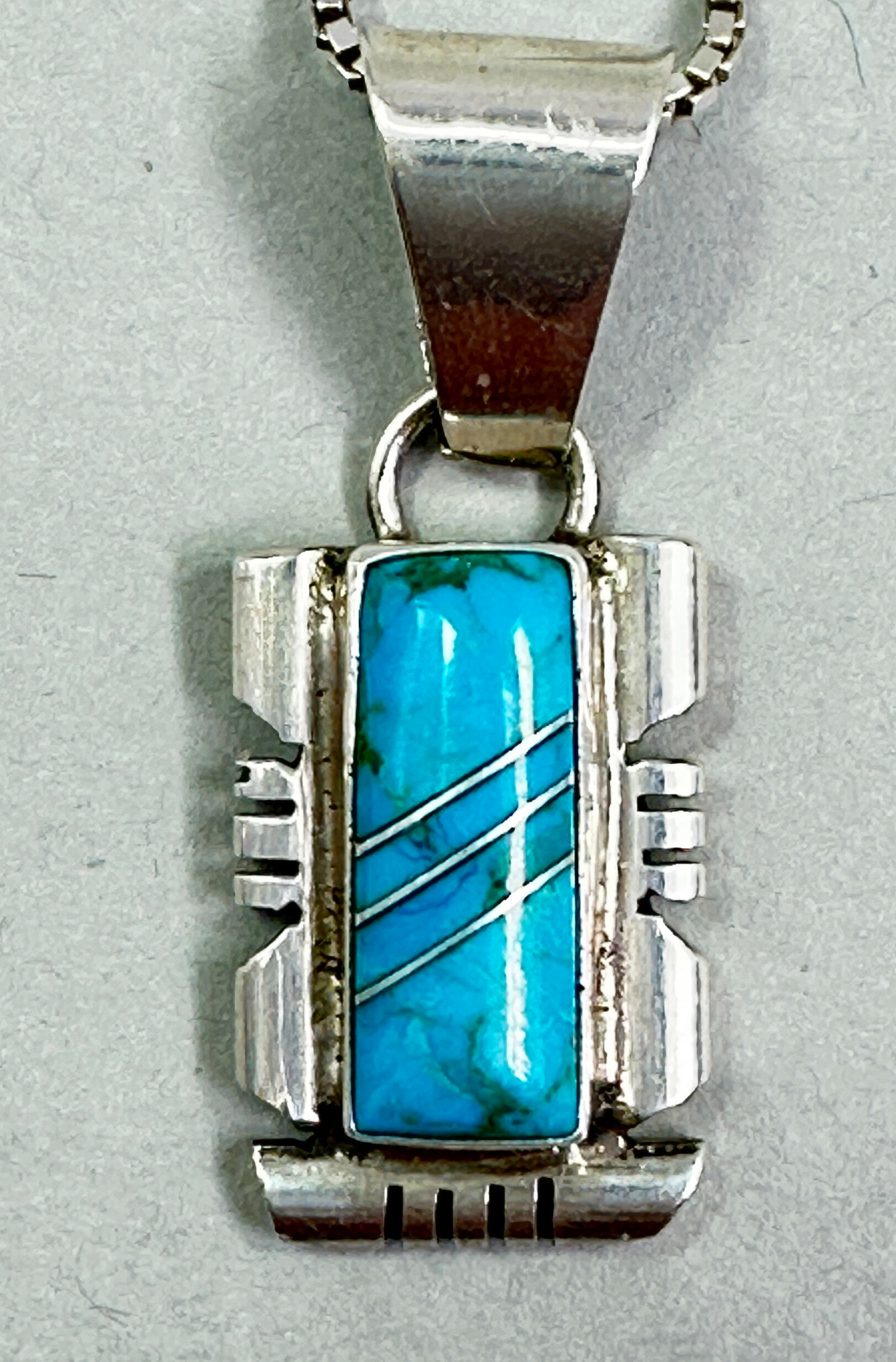
Zuni turquoise silver pendant Necklace, modern
Price: £35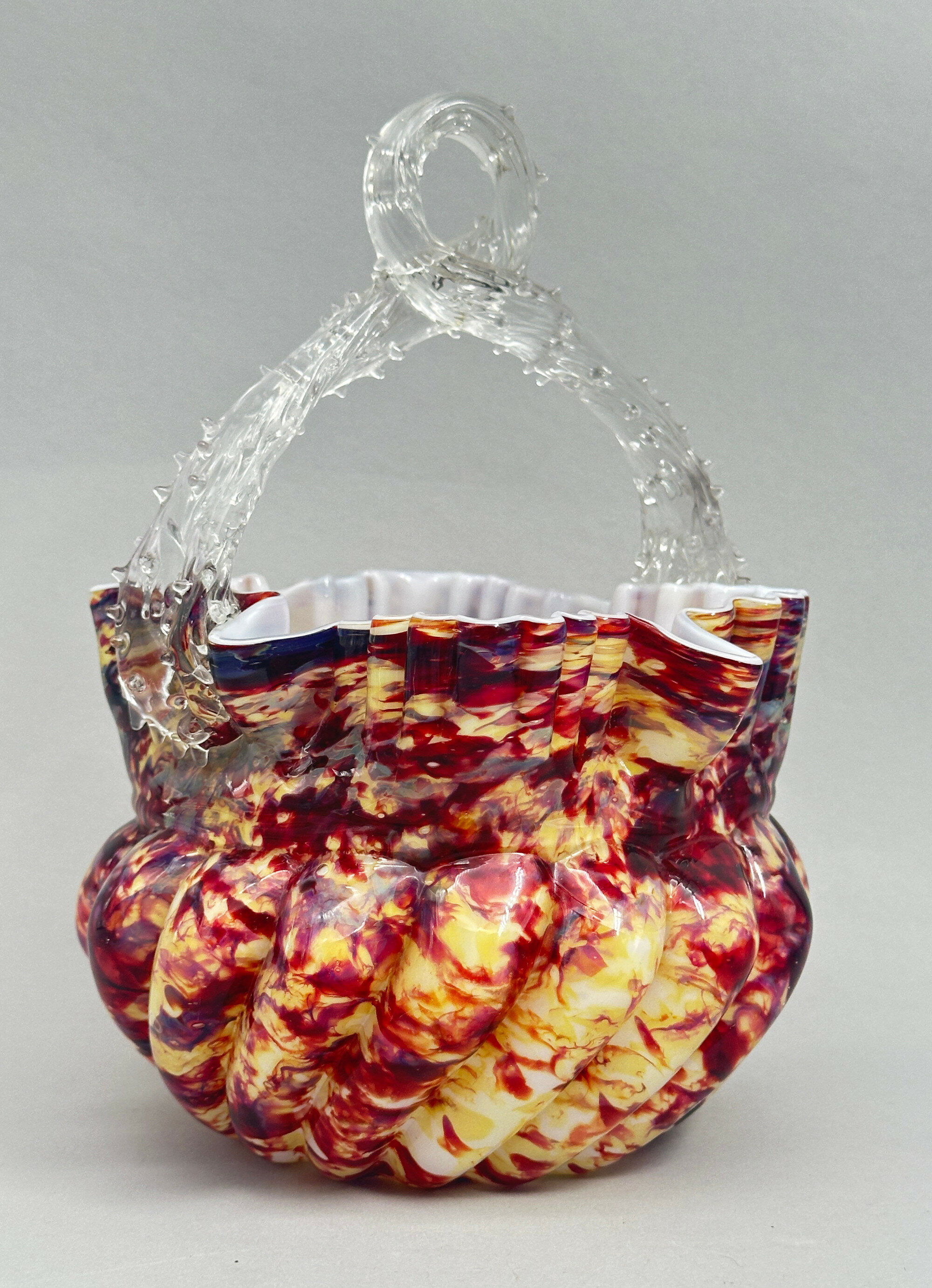
Spatter Glass Basket with thorn rope twist handle, probably Stourbridge, late C19th
Price: £75The 'spatter’ technique was known from Roman times but enjoyed something of a renaissance in the Victorian era when there was a general revived interest in the glass making techniques of the ancient world. Similar baskets are normally associated with the glassmakers at Stourbridge, Worcestershire, a centre of glass production since the 1600s, and this seems the most likely source of this piece, with a dating to the late nineteenth century. It is an excellent example of the type and remains in fine condition.
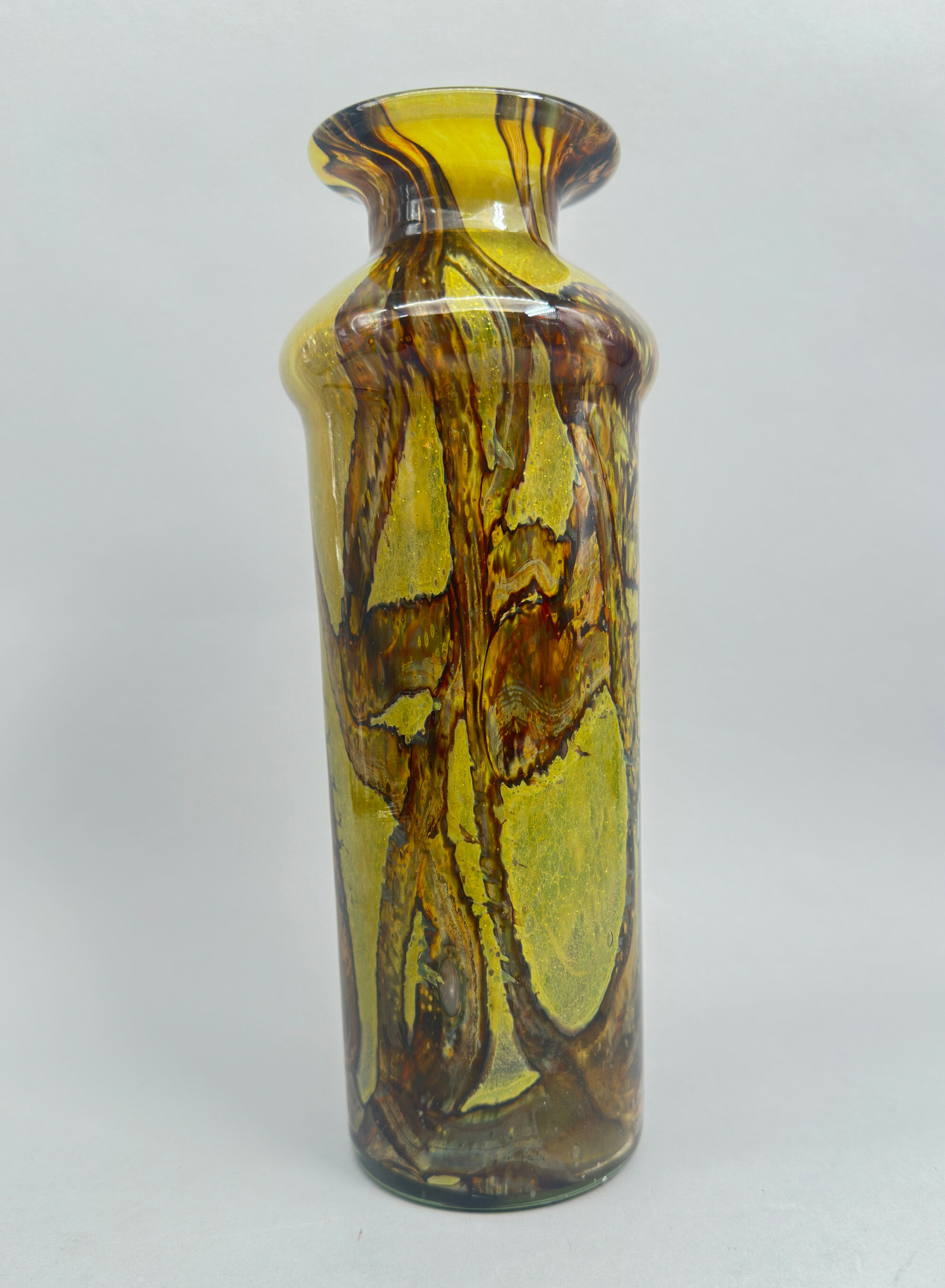
Mdina Earthtones Pattern Vase, late C20th
Price: £85Mdina Glass was founded in the Maltese town of Mdina in 1968 by Michael Harris and Eric Dobson. The town had no history of glass making but the venture proved to be a success. Its wares, free formed organic glassware, often in colours inspired from the sea, sand, earth and sky, proved very popular with tourists visiting Malta. Michael Harris left Mdina in 1972 and formed a new company, Isle of Wight Studio Glass, on the Isle of Wight, UK, leaving Eric Dobson in charge, but many of the designs he created continued to be made at Mdina Glass after his departure although new designs and patterns were added as well of which this vase is an example. Ownership of the company later changed but it is still producing a popular range of glasswares today.
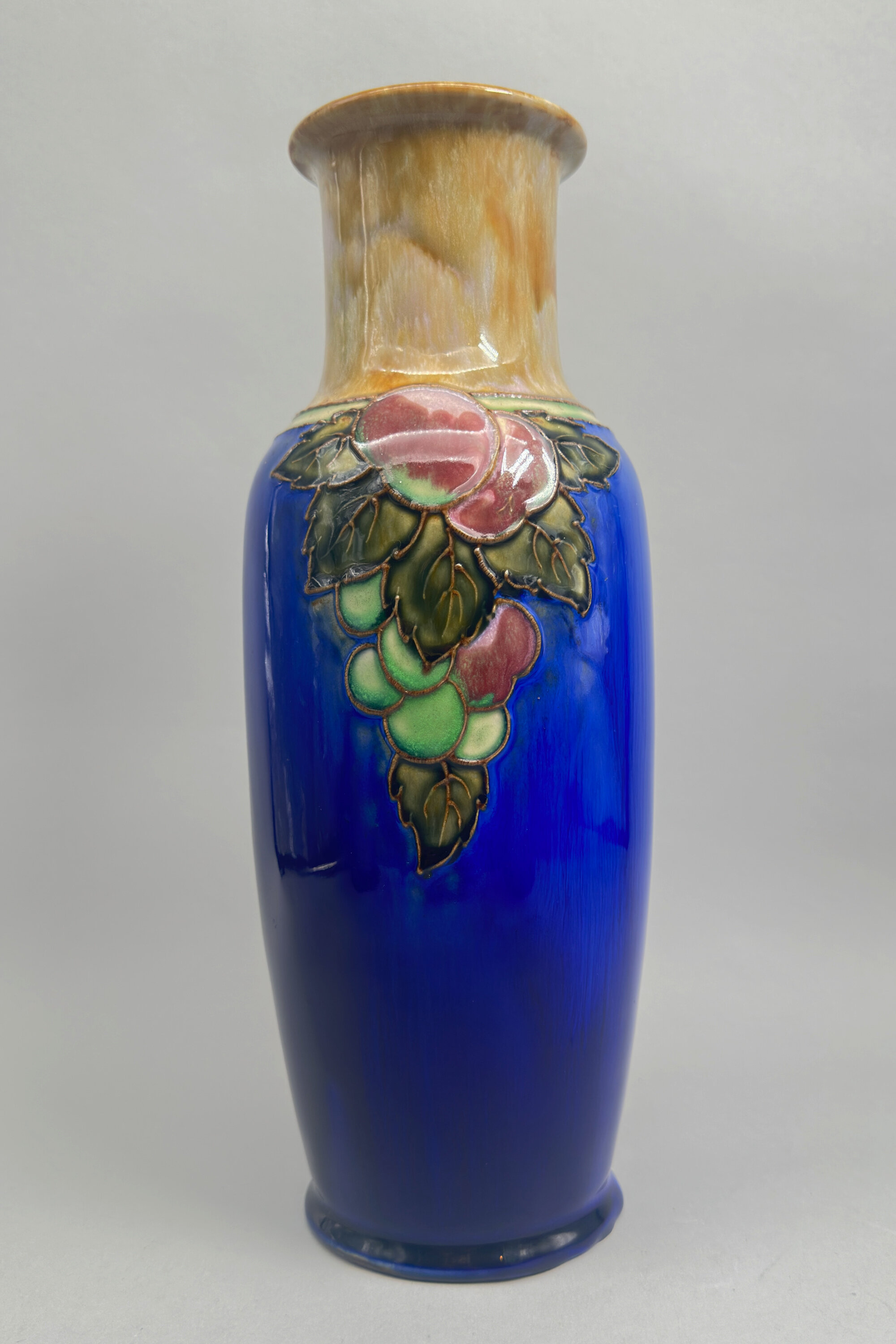
Doulton Vase with raised grape and peach decoration, 1920s
Price: £110The mark for Doulton is one of the standard impressed 'Royal Doulton England' marks where the lettering forms part of a circle combined with three thick lines and the centre is filled with four interlocking 'D's. The addition of a lion but not with the usual accompanying crown allows a fairly precise dating to between 1923 and 1927, although the pattern number beginning with ‘X’, which appears on other pieces with similar decoration but a different shape, is supposedly found on pieces made for couple of years thereafter. Either way, the mid to late 1920s dating fits with both the form and the decoration which have a distinctly Art Deco feel. The mark ‘P’ is for the decorator Lizzie Padbury but the scratched mark cannot be identified. Presumably the second set of numbers indicate the shape.
Royal Doulton produced many pieces reflecting the Art Deco style and other similar vases can be found on this site. They are an elegant reinterpretation producing pieces of great decorative appeal.
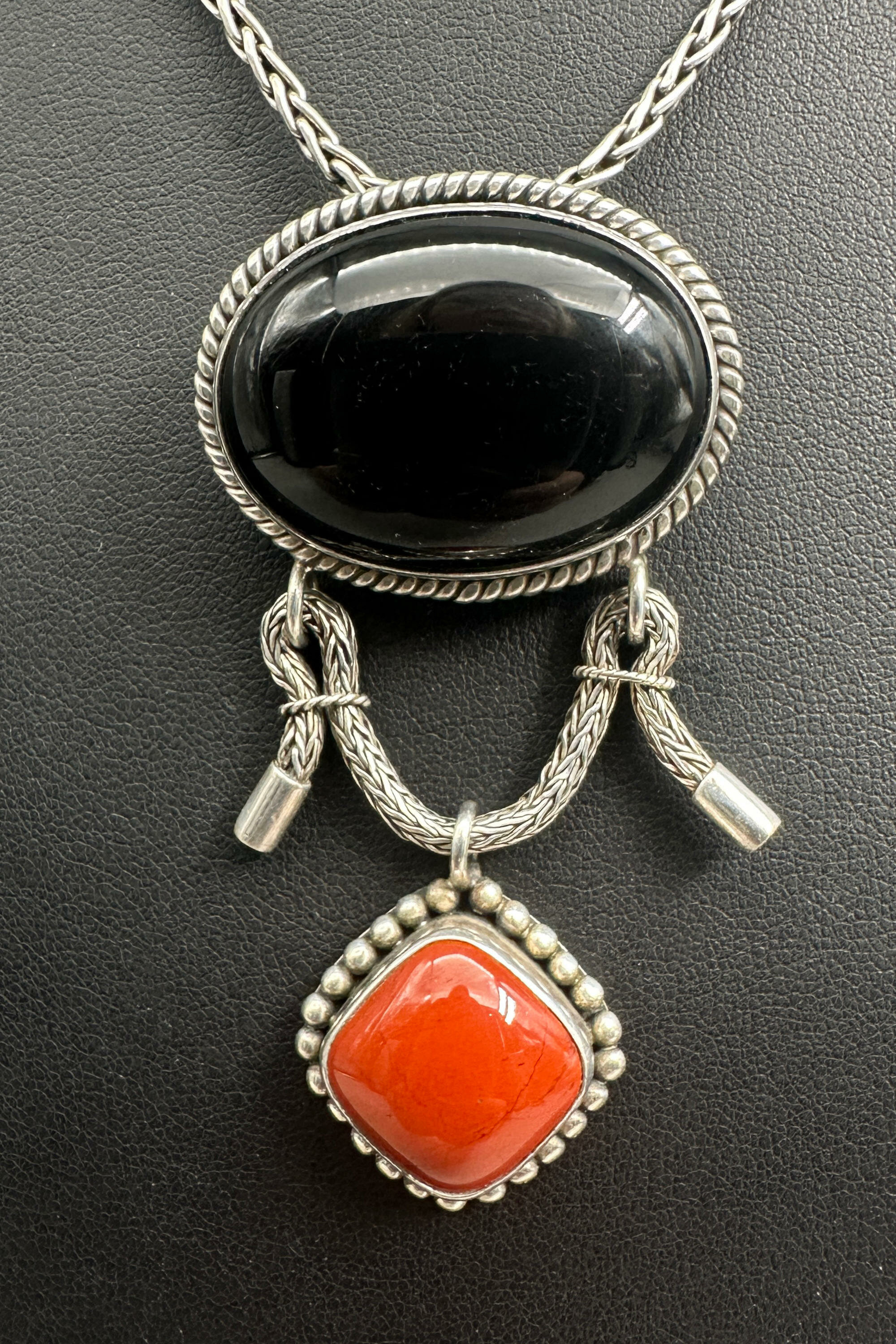
Indian silver onyx and carnelian pendant necklace/brooch, 2006
Price: £125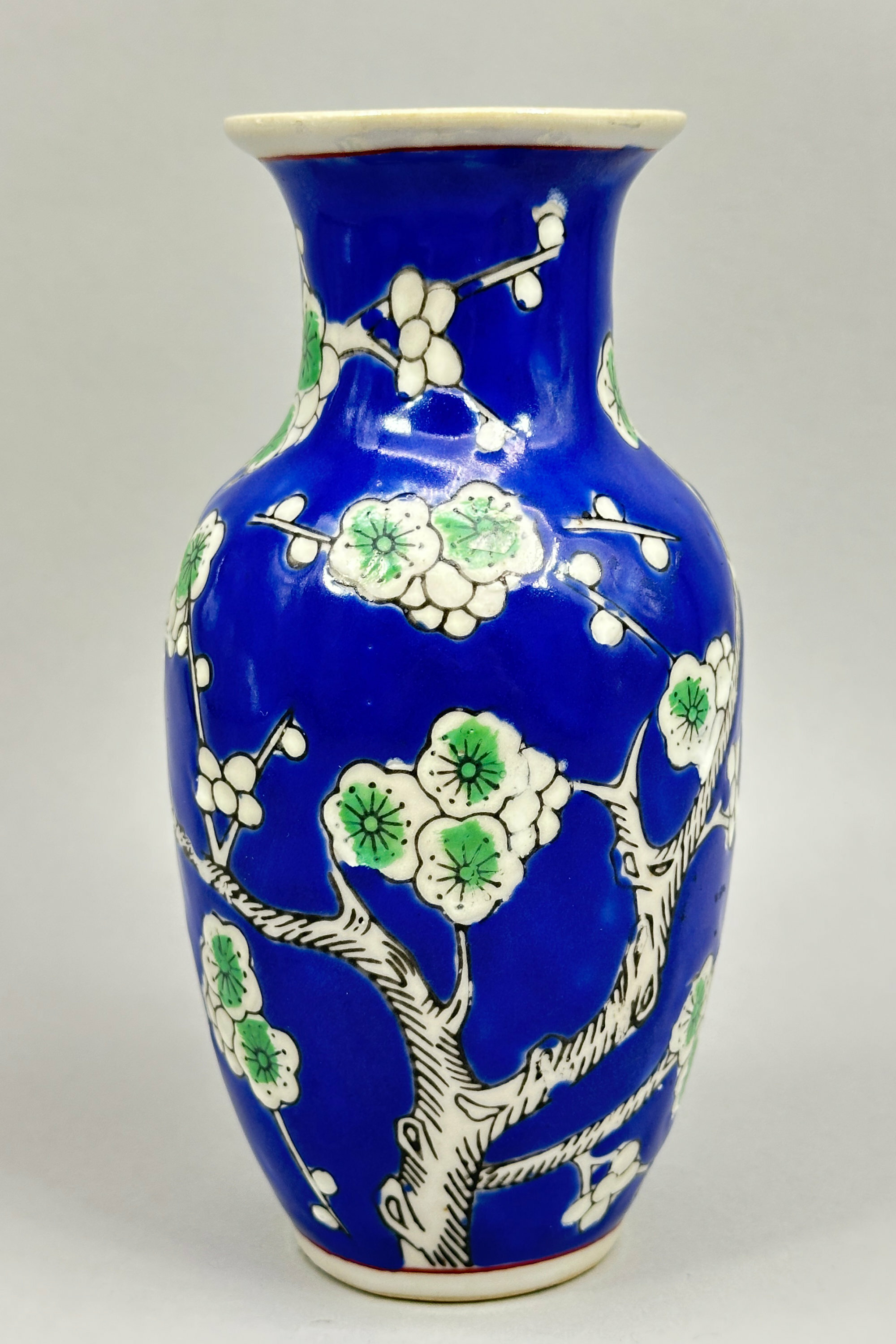
Chinese blue ground Vase decorated Prunus, late C20th
Price: £25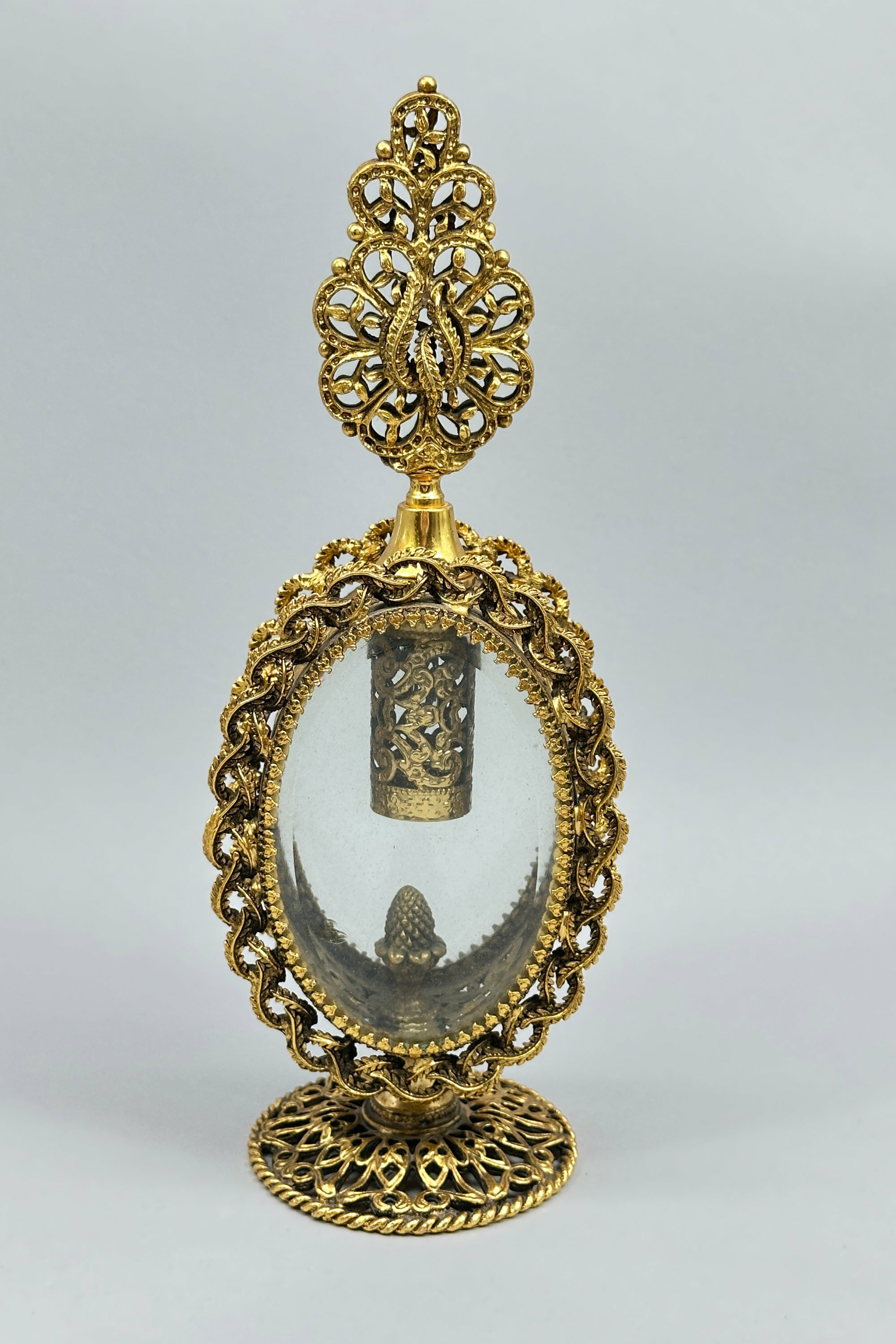
Hollywood Regency Ormolu and Glass Scent Bottle, second half C20th
Price: £95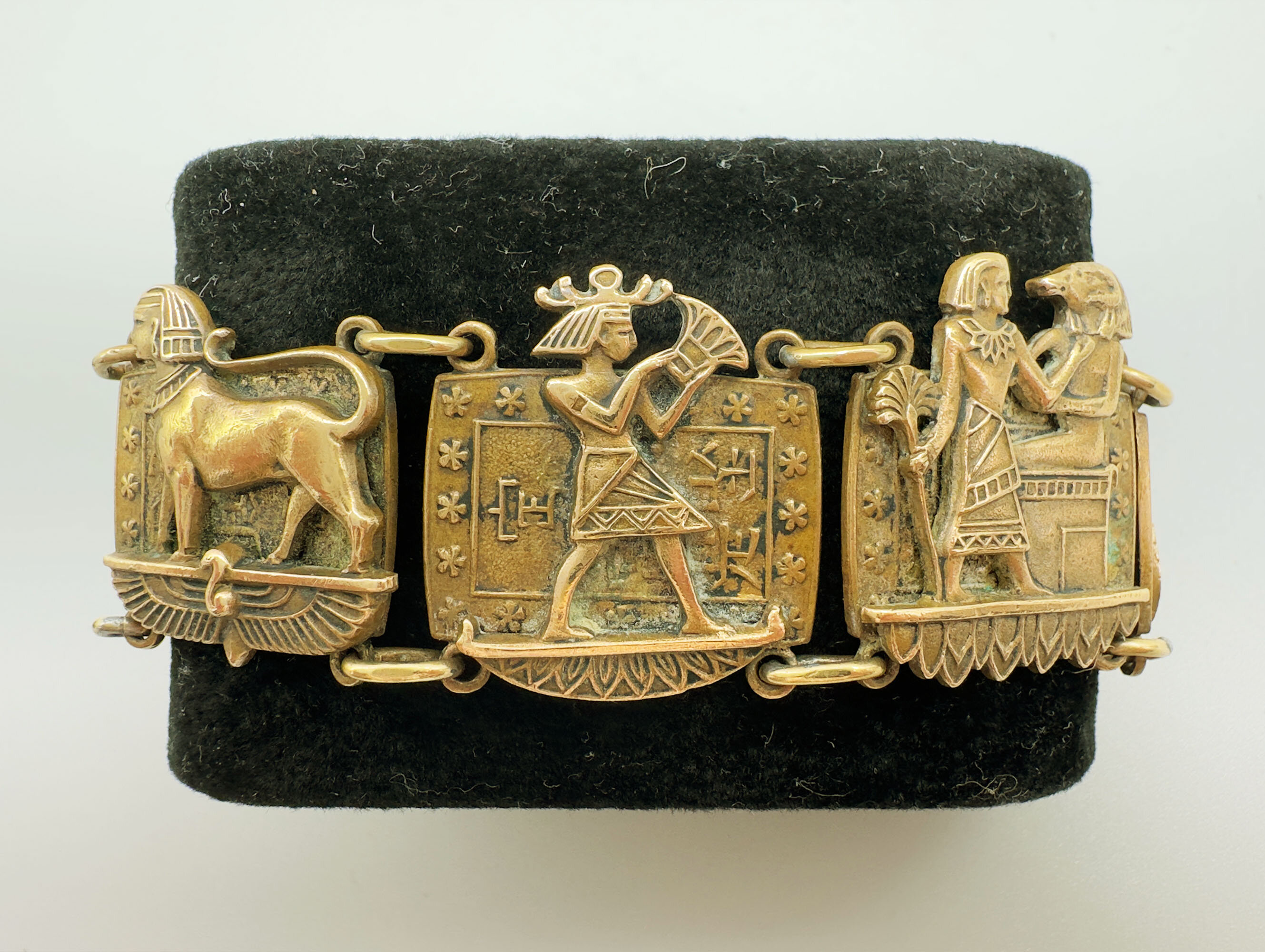
Egyptian Revival souvenir bracelet c1900
Price: £95